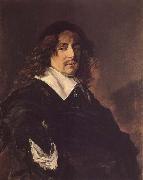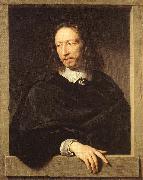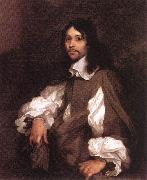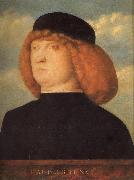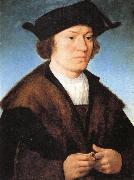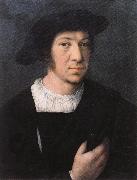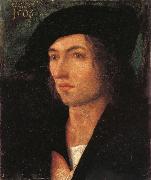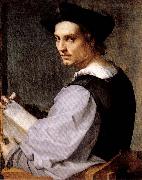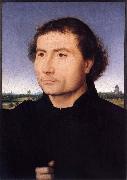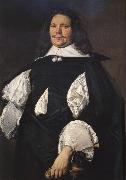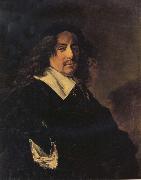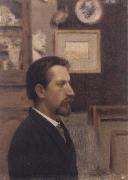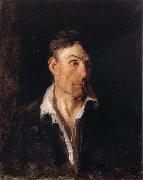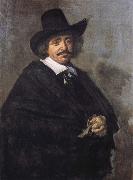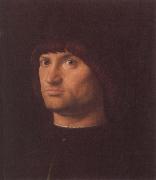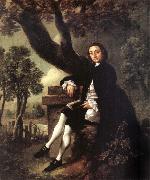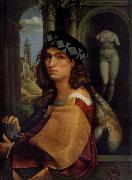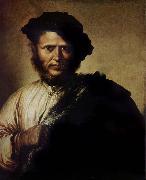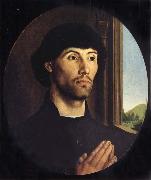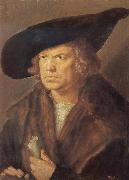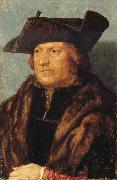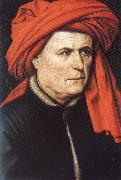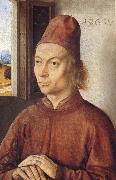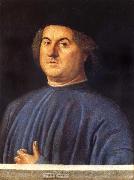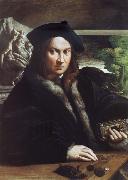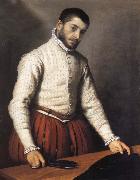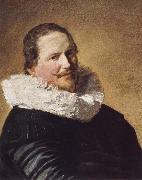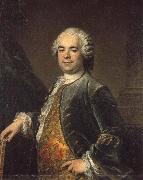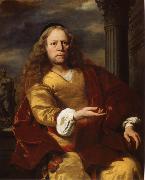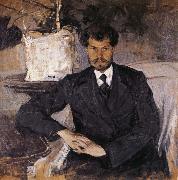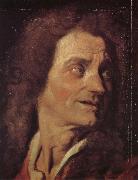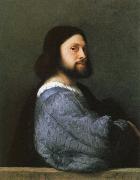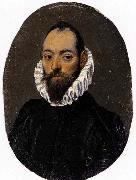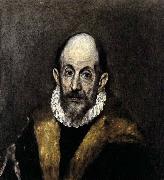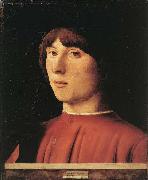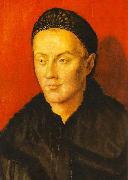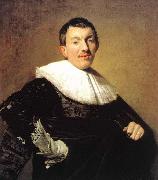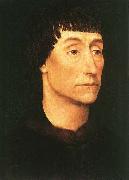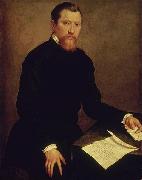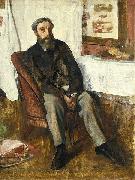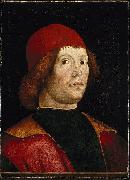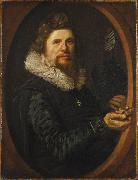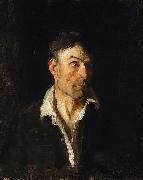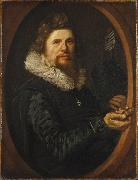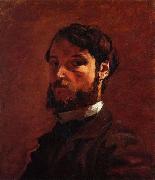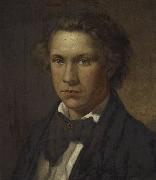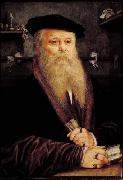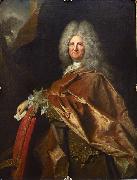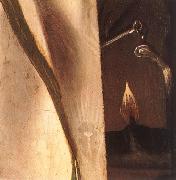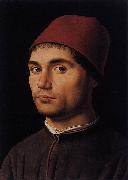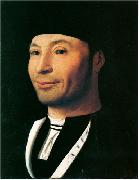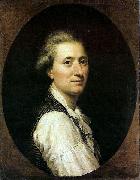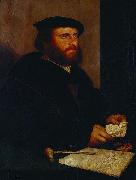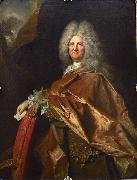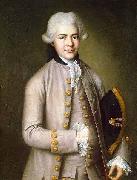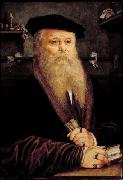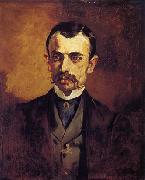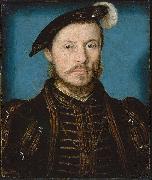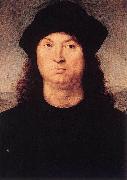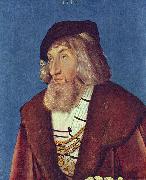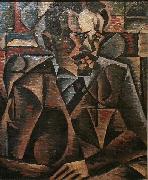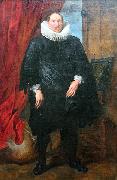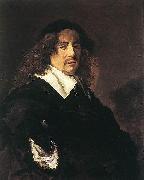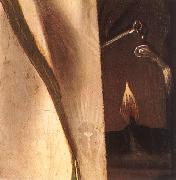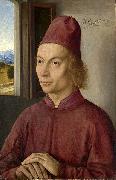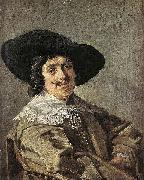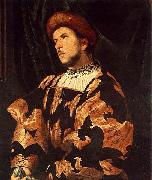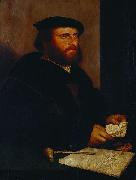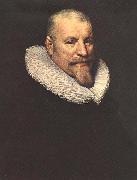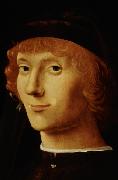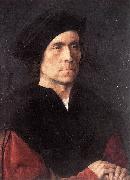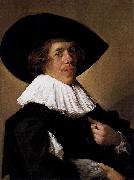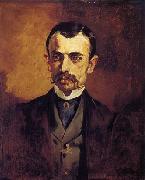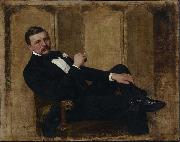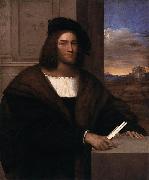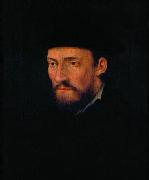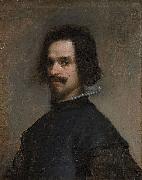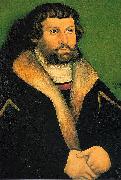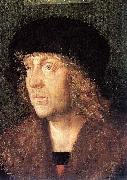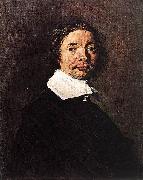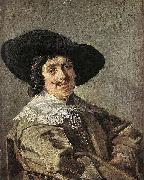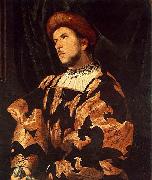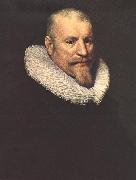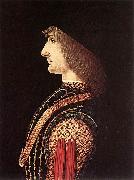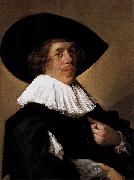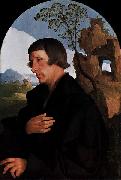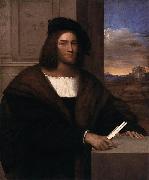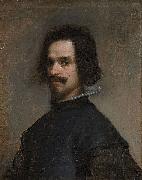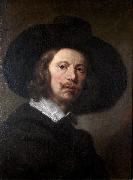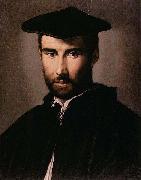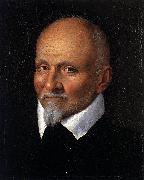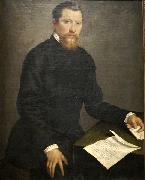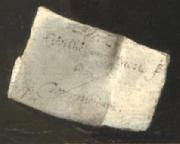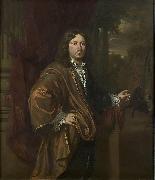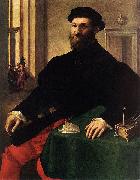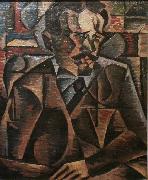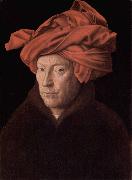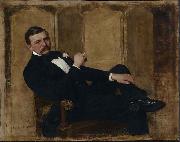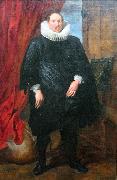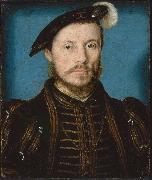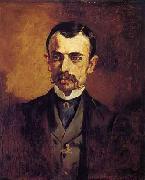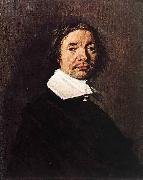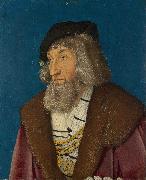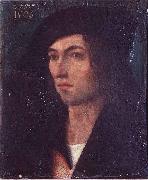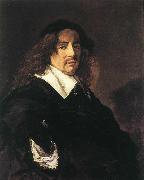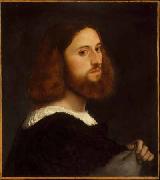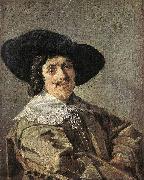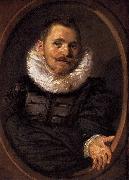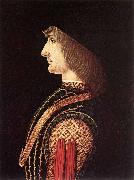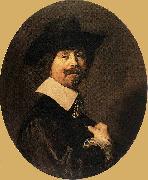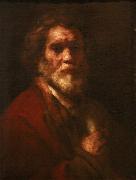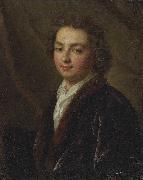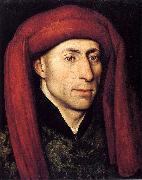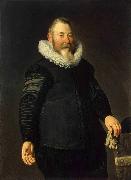Wholesale Oil Painting No Minimum |
|||||||||||
|
|
|||||||||||

|
|||||||||||
|
|
|
||||||||
Dieric Bouts1420-1475 Flemish Dieric Bouts Locations Dirk Bouts whose real name was Theodorik Romboutszoon, was probably born in Haarlem, where he may have studied under the painter Albert van Ouwater. Sometime before 1450 Bouts took up residence in the Flemish city of Louvain. His name appeared in the records of Louvain in 1457 and again in 1468, when he was appointed "city painter." It is likely that Bouts spent some time in Bruges, as his earliest work, the Infancy Altarpiece shows the distinct and strong influence of Petrus Christus, the leading master of that city after the death of Jan van Eyck. The slightly later Deposition Altarpiece (ca. 1450) displays strong connections with the style of Rogier van der Weyden in both the figure types and the composition. About 1460, the period of the Entombment in London, the early, formative influence of Petrus Christus had been almost totally displaced by that of Rogier, though Bouts personal vision began to emerge in the fluid and continuous landscape background. The great Last Supper Altarpiece (1464-1467) marks the high point of Bouts career. In this solemn and dignified masterpiece the painter achieved spiritual grandeur in the context of convincing physical reality. The central panel of the altarpiece is the most emphatically significant treatment of the theme of the Last Supper in Northern European art. The wings, which contain Old Testament prefigurations of the central theme, are freer and more loosely organized. Eschewing the symmetry and rigid axial construction of the main panel, Bouts produced rhythmic foreground compositions in combination with fluid and dramatic spatial recessions. In 1468 Bouts was commissioned to paint four panels on the subject of justice for the Town Hall of Louvain. At the painter death in 1475 only two of the paintings had been completed; they are among the most remarkable productions of his career. The unusual subjects, taken from the chronicles of a 12th-century historian, concern the wrongful execution by Emperor Otto III of one of his counts and the subsequent vindication of the nobleman by his wife. The finer of the panels represents the dramatic trial by fire which the wife was obliged to undergo to prove her husband innocence. Rich draperies and sumptuous colors are applied to tall angular forms to create a work of rare formal elegance and high decorative appeal. In order to dignify the event, however, the artist has employed restrained gestures and expressions as well as a completely rationalized spatial setting. As in the Last Supper Altarpiece, a sense of solemn and hieratic importance is expressed by means of an austere and rigid geometry in the construction of both persons and places. The late productions of Bouts workshop, such as the well-known Pearl of Brabant Altarpiece, are characterized by the close collaboration of the painter two sons, Dirk the Younger (1448-1491) and Aelbrecht (1455/1460-1549). In the paintings of his less gifted sons, the master distinctive figure style was appreciably altered, though Dirk the Younger appears to have retained much of his father sensitivity to the landscape. In addition to his innovations in the depiction of landscape, Bouts made a substantial contribution to the development of the portrait. His Portrait of a Man (1462) localizes the sitter in an enlarged architectural setting while permitting the interior space to merge with the exterior through an open window. For the first time in Northern painting a common bond was forged between a particularized individual and the universal world of nature. |
||||||||
|
|
||||||||
Portrait of a Man
Portrait of a Man Painting ID:: 202 |
1462
The National Gallery, London 1462 The National Gallery, London |
|||||||
|
|
||||||||
DOU, GerritDutch Baroque Era Painter, 1613-1675 Dutch painter. The first and most famous member of the group of artists referred to as the LEIDEN 'FINE' PAINTERS, he specialized in small-format paintings, the details and surfaces of which are carefully observed and meticulously rendered. He was greatly praised as a painter of artificial light by Samuel van Hoogstraten in 1678, and he was responsible for popularizing both the night scene and the 'niche' format, pictorial devices ultimately derived from the art of his famous master, Rembrandt. |
||||||||
|
|
||||||||
|
|
Portrait of a Man
Portrait of a Man Painting ID:: 19000 |
1642-46
Oil on panel
Aurora Art Fund 1642-46 Oil on panel Aurora Art Fund |
||||||
|
|
||||||||
Orlandi, DeodatoFlemish Northern Renaissance Painter, ca.1488-1541 |
||||||||
|
|
||||||||
|
|
Portrait of a Man
Portrait of a Man Painting ID:: 19681 |
Oil on panel
Galleria degli Uffizi, Florence. Oil on panel Galleria degli Uffizi, Florence. |
||||||
|
|
||||||||
Albrecht Durerb.May 21, 1471, Imperial Free City of Nernberg [Germany] d.April 6, 1528, Nernberg Albrecht Durer (May 21, 1471 ?C April 6, 1528) was a German painter, printmaker and theorist from Nuremberg. His still-famous works include the Apocalypse woodcuts, Knight, Death, and the Devil (1513), Saint Jerome in his Study (1514) and Melencolia I (1514), which has been the subject of extensive analysis and interpretation. His watercolours mark him as one of the first European landscape artists, while his ambitious woodcuts revolutionized the potential of that medium. D??rer introduction of classical motifs into Northern art, through his knowledge of Italian artists and German humanists, have secured his reputation as one of the most important figures of the Northern Renaissance. This is reinforced by his theoretical treatise which involve principles of mathematics, perspective and ideal proportions. His prints established his reputation across Europe when he was still in his twenties, and he has been conventionally regarded as the greatest artist of the Renaissance in Northern Europe ever since. |
||||||||
|
|
||||||||
|
|
Portrait of a Man
Portrait of a Man Painting ID:: 28090 |
mk61
1524
Oil on canvas
50x36cm
mk61 1524 Oil on canvas 50x36cm |
||||||
|
|
||||||||
TitianItalian High Renaissance Painter, ca.1485-1576 Italian painter active in Venice. As a young man he was taught by the Bellini family and worked closely with Giorgione. His early works are so similar in style to Giorgione's as to be indistinguishable, but soon after Giorgione's early death Titian established himself as the leading painter of the Republic of Venice. Among his most important religious paintings is the revolutionary and monumental Assumption (1516 ?C 18) for Santa Maria dei Frari, in which the Virgin ascends to heaven in a blaze of colour accompanied by a semicircle of angels. Titian was also interested in mythological themes, and his many depictions of Venus display his work's sheer beauty and inherent eroticism. Bacchus and Ariadne (1520 ?C 23), with its pagan abandon, is one of the greatest works of Renaissance art. Titian was sought after for his psychologically penetrating portraits, which include portrayals of leading Italian aristocrats, religious figures, and Emperor Charles V. He reached the height of his powers in The Rape of Europa (c. 1559 ?C 62), one of several paintings done for Philip II of Spain. He was recognized as supremely gifted in his lifetime, and his reputation has never declined. |
||||||||
|
|
||||||||
|
|
Portrait of a Man
Portrait of a Man Painting ID:: 28886 |
mk65
Oil on canvas
31 7/8x23 5/8in
mk65 Oil on canvas 31 7/8x23 5/8in |
||||||
|
|
||||||||
FOSCHI, Pier FrancescoItalian painter, Florentine school (b. 1502, Firenze, d. 1567, Firenze) was an Italian painter active in Florence in a Mannerist style. He was pupil of Andrea del Sarto and assisted Pontormo with his frescoes at Careggi in 1536. He completed 3 altarpieces, commissioned in 1540C1545 for the church of Santo Spirito in Florence: an Immaculate Conception, Resurrection , and a Transfiguration. Foschi was also influenced by and Il Bronzino. One of his pupils was Alessandro Fei. Also called Pier Francesco di Jacopo Foschi or Toschi. He was the son of Pierfrancesco di Jacopo Sandro Foschi, known for his Madonna and Child with the Infant Saint John. (Utah Museum of Fine Arts). Foschi is best noted for his portraits painted between 1530 and 1540, including his Portrait of a Lady (Museo Thyssen-Bornemisza), Portrait of a Young Man Weaving a Wreath of Flowers (Utah Museum of Fine Arts), and his Portrait of a Man, (Uffizi Gallery). In his portraits he adhered to Mannerist style, utilizing a slight Contrapposto in the sitter with their head turned from the body. This pose gave the depiction a spontaneity and sense of movement for the innovative Mannerists, but was eventually so formulaic that it lost its intention of originality. |
||||||||
|
|
||||||||
|
|
Portrait of a Man
Portrait of a Man Painting ID:: 28979 |
mk65
Oil on panel
25 5/8x19 11/16in
Uffizi,Gallery
mk65 Oil on panel 25 5/8x19 11/16in Uffizi,Gallery |
||||||
|
|
||||||||
Palma Vecchio1480-1528 Italian Palma Vecchio Gallery His birthdate is calculated on Vasari testimony (1550) that he died aged 48. By March 1510 he was in Venice, where he spent his working life. The stylistic evidence of his earliest works suggests that he was apprenticed to fellow Bergamasque artist Andrea Previtali, who had studied under Giovanni Bellini. A signed Virgin Reading (1508-10; Berlin, Gemeldegal.), which may be Palma Vecchio earliest surviving painting, is strongly reminiscent of his teacher. Previtali returned to Bergamo in 1511, and the main corpus of Palma work can be dated from this time. Palma Vecchio oeuvre reflects the change from an early to a high Renaissance conception of the human figure in secular and religious art. He specialized in certain themes that became established in the repertory of genres of the Venetian school in the generation after him. The principal of these were the wide-format SACRA CONVERSAZIONE |
||||||||
|
|
||||||||
|
|
Portrait of a Man
Portrait of a Man Painting ID:: 29287 |
mk65
Oil on canvas
37x28"
mk65 Oil on canvas 37x28" |
||||||
|
|
||||||||
POURBUS, Frans the ElderNetherlandish painter (b. 1545, Bruges, d. 1581, Antwerpen). was a Flemish Renaissance painter. He was known primarily for his religious and portrait painting and worked mainly in Antwerp. His father was painter Pieter Pourbus and his son was painter Frans Pourbus the younger. |
||||||||
|
|
||||||||
|
|
Portrait of a Man
Portrait of a Man Painting ID:: 29293 |
mk65
Oil on panel
34x31"
mk65 Oil on panel 34x31" |
||||||
|
|
||||||||
MORONI, Giovanni BattistaItalian Mannerist Painter, ca.1520-1578 .Italian painter. He was the most significant painter of the 16th-century school of Bergamo and is best known for his portraits, which feature a naturalistic rendering of both faces and costume and an objective approach to character. |
||||||||
|
|
||||||||
|
|
Portrait of a Man
Portrait of a Man Painting ID:: 29300 |
mk65
Oil on canvas
23x19 1/2"
mk65 Oil on canvas 23x19 1/2" |
||||||
|
|
||||||||
VERONESE (Paolo Caliari)Italian Mannerist Painter, ca.1528-1588 |
||||||||
|
|
||||||||
|
|
Portrait of a Man
Portrait of a Man Painting ID:: 29301 |
mk65
Oil on canvas
25x20"
mk65 Oil on canvas 25x20" |
||||||
|
|
||||||||
Frans Hals1580-1666 Frans Hals Galleries In the field of group portraiture his work is equalled only by that of Rembrandt. Hals's portraits, both individual and group, have an immediacy and brilliance that bring his sitters to life in a way previously unknown in the Netherlands. This effect, achieved by strong Baroque designs and the innovative use of loose brushstrokes to depict light on form, was not to the taste of critics in the 18th century and the early 19th, when his work was characterized as lazy and unfinished. However, with the rise of Realism and, later, Impressionism, Hals was hailed as a modern painter before his time. Since then his works have always been popular. |
||||||||
|
|
||||||||
|
|
Portrait of a Man
Portrait of a Man Painting ID:: 29328 |
mk65
Oil o canvas
33x26"
mk65 Oil o canvas 33x26" |
||||||
|
|
||||||||
Philippe de Champaigne1602-1674 Philippe de Champaigne Locations His artistic style was varied: far from being limited to the realism traditionally associated with Flemish painters, it developed from late Mannerism to the powerful lyricism of the Baroque. It was influenced as much by Rubens as by Vouet, culminating in an aesthetic vision of the world and of humanity that was based on an analytic view of appearances and on psychological truth. He was perhaps the greatest portrait painter of 17th-century France. At the same time he was one of the principal instigators of the Classical tendency and a founder-member of the Acadmie Royale de Peinture et de Sculpture. His growing commitment to the Jansenist religious movement (see JANSENISM) and the severe plainness of the works that it inspired has led to his being sometimes considered to typify Jansenist thinking, with its iconoclastic impulse, in spite of the opposing evidence of his other paintings. He should be seen as an example of the successful integration of foreign elements into French culture and as the representative of the most intellectual current of French painting. |
||||||||
|
|
||||||||
|
|
Portrait of a Man
Portrait of a Man Painting ID:: 29524 |
1650
Oil on canvas, 91 x 72 cm 1650 Oil on canvas, 91 x 72 cm |
||||||
|
|
||||||||
Bourdon, SebastienFrench, 1616-1671.French painter. Bourdon was active in Rome (1634 C37), in Sweden (1652 C54) as Queen Christina's court portrait painter, and in Paris; he also worked in his native Montpellier, where he painted The Fall of Simon Magus for the cathedral. The Finding of Moses is in the National Gallery of Art, Washington, D.C. |
||||||||
|
|
||||||||
|
|
Portrait of a Man
Portrait of a Man Painting ID:: 29525 |
Oil on canvas, 105 x 65 cm Oil on canvas, 105 x 65 cm |
||||||
|
|
||||||||
HALS, FransDutch painter (b. 1580, Antwerpen, d. 1666, Haarlem). |
||||||||
|
|
||||||||
|
|
Portrait of a man
Portrait of a man Painting ID:: 29621 |
1660-66
Oil on canvas, 85,8 x 66,9 cm 1660-66 Oil on canvas, 85,8 x 66,9 cm |
||||||
|
|
||||||||
Giovanni BelliniItalian High Renaissance Painter, ca.1430-1516 (b ?1431-6; d Venice, 29 Nov 1516). Painter and draughtsman, son of (1) Jacopo Bellini. Although the professional needs of his family background may have encouraged him to specialize at an early date in devotional painting, by the 1480s he had become a leading master in all types of painting practised in 15th-century Venice. Later, towards the end of his long life, he added the new genres of mythological painting and secular allegory to his repertory of subject-matter. His increasing dominance of Venetian art led to an enormous expansion of his workshop after c. 1490; and this provided the training-ground not only for his numerous shop-hands and imitators (generically known as Belliniani) but probably also for a number of major Venetian painters of the next generation. Throughout his career, Giovanni showed an extraordinary capacity for absorbing a wide range of artistic influences, both from within Venetian tradition and from outside. He also oversaw a technical revolution in the art of painting, involving the gradual abandonment of the traditional Italian use of egg tempera in favour of the technique of oil painting pioneered in the Netherlands. It was thanks to Giovanni Bellini that the Venetian school of painting was transformed during the later 15th century from one mainly of local significance to one with an international reputation. He thus set the stage for the triumphs of Venetian painting in the 16th century and for the central contribution that Venice was to make to the history of European art. |
||||||||
|
|
||||||||
|
|
Portrait of a Man
Portrait of a Man Painting ID:: 29803 |
mk67
Oil on panel
12 3/16x10 1/4in
Uffizi,Gallery
mk67 Oil on panel 12 3/16x10 1/4in Uffizi,Gallery |
||||||
|
|
||||||||
PARMIGIANINOItalian Mannerist Painter, 1503-1540 Italian painter, draughtsman and printmaker. Beginning a career that was to last only two decades, he moved from precocious success in the shadow of Correggio in Parma to be hailed in the Rome of Clement VII as Raphael reborn. There he executed few large-scale works but was introduced to printmaking. After the Sack of Rome in 1527, he returned to northern Italy, where in his final decade he created some of his most markedly Mannerist works. Equally gifted as a painter of small panels and large-scale frescoes both sacred and profane, he was also one of the most penetrating portrait painters of his age. |
||||||||
|
|
||||||||
|
|
Portrait of a Man
Portrait of a Man Painting ID:: 29882 |
mk67
Oil on panel
34 5/8x23 15/26in
Uffizi,Gallery
mk67 Oil on panel 34 5/8x23 15/26in Uffizi,Gallery |
||||||
|
|
||||||||
Joos van cleveFlemish Northern Renaissance Painter, ca.1485-1540 |
||||||||
|
|
||||||||
|
|
Portrait of a Man
Portrait of a Man Painting ID:: 29917 |
mk67
OIl on panel
22 7/16x16 9/16in
Uffizi,Gallery
mk67 OIl on panel 22 7/16x16 9/16in Uffizi,Gallery |
||||||
|
|
||||||||
Bernard van orleyFlemish Northern Renaissance Painter , c.1488-1551 |
||||||||
|
|
||||||||
|
|
Portrait of a Man
Portrait of a Man Painting ID:: 29920 |
mk67
Oil on panel
14 9/16x10 5/8in
Uffizi,Gallery
mk67 Oil on panel 14 9/16x10 5/8in Uffizi,Gallery |
||||||
|
|
||||||||
BURGKMAIR, HansGerman Northern Renaissance Painter, 1473-1531 German artist, famous for his paintings and woodcuts. A friend of D??rer, he studied in Strasburg and Venice, as well as Augsburg. He executed the woodcuts for Weißkunig and some of those in Teuerdank. His greatest works are the altar-pieces in Munich and Augsburg. |
||||||||
|
|
||||||||
|
|
Portrait of a Man
Portrait of a Man Painting ID:: 29930 |
mk67
Parchment over panel
10 11/16X8 7/8in
Uffizi,Gallery
mk67 Parchment over panel 10 11/16X8 7/8in Uffizi,Gallery |
||||||
|
|
||||||||
GOES, Hugo van derNetherlandish Northern Renaissance Painter, ca.1440-1482 South Netherlandish painter. In 1467 he enrolled as master in the Ghent painters' guild, sponsored by Joos van Wassenhove, master painter in Ghent in 1464 after registering in Antwerp in 1460. In 1469 the two together acted as guarantors for the illuminator Sanders Bening when he became a master, and it was from Hugo that Joos borrowed money when he went to Rome. Sanders Bening was married to Kathelijn van der Goes, perhaps Hugo's sister. Hugo's status within the guild is further attested by the fact that he was guarantor for two other painters in 1471 and 1475, that he was one of the dean's jurors in 1468-9 and that he himself served as dean from towards the end of 1473-4 to at least 18 August 1475. |
||||||||
|
|
||||||||
|
|
Portrait of a Man
Portrait of a Man Painting ID:: 31301 |
c. 1475
Tempera on wood, 31,8 x 26,7 cm
Metropolitan Museum of Art, New York c. 1475 Tempera on wood, 31,8 x 26,7 cm Metropolitan Museum of Art, New York |
||||||
|
|
||||||||
Antonello da Messina1430-1479 Italian Antonello da Messina Galleries Antonello was born at Messina around 1429-1431, to Giovanni de Antonio Mazonus and Garita (Margherita). He was probably apprenticed in his native city and in Palermo. Around the year 1450, according to a 1524 letter of the Neapolitan humanist Pietro Summonte,[1] he was a pupil of the painter Niccol?? Colantonio at Naples, then one of the most active centres of Renaissance arts. Around 1455 he painted the so-called Sibiu Crucifixion, which was inspired by the Flemish Calvaries and is housed in the Muzeul de Art?? in Bucharest. Of the same years is the Crucifixion in the Royal Museum of Antwerp: his early works shows a marked Flemish influence, which it is now understood he derived from his master Colantonio and from works by Rogier van der Weyden and Jan van Eyck that belonged to Colantonio's patron, Alfonso V of Aragon; his biographer Vasari remarked that Antonello saw at Naples an oil painting by Jan Van Eyck (the "Lomellini Tryptych") belonging to King Alphonso of Aragon; Vasari's further narrative, that being struck by the new method, set out for The Netherlands to acquire a knowledge of the process from Van Eyck's disciples is discredited today. Another theory, supported only by vague documentary evidence, suggests that in 1456 Antonello visited Milan, where he might have met Van Eyck's most accomplished follower, Petrus Christus. Since Antonello was one of the first Italians to master Eyckian oil painting, and Christus was the first Netherlandish painter to learn Italian linear perspective, their meeting is a tempting answer to both questions. But in fact, neither artist is known for certain to have been in Milan at the time. The following year, Antonello received his first commission as an independent artist, a banner for the Confraternit?? di San Michele dei Gerbini in Reggio Calabria. At this date, he was already married, and his son Jacobello had been born. In 1460, his father is mentioned leasing a brigantine to bring back Antonello and his family from Amaltea, a town in Calabria. In that year, Antonello painted the so-called Salting Madonna, in which standard iconography and Flemish style are backed by a greater attention in the volumetric proportions of the figures, probably coming from his knowledge of some works by Piero della Francesca. Also from around 1460 are the two small panels depicting Abraham Served by the Angels and St. Jerome Penitent now in the Museo Nazionale della Magna Grecia in Reggio Calabria. In 1461 his younger brother Giordano entered Antonello's workshop, signing a three-years' contract. Of that year is a Madonna with Child for the Messinese nobleman Giovanni Mirulla, now lost. Between 1465-1470, Antonello finished a Portrait of a Man now at Cefal??. His portraits are noteworthy for his characteristic use of the three-quarter view, typical of the Flemish School, whereas almost all Italian painters adopted the medal profile pose. Antonello travelled to Venice around 1470, to see Giovanni Bellini's paintings. The Palermo Annunciation.In this year he executed his first signed and dated work, the Salvator Mundi. Back at Sicily, Antonello finished the St. Gregory's Polyptych. In 1474, he painted the Annunciation, now in Syracuse, and the St. Jerome in His Study, one of his most famous paintings. The following year he began his regular sojourn in Venice, where he remained until the fall of 1476. His works of this period begin to show a greater attention to the human figure, regarding both anatomy and expressivity, according to the influence of Piero della Francesca and Bellini. His most famous pictures dating from this period include the Condottiero (Louvre, illustration), the San Cassiano Altarpiece and the St. Sebastian (see selected works for details). The San Cassiano Altarpiece was especially influential on Venetian painters, as it was one of the first of the large compositions in the sacra conversazione format which was perfected by Giovanni Bellini (Antonello's surviving work in Vienna is only a fragment of the much larger original). Antonello returned briefly to Sicily in 1476, where he painted the famous Virgin Annunciate, now in the Palazzo Abatellis at Palermo. He died at Messina in 1479: his testament dates from February of that year, and he is documented as no longer alive two months later. Some of his last works remained unfinished, but were completed by his son Jacobello. |
||||||||
|
|
||||||||
|
|
Portrait of a Man
Portrait of a Man Painting ID:: 31306 |
nn07
c.1475
36x25cm
nn07 c.1475 36x25cm |
||||||
|
|
||||||||
Hans MemlingNetherlandish Northern Renaissance Painter, ca.1435-1494 Born in Seligenstadt, near Frankfurt in the Middle Rhein region, it is believed that Memling served his apprenticeship at Mainz or Cologne, and later worked in the Netherlands under Rogier van der Weyden (c. 1455?C1460). He then went to Bruges around 1465. There is an apocryphical story that he was a wounded at the Battle of Nancy, sheltered and cured by the Hospitallers at Bruges, and that to show his gratitude he refused payment for a picture he had painted for them. Memling did indeed paint for the Hospitallers, but he painted several pictures for them, in 1479 and 1480, and it is likely that he was known to his patrons of St John, prior to the Battle of Nancy. Memling is connected with military operations only in a distant sense. His name appears on a list of subscribers to the loan which was raised by Maximilian I of Austria, to defend against hostilities towards France in 1480. In 1477, when he was incorrectly claimed to have been killed, he was under contract to create an altarpiece for the gild-chapel of the booksellers of Bruges. This altarpiece, under the name of the Seven Griefs of Mary, is now in the Gallery of Turin. It is one of the fine creations of his more mature period. It is not inferior in any way to those of 1479 in the hospital of St. John, which for their part are hardly less interesting as illustrative of the master's power than The Last Judgment which can be found since the 1470s in the St. Mary's Church, Gda??sk. Critical opinion has been unanimous in assigning this altarpiece to Memling. This affirms that Memling was a resident and a skilled artist at Bruges in 1473; for the Last Judgment was undoubtedly painted and sold to a merchant at Bruges, who shipped it there on board of a vessel bound to the Mediterranean, which was captured by Danzig privateer Paul Beneke in that very year. This purchase of his pictures by an agent of the Medici demonstrates that he had a considerable reputation. |
||||||||
|
|
||||||||
|
|
Portrait of a man
Portrait of a man Painting ID:: 31735 |
mk76
Painted c.1470
Oil on panel
13 1/8x9 1/8in
mk76 Painted c.1470 Oil on panel 13 1/8x9 1/8in |
||||||
|
|
||||||||
HALS, FransDutch painter (b. 1580, Antwerpen, d. 1666, Haarlem). |
||||||||
|
|
||||||||
|
|
Portrait of a man
Portrait of a man Painting ID:: 31759 |
mk76
Painted c.1660
Oil on canvas
44 1/2x32 1/4in
mk76 Painted c.1660 Oil on canvas 44 1/2x32 1/4in |
||||||
|
|
||||||||
Frans Hals1580-1666 Frans Hals Galleries In the field of group portraiture his work is equalled only by that of Rembrandt. Hals's portraits, both individual and group, have an immediacy and brilliance that bring his sitters to life in a way previously unknown in the Netherlands. This effect, achieved by strong Baroque designs and the innovative use of loose brushstrokes to depict light on form, was not to the taste of critics in the 18th century and the early 19th, when his work was characterized as lazy and unfinished. However, with the rise of Realism and, later, Impressionism, Hals was hailed as a modern painter before his time. Since then his works have always been popular. |
||||||||
|
|
||||||||
|
|
Portrait of a Man
Portrait of a Man Painting ID:: 34274 |
mk91
Oil on canvas
84.5x67
mk91 Oil on canvas 84.5x67 |
||||||
|
|
||||||||
Fernand Khnopff1858-1921 Belgian Fernand Khnopff Gallery Fernand Khnopff was born to a wealthy family that was part of the high bourgeoisie for generations. Khnopff's ancestors had lived in Flanders since the early 17th-century but were of Austrian and Portuguese descent. Most male members of his family had been lawyers or judges, and young Fernand was destined for a juridical career. In his early childhood (1859-1864) he lived in Bruges where his father was appointed Substitut Du Procureur Du Roi. His childhood memories of the medieval city of Bruges would play a significant role in his later work. In 1864 the family moved to Brussels. To please his parents he went to law school at the Free University of Brussels (now divided into the Universite Libre de Bruxelles and the Vrije Universiteit Brussel) when he was 18 years old. During this period he developed a passion for literature, discovering the works of Baudelaire, Flaubert, Leconte de Lisle and other mostly French authors. With his younger brother Georges Khnopff - also a passionate amateur of contemporary music and poetry - he started to frequent Jeune Belgique ("Young Belgium"), a group of young writers including Max Waller, Georges Rodenbach, Iwan Gilkin and Emile Verhaeren. Khnopff left University due to a lack of interest in his law studies and began to frequent the studio of Xavier Mellery, who made him familiar with the art of painting. On the 25th of October 1876 he enrolled for the Cours De Dessin Apres Nature ("course of drawing after nature") at the Academie Royale des Beaux-Arts en Bruxelles. At the Academie, his most famous fellow student was James Ensor, whom he disliked from the start. Between 1877 and 1880 Khnopff made several trips to Paris where he discovered the work of Delacroix, Ingres, Moreau and Stevens. At the Paris World Fair of 1878 he became acquainted with the oeuvre of Millais and Burne-Jones. During his last year at the Acad??mie in 1878-1879 he neglected his classes in Brussels and lived for a while in Passy, were he visited the Cours Libres of Jules Joseph Lefebvre at the Acad??mie Julian. |
||||||||
|
|
||||||||
|
|
Portrait of a Man
Portrait of a Man Painting ID:: 34961 |
mk98
c.1885
Oil on panel
25x185
mk98 c.1885 Oil on panel 25x185 |
||||||
|
|
||||||||
Frank Duveneck1848-1919 Frank Duveneck Gallery Frank Duveneck (October 9, 1848 ?C January 3, 1919) was an American figure and portrait painter. Duveneck was born in Covington, Kentucky, the son of a German immigrant Bernard Decker. Decker died when Frank was only a year old and his widow remarried Joseph Duveneck. By the age of fifteen Frank had begun the study of art under the tutelage of a local painter, Johann Schmitt and had been apprenticed to a German firm of church decorators. While having grown up in Covington, Duveneck was a part of the German community in Cincinnati, Ohio. However, due to his Catholic beliefs and German heritage, he was an outsider as far as the artistic community of Cincinnati was concerned. In 1869 he went abroad to study with Wilhelm von Diez and Wilhelm Leibl at the Royal Academy of M??nich, where he learned a dark, realistic and direct style of painting. He subsequently became one of the young American painters ?? others were William Merritt Chase, John Henry Twachtman, and Walter Shirlaw ?? who in the 1870s overturned the traditions of the Hudson River School and started a new art movement characterized by a greater freedom of paint application. |
||||||||
|
|
||||||||
|
|
Portrait of a Man
Portrait of a Man Painting ID:: 39082 |
mk140
circa 1876
Oil on canvas
75.5x60.7cm
mk140 circa 1876 Oil on canvas 75.5x60.7cm |
||||||
|
|
||||||||
Frans Hals1580-1666 Frans Hals Galleries In the field of group portraiture his work is equalled only by that of Rembrandt. Hals's portraits, both individual and group, have an immediacy and brilliance that bring his sitters to life in a way previously unknown in the Netherlands. This effect, achieved by strong Baroque designs and the innovative use of loose brushstrokes to depict light on form, was not to the taste of critics in the 18th century and the early 19th, when his work was characterized as lazy and unfinished. However, with the rise of Realism and, later, Impressionism, Hals was hailed as a modern painter before his time. Since then his works have always been popular. |
||||||||
|
|
||||||||
|
|
Portrait of a man
Portrait of a man Painting ID:: 39688 |
mk150
c.1654/5
Canvas
108x79.5cm
mk150 c.1654/5 Canvas 108x79.5cm |
||||||
|
|
||||||||
Antonello da Messina1430-1479 Italian Antonello da Messina Galleries Antonello was born at Messina around 1429-1431, to Giovanni de Antonio Mazonus and Garita (Margherita). He was probably apprenticed in his native city and in Palermo. Around the year 1450, according to a 1524 letter of the Neapolitan humanist Pietro Summonte,[1] he was a pupil of the painter Niccol?? Colantonio at Naples, then one of the most active centres of Renaissance arts. Around 1455 he painted the so-called Sibiu Crucifixion, which was inspired by the Flemish Calvaries and is housed in the Muzeul de Art?? in Bucharest. Of the same years is the Crucifixion in the Royal Museum of Antwerp: his early works shows a marked Flemish influence, which it is now understood he derived from his master Colantonio and from works by Rogier van der Weyden and Jan van Eyck that belonged to Colantonio's patron, Alfonso V of Aragon; his biographer Vasari remarked that Antonello saw at Naples an oil painting by Jan Van Eyck (the "Lomellini Tryptych") belonging to King Alphonso of Aragon; Vasari's further narrative, that being struck by the new method, set out for The Netherlands to acquire a knowledge of the process from Van Eyck's disciples is discredited today. Another theory, supported only by vague documentary evidence, suggests that in 1456 Antonello visited Milan, where he might have met Van Eyck's most accomplished follower, Petrus Christus. Since Antonello was one of the first Italians to master Eyckian oil painting, and Christus was the first Netherlandish painter to learn Italian linear perspective, their meeting is a tempting answer to both questions. But in fact, neither artist is known for certain to have been in Milan at the time. The following year, Antonello received his first commission as an independent artist, a banner for the Confraternit?? di San Michele dei Gerbini in Reggio Calabria. At this date, he was already married, and his son Jacobello had been born. In 1460, his father is mentioned leasing a brigantine to bring back Antonello and his family from Amaltea, a town in Calabria. In that year, Antonello painted the so-called Salting Madonna, in which standard iconography and Flemish style are backed by a greater attention in the volumetric proportions of the figures, probably coming from his knowledge of some works by Piero della Francesca. Also from around 1460 are the two small panels depicting Abraham Served by the Angels and St. Jerome Penitent now in the Museo Nazionale della Magna Grecia in Reggio Calabria. In 1461 his younger brother Giordano entered Antonello's workshop, signing a three-years' contract. Of that year is a Madonna with Child for the Messinese nobleman Giovanni Mirulla, now lost. Between 1465-1470, Antonello finished a Portrait of a Man now at Cefal??. His portraits are noteworthy for his characteristic use of the three-quarter view, typical of the Flemish School, whereas almost all Italian painters adopted the medal profile pose. Antonello travelled to Venice around 1470, to see Giovanni Bellini's paintings. The Palermo Annunciation.In this year he executed his first signed and dated work, the Salvator Mundi. Back at Sicily, Antonello finished the St. Gregory's Polyptych. In 1474, he painted the Annunciation, now in Syracuse, and the St. Jerome in His Study, one of his most famous paintings. The following year he began his regular sojourn in Venice, where he remained until the fall of 1476. His works of this period begin to show a greater attention to the human figure, regarding both anatomy and expressivity, according to the influence of Piero della Francesca and Bellini. His most famous pictures dating from this period include the Condottiero (Louvre, illustration), the San Cassiano Altarpiece and the St. Sebastian (see selected works for details). The San Cassiano Altarpiece was especially influential on Venetian painters, as it was one of the first of the large compositions in the sacra conversazione format which was perfected by Giovanni Bellini (Antonello's surviving work in Vienna is only a fragment of the much larger original). Antonello returned briefly to Sicily in 1476, where he painted the famous Virgin Annunciate, now in the Palazzo Abatellis at Palermo. He died at Messina in 1479: his testament dates from February of that year, and he is documented as no longer alive two months later. Some of his last works remained unfinished, but were completed by his son Jacobello. |
||||||||
|
|
||||||||
|
|
Portrait of a Man
Portrait of a Man Painting ID:: 40237 |
mk156
1475
Oil on panel
36x30cm
mk156 1475 Oil on panel 36x30cm |
||||||
|
|
||||||||
Francis HaymanEnglish Painter, 1708-1776,English painter and illustrator. He was in London at the age of 10, and from 1718 until c. 1725 he was apprenticed to Robert Brown (d 1753), a decorative painter. From 1732 Hayman was employed as a scene painter at Goodman's Fields Theatre, where he painted allegorical works such as The King Attended by Peace, with Liberty and Justice Trampling on Tyranny and Oppression on the pit ceiling (destr.). He moved to Drury Lane Theatre in 1736, shortly before the Licensing Act closed Goodman's Fields. At Drury Lane he painted scenery for Thomas Arne's masque The Fall of Phaeton (1736) and was praised for his naturalistic landscapes. From the late 1730s he began accepting commissions for portraits and conversation pieces. His success in the field of portraiture rested on the dearth of good portrait painters in England at the time and his exploitation of a growing middle-class clientele. Hayman painted portraits of doctors, literary men and actors. |
||||||||
|
|
||||||||
|
|
Portrait of a Man
Portrait of a Man Painting ID:: 40927 |
mk158
c.1747
mk158 c.1747 |
||||||
|
|
||||||||
CAPRIOLO, DomenicoItalian painter, Venetian school (b. 1494, Venezia, d. 1528, Treviso) Italian painter. He moved from Venice to Treviso c. 1517, where he is well documented (though there is little about his painting). In 1518-19 he married Camilla, daughter of the painter Pier Maria Pennacchi. A coherent body of work executed between 1518 and 1528 has been reconstructed. Capriolo's first secure work, the Adoration of the Shepherds (Treviso, Mus. Civ.), signed and dated 1518, has a formal structure reminiscent of the late style of Giovanni Bellini, with the broader chromatic range of Palma Vecchio and a crepuscular light that recalls the Venetian works of Giovanni Girolamo Savoldo or Giovanni da Asola ( fl 1512-31). The Assumption in Treviso Cathedral, commissioned in 1520, shows, in its spiralling movement, the influence of the contemporary frescoes of Pordenone in the nearby Malchiostro Chapel. In the Legend of the Doubting Midwife (Treviso, Mus. Civ.), signed and dated 1524, the influence of Savoldo is greater than that of Palma. This is also apparent in the altarpiece of the parish church of Ponzano Veneto (Treviso), dated 1525. The portrait of Lelio Torelli (Barnard Castle, Bowes Mus.), signed and dated 1528, Capriolo's last known work, seems by contrast to reflect local models of portraiture and lies somewhere between the styles of Sebastiano Florigerio and Bernardino Licinio. Other works assigned to Capriolo include: the altarpieces of the parish churches of Cavasagra and Spercenigo, near Treviso; the Adoration of the Shepherds in the sacristy of Serravalle Cathedral at Vittorio Veneto; a fragment of a Nativity (Venice, Mus. Correr); two paintings of the Virgin and Child with Saints (Bucharest, Mus. A.; Conegliano, Mus. Civ. Castello). |
||||||||
|
|
||||||||
|
|
Portrait of a man
Portrait of a man Painting ID:: 40981 |
mk159
1512
Oil on canvas
117x85CM
mk159 1512 Oil on canvas 117x85CM |
||||||
|
|
||||||||
Salvator Rosa1615-1673 Italian Salvator Rosa Galleries Salvatore Rosa (1615 - March 15, 1673) was an Italian Baroque painter, poet and printmaker, active in Naples, Rome and Florence. As a painter, he is best known as an "unorthodox and extravagant" and a "perpetual rebel" proto-Romantic. His life and writings were equally colorful. He continued apprenticeship with Falcone, helping him complete his battlepiece canvases. In that studio, it is said that Lanfranco took notice of his work, and advised him to relocate to Rome, where he stayed from 1634-6. Returning to Naples, he began painting haunting landscapes, overgrown with vegetation, or jagged beaches, mountains, and caves. Rosa was among the first to paint "romantic" landscapes, with a special turn for scenes of picturesque often turbulent and rugged scenes peopled with shepherds, brigands, seamen, soldiers. These early landscapes were sold cheaply through private dealers. This class of paintings peculiarly suited him. He returned to Rome in 1638-39, where he was housed by Cardinal Francesco Maria Brancaccio, bishop of Viterbo. For the Chiesa Santa Maria della Morte in Viterbo, Rosa painted his first and one of his few altarpieces with an Incredulity of Thomas. While Rosa had a facile genius at painting, he pursued a wide variety of arts: music, poetry, writing, etching, and acting. In Rome, he befriended Pietro Testa and Claude Lorraine. During a Roman carnival play he wrote and acted in a masque, in which his character bustled about Rome distributing satirical prescriptions for diseases of the body and more particularly of the mind. In costume, he inveighed against the farcical comedies acted in the Trastevere under the direction of Bernini. While his plays were successful, this also gained him powerful enemies among patrons and artists, including Bernini himself, in Rome. By late 1639, he had had to relocate to Florence, where he stayed for 8 years. He had been in part, invited by a Cardinal Giancarlo de Medici. Once there, Rosa sponsored a combination of studio and salon of poets, playwrights, and painters --the so called Accademia dei Percossi ("Academy of the Stricken"). To the rigid art milieu of Florence, he introduced his canvases of wild landscapes; while influential, he gathered few true pupils. Another painter poet, Lorenzo Lippi, shared with Rosa the hospitality of the cardinal and the same circle of friends. Lippi encouraged him to proceed with the poem Il Malmantile Racquistato. He was well acquainted also with Ugo and Giulio Maffei, and housed with them in Volterra, where he wrote four satires Music, Poetry, Painting and War. About the same time he painted his own portrait, now in the National Gallery, London. |
||||||||
|
|
||||||||
|
|
Portrait of a man
Portrait of a man Painting ID:: 41014 |
mk159
1640s
Oil on canvas
78x64.5cm
mk159 1640s Oil on canvas 78x64.5cm |
||||||
|
|
||||||||
Hugo van der Goes1440-1482 Flemish Hugo van der Goes Galleries Hugo became a member of the painters' guild of Ghent as a master in 1467. In 1468 he was involved in the decoration of the town of Bruges in celebration of the marriage between Charles the Bold and Margaret of York and he provided heraldic decorations for Charles's joyeuse entr??e to Ghent in 1469 and again in 1472. He was elected dean of the Ghent guild in 1473 or 1474. In 1475, or some years later, Hugo entered Rooklooster, a monastery near Brussels belonging to the Windesheim Congregation, and professed there as a frater conversus. He continued to paint, and remained at Rooklooster until his death in 1482 or 1483. In 1480 he was called to the town of Leuven to evaluate the Justice Scenes left unfinished by the painter Dieric Bouts on his death in 1475. Shortly after this, Hugo, returning with other members of his monastery from a trip to Cologne, fell into a state of suicidal gloom, declaring himself to be damned. After returning to Rooklooster, Hugo recovered from his illness, and died there. His time at Rooklooster is recorded in the chronicle of his fellow monk, Gaspar Ofhuys. A report by a German physician, Hieronymus M??nzer, from 1495, according to which a painter from Ghent was driven to melancholy by the attempt to equal the Ghent Altarpiece, may refer to Hugo. His most famous surviving work is the Portinari Triptych (Uffizi, Florence), an altarpiece commissioned for the church of San Egidio in the hospital of Santa Maria Nuova in Florence by Tommaso Portinari, the manager of the Bruges branch of the Medici Bank. The triptych arrived in Florence in 1483, apparently some years after its completion by van der Goes. The largest Netherlandish work that could be seen in Florence, it was greatly praised. Giorgio Vasari in his Vite of 1550 referred to it as by "Ugo d'Anversa" ("Hugo of Antwerp"). This the sole documentation for its authorship by Hugo; other works are attributed to him based on stylistic comparison with the altarpiece. Hugo appears to have left a large number of drawings, and either from these or the paintings themselves followers made large numbers of copies of compositions that have not survived from his own hand. A drawing of Jacob and Rachel preserved at Christ Church, Oxford is thought to be a rare surviving autograph drawing. |
||||||||
|
|
||||||||
|
|
Portrait of a man
Portrait of a man Painting ID:: 41325 |
mk161
Tempera and oil on wood
12x10
mk161 Tempera and oil on wood 12x10 |
||||||
|
|
||||||||
Albrecht Durerb.May 21, 1471, Imperial Free City of Nernberg [Germany] d.April 6, 1528, Nernberg Albrecht Durer (May 21, 1471 ?C April 6, 1528) was a German painter, printmaker and theorist from Nuremberg. His still-famous works include the Apocalypse woodcuts, Knight, Death, and the Devil (1513), Saint Jerome in his Study (1514) and Melencolia I (1514), which has been the subject of extensive analysis and interpretation. His watercolours mark him as one of the first European landscape artists, while his ambitious woodcuts revolutionized the potential of that medium. D??rer introduction of classical motifs into Northern art, through his knowledge of Italian artists and German humanists, have secured his reputation as one of the most important figures of the Northern Renaissance. This is reinforced by his theoretical treatise which involve principles of mathematics, perspective and ideal proportions. His prints established his reputation across Europe when he was still in his twenties, and he has been conventionally regarded as the greatest artist of the Renaissance in Northern Europe ever since. |
||||||||
|
|
||||||||
|
|
Portrait of a man
Portrait of a man Painting ID:: 42300 |
mk168
Oil on oak
50x36cm
mk168 Oil on oak 50x36cm |
||||||
|
|
||||||||
Albrecht Durerb.May 21, 1471, Imperial Free City of Nernberg [Germany] d.April 6, 1528, Nernberg Albrecht Durer (May 21, 1471 ?C April 6, 1528) was a German painter, printmaker and theorist from Nuremberg. His still-famous works include the Apocalypse woodcuts, Knight, Death, and the Devil (1513), Saint Jerome in his Study (1514) and Melencolia I (1514), which has been the subject of extensive analysis and interpretation. His watercolours mark him as one of the first European landscape artists, while his ambitious woodcuts revolutionized the potential of that medium. D??rer introduction of classical motifs into Northern art, through his knowledge of Italian artists and German humanists, have secured his reputation as one of the most important figures of the Northern Renaissance. This is reinforced by his theoretical treatise which involve principles of mathematics, perspective and ideal proportions. His prints established his reputation across Europe when he was still in his twenties, and he has been conventionally regarded as the greatest artist of the Renaissance in Northern Europe ever since. |
||||||||
|
|
||||||||
|
|
Portrait of a Man
Portrait of a Man Painting ID:: 42405 |
mk168
50x32cm
Oil on oak
mk168 50x32cm Oil on oak |
||||||
|
|
||||||||
Robert Campin1406-1444 Robert Campin Location South Netherlandish painter. He is first mentioned in 1405-6 as a painter in Tournai. As he purchased citizenship there in 1410, he may have been born elsewhere. There is evidence of some connection with Valenciennes, where the name Campin is said to have been common, but nothing certain is known of his artistic training and background. |
||||||||
|
|
||||||||
|
|
Portrait of a Man
Portrait of a Man Painting ID:: 42839 |
mk170
circa 1430
Oil and egg tempera on oak
40.7x28.1cm
mk170 circa 1430 Oil and egg tempera on oak 40.7x28.1cm |
||||||
|
|
||||||||
Dieric Bouts1420-1475 Flemish Dieric Bouts Locations Dirk Bouts whose real name was Theodorik Romboutszoon, was probably born in Haarlem, where he may have studied under the painter Albert van Ouwater. Sometime before 1450 Bouts took up residence in the Flemish city of Louvain. His name appeared in the records of Louvain in 1457 and again in 1468, when he was appointed "city painter." It is likely that Bouts spent some time in Bruges, as his earliest work, the Infancy Altarpiece shows the distinct and strong influence of Petrus Christus, the leading master of that city after the death of Jan van Eyck. The slightly later Deposition Altarpiece (ca. 1450) displays strong connections with the style of Rogier van der Weyden in both the figure types and the composition. About 1460, the period of the Entombment in London, the early, formative influence of Petrus Christus had been almost totally displaced by that of Rogier, though Bouts personal vision began to emerge in the fluid and continuous landscape background. The great Last Supper Altarpiece (1464-1467) marks the high point of Bouts career. In this solemn and dignified masterpiece the painter achieved spiritual grandeur in the context of convincing physical reality. The central panel of the altarpiece is the most emphatically significant treatment of the theme of the Last Supper in Northern European art. The wings, which contain Old Testament prefigurations of the central theme, are freer and more loosely organized. Eschewing the symmetry and rigid axial construction of the main panel, Bouts produced rhythmic foreground compositions in combination with fluid and dramatic spatial recessions. In 1468 Bouts was commissioned to paint four panels on the subject of justice for the Town Hall of Louvain. At the painter death in 1475 only two of the paintings had been completed; they are among the most remarkable productions of his career. The unusual subjects, taken from the chronicles of a 12th-century historian, concern the wrongful execution by Emperor Otto III of one of his counts and the subsequent vindication of the nobleman by his wife. The finer of the panels represents the dramatic trial by fire which the wife was obliged to undergo to prove her husband innocence. Rich draperies and sumptuous colors are applied to tall angular forms to create a work of rare formal elegance and high decorative appeal. In order to dignify the event, however, the artist has employed restrained gestures and expressions as well as a completely rationalized spatial setting. As in the Last Supper Altarpiece, a sense of solemn and hieratic importance is expressed by means of an austere and rigid geometry in the construction of both persons and places. The late productions of Bouts workshop, such as the well-known Pearl of Brabant Altarpiece, are characterized by the close collaboration of the painter two sons, Dirk the Younger (1448-1491) and Aelbrecht (1455/1460-1549). In the paintings of his less gifted sons, the master distinctive figure style was appreciably altered, though Dirk the Younger appears to have retained much of his father sensitivity to the landscape. In addition to his innovations in the depiction of landscape, Bouts made a substantial contribution to the development of the portrait. His Portrait of a Man (1462) localizes the sitter in an enlarged architectural setting while permitting the interior space to merge with the exterior through an open window. For the first time in Northern painting a common bond was forged between a particularized individual and the universal world of nature. |
||||||||
|
|
||||||||
|
|
Portrait of a Man
Portrait of a Man Painting ID:: 42841 |
mk170
dated 1462
Oil on oak
31.6x20.5cm
mk170 dated 1462 Oil on oak 31.6x20.5cm |
||||||
|
|
||||||||
VIVARINI, AlviseItalian Early Renaissance Painter , b. 1445/46, Venezia, d. 1503/5, Venezia |
||||||||
|
|
||||||||
|
|
Portrait of A Man
Portrait of A Man Painting ID:: 42924 |
mk170
Oil on wood
62.2x47cm
mk170 Oil on wood 62.2x47cm |
||||||
|
|
||||||||
PARMIGIANINOItalian Mannerist Painter, 1503-1540 Italian painter, draughtsman and printmaker. Beginning a career that was to last only two decades, he moved from precocious success in the shadow of Correggio in Parma to be hailed in the Rome of Clement VII as Raphael reborn. There he executed few large-scale works but was introduced to printmaking. After the Sack of Rome in 1527, he returned to northern Italy, where in his final decade he created some of his most markedly Mannerist works. Equally gifted as a painter of small panels and large-scale frescoes both sacred and profane, he was also one of the most penetrating portrait painters of his age. |
||||||||
|
|
||||||||
|
|
Portrait of A man
Portrait of A man Painting ID:: 43016 |
mk170
circa 1523
Oil on wood
89.5x63.8cm
mk170 circa 1523 Oil on wood 89.5x63.8cm |
||||||
|
|
||||||||
MORETTO da BresciaItalian High Renaissance Painter, 1498-1554 Italian painter. Together with Romanino and Giovanni Girolamo Savoldo, he was one of the most distinguished painters of Brescia of the 16th century. Influenced by both Lombard verism and contemporary Venetian painters, Moretto created an individual style in which realism and Venetian light and colour were perfectly balanced. He was personally involved in the local movement of Roman Catholic reform, and this is reflected in his direct, solemn and often moving depictions of religious subjects. |
||||||||
|
|
||||||||
|
|
Portrait of a man
Portrait of a man Painting ID:: 43050 |
mk170
dated 1526
Oil on canvas
201x92.2cm
mk170 dated 1526 Oil on canvas 201x92.2cm |
||||||
|
|
||||||||
Giovanni Battista MoroniItalian c1520-1578 was a North Italian painter of the Late Renaissance period. He is also called Giambattista Moroni. Best known for his elegantly realistic portraits of the local nobility and clergy, he is considered one of the great portrait painters of sixteenth century Italy. The National Gallery (London) has one of the best collections of his work, including the celebrated portrait known as Il Sarto (The Tailor, a member of the Fenaroli family, illustration). Other portraits are found in the Uffizi (the Nobleman Pointing to Flame inscribed "Et quid volo nisi ut ardeat?"), Berlin Gallery, the Canon Ludovico de' Terzi and Moroni's self-portrait; and in the National Gallery, Washington, the seated half-figure of the Jesuit Ercole Tasso, traditionally called "Titian's Schoolmaster", although there is no real connection with Titian. The Accademia Carrara (Bergamo) (Portrait of an old man). Ashmolean Museum (University of Oxford), Brooks Museum of Art (Memphis, Tennessee), Detroit Institute of Arts, the Fine Arts Museums of San Francisco, the Hermitage Museum, the Honolulu Academy of Arts, Kunsthistorisches Museum (Vienna), the Liechtenstein Museum (Vienna), the Musee du Louvre, Mus??e Cond?? Chantilly (Chantilly, France), Museo Poldi Pezzoli (Milan), the Museum of Fine Arts, Boston, National Galleries of Scotland, the National Gallery of Art (Washington D.C.), the National Gallery of Australia, the National Gallery of Canada, the National Gallery, London, the Norton Simon Museum (Pasadena, California), Pinacoteca Ambrosiana (Milan), Pinacoteca di Brera (Milan), Rijksmuseum, the Ringling Museum of Art (Florida), Studio Esseci (Padua, Italy), University of Arizona Museum of Art, Virginia Museum of Fine Arts and the Uffizi (Portrait of Giovanni Antonio Pantera) are among the public collections holding works by Giovanni Battista Moroni. |
||||||||
|
|
||||||||
|
|
Portrait of a man
Portrait of a man Painting ID:: 43056 |
mk170
1565-1570
Oil on canvas
97.8x74.9cm
mk170 1565-1570 Oil on canvas 97.8x74.9cm |
||||||
|
|
||||||||
Frans Hals1580-1666 Frans Hals Galleries In the field of group portraiture his work is equalled only by that of Rembrandt. Hals's portraits, both individual and group, have an immediacy and brilliance that bring his sitters to life in a way previously unknown in the Netherlands. This effect, achieved by strong Baroque designs and the innovative use of loose brushstrokes to depict light on form, was not to the taste of critics in the 18th century and the early 19th, when his work was characterized as lazy and unfinished. However, with the rise of Realism and, later, Impressionism, Hals was hailed as a modern painter before his time. Since then his works have always been popular. |
||||||||
|
|
||||||||
|
|
Portrait of a Man
Portrait of a Man Painting ID:: 43152 |
mk170
1633
Oil on canvas
64.8x50.2cm
mk170 1633 Oil on canvas 64.8x50.2cm |
||||||
|
|
||||||||
Louis TocqueParis 1696-1772 |
||||||||
|
|
||||||||
|
|
Portrait of a Man
Portrait of a Man Painting ID:: 43248 |
mk170
1747
Oil on canvas
100.3x80cm
mk170 1747 Oil on canvas 100.3x80cm |
||||||
|
|
||||||||
REMBRANDT Harmenszoon van RijnBorn 1606, Died 1669.One of the great Dutch painters and printmakers of the 17th century, Rembrandt van Rijn is best known for his expressive use of light and shadow (also called chiaroscuro) in his many portraits. Raised in Leiden, he studied with Pieter Lastman (1583-1633) in Amsterdam, then returned to Leiden around 1625 and set up shop as a teacher and portrait artist. Sometime between 1630 and 1632 Rembrandt relocated to Amsterdam, where he spent the rest of his career. Though he had his detractors (some of whom considered him coarse and "low born"), Rembrandt was successful and famous during his lifetime, though he fell on financial hard times in his later years. He was a master printer and produced hundreds of group portraits and historical paintings, including The Anatomy Lesson of Dr. Tulp (1632), The Military Company of Captain Frans Banning Cocq (1642) and Aristotle with a Bust of Homer (1653). His portraits -- including a lifelong trail of intriguing and rather frank self-portraits -- reveal his interest in psychological study and continue to be admired as landmarks in Western art. The Military Company of Captain Frans Banning Cocq is also known as "The Night Watch" because it was thought the painting depicted a nighttime scene. When the painting was cleaned in the 1940s it became obvious that it depicted a daytime scene... He married Saskia van Ulenburgh (also Uylenburgh) in 1634. |
||||||||
|
|
||||||||
|
|
Portrait of a Man
Portrait of a Man Painting ID:: 50271 |
mk210
1663
Canvas
124x100cm
mk210 1663 Canvas 124x100cm |
||||||
|
|
||||||||
Nikolay FechinRussian, 1881-1955 |
||||||||
|
|
||||||||
|
|
Portrait of a man
Portrait of a man Painting ID:: 50312 |
mk211
1906
Oil on canvas
103.3x103.3cm
mk211 1906 Oil on canvas 103.3x103.3cm |
||||||
|
|
||||||||
|
|
||||||||
|
|
Portrait of a man
Portrait of a man Painting ID:: 52770 |
mk223
Oil on canvas
mk223 Oil on canvas |
||||||
|
|
||||||||
Jean-Auguste Dominique IngresFrench Neoclassical Painter, 1780-1867 was a French Neoclassical painter. Although he considered himself a painter of history in the tradition of Nicolas Poussin and Jacques-Louis David, by the end of his life it was Ingres' portraits, both painted and drawn, that were recognized as his greatest legacy. A man profoundly respectful of the past, he assumed the role of a guardian of academic orthodoxy against the ascendant Romantic style represented by his nemesis Eug??ne Delacroix. His exemplars, he once explained, were "the great masters which flourished in that century of glorious memory when Raphael set the eternal and incontestable bounds of the sublime in art ... I am thus a conservator of good doctrine, and not an innovator." Nevertheless, modern opinion has tended to regard Ingres and the other Neoclassicists of his era as embodying the Romantic spirit of his time, while his expressive distortions of form and space make him an important precursor of modern art.. |
||||||||
|
|
||||||||
|
|
Portrait of a man
Portrait of a man Painting ID:: 53289 |
mk227
Oil on canvas
75.2x58.1cm
1810
mk227 Oil on canvas 75.2x58.1cm 1810 |
||||||
|
|
||||||||
TitianItalian High Renaissance Painter, ca.1485-1576 Italian painter active in Venice. As a young man he was taught by the Bellini family and worked closely with Giorgione. His early works are so similar in style to Giorgione's as to be indistinguishable, but soon after Giorgione's early death Titian established himself as the leading painter of the Republic of Venice. Among his most important religious paintings is the revolutionary and monumental Assumption (1516 ?C 18) for Santa Maria dei Frari, in which the Virgin ascends to heaven in a blaze of colour accompanied by a semicircle of angels. Titian was also interested in mythological themes, and his many depictions of Venus display his work's sheer beauty and inherent eroticism. Bacchus and Ariadne (1520 ?C 23), with its pagan abandon, is one of the greatest works of Renaissance art. Titian was sought after for his psychologically penetrating portraits, which include portrayals of leading Italian aristocrats, religious figures, and Emperor Charles V. He reached the height of his powers in The Rape of Europa (c. 1559 ?C 62), one of several paintings done for Philip II of Spain. He was recognized as supremely gifted in his lifetime, and his reputation has never declined. |
||||||||
|
|
||||||||
|
|
portrait of a man
portrait of a man Painting ID:: 56002 |
c.1512 ,oil on canvas,32x26.125 in,81.2x66.3 cm,national gallery,london,uk c.1512 ,oil on canvas,32x26.125 in,81.2x66.3 cm,national gallery,london,uk |
||||||
|
|
||||||||
El GrecoGreek-born Spanish Mannerist Painter, 1541-1614 Considered a representative of late Renaissance Spanish art, El Greco was actually born in Greece, on the island of Crete. After studying in Venice under Titian, El Greco settled in Toledo, Spain in 1577. At the time he was wildly popular, his emotionally religious paintings being just the ticket for the hometown of the Spanish Inquisition. After his death his work was largely ignored until the beginning of the 20th century; now he considered one of the inspired geniuses of Western art. His distinctive style features bold shapes and colors, with elongated and slightly distorted figures. In Toledo El Greco was in constant demand and liked living large: he maintained a private orchestra to accompany his meals. |
||||||||
|
|
||||||||
|
|
Portrait of a Man
Portrait of a Man Painting ID:: 62291 |
1586-90 Oil on cardboard, 7,9 x 5,7 cm The Hispanic Society of America, New York Work by El Greco in small format, which includes miniatures, small-scale religious paintings and reduced versions of larger compositions, is well documented from the time of his residence in Italy onwards. Yet this interesting portrait miniature remains one of the few known in his oeuvre. It bears an original signature on the back 1586-90 Oil on cardboard, 7,9 x 5,7 cm The Hispanic Society of America, New York Work by El Greco in small format, which includes miniatures, small-scale religious paintings and reduced versions of larger compositions, is well documented from the time of his residence in Italy onwards. Yet this interesting portrait miniature remains one of the few known in his oeuvre. It bears an original signature on the back |
||||||
|
|
||||||||
GRECO, ElGreek-born Spanish Mannerist Painter, 1541-1614 Greek painter, designer and engraver, active in Italy and Spain. One of the most original and interesting painters of 16th-century Europe, he transformed the Byzantine style of his early paintings into another, wholly Western manner. He was active in his native Crete, in Venice and Rome, and, during the second half of his life, in Toledo. He was renowned in his lifetime for his originality and extravagance and provides one of the most curious examples of the oscillations of taste in the evaluation of a painter, |
||||||||
|
|
||||||||
|
|
Portrait of a Man
Portrait of a Man Painting ID:: 62338 |
53 x 47 cm Metropolitan Museum of Art, New York This painting was identified for long time as a self-portrait and as such it became one of El Greco's most famous portraits. However, lacking certified portraits of the artist, the identification is only a plausible hypothesis based on the resemblance of the sitter to other figures in El Greco's paintings that have also been thought to record the artist's features. There are several assumed self-portraits of the artist included in his compositions from the early Healing of the Blind to the Burial of Count Orgaz, then to the Pentecost, Marriage of the Virgin and the Adoration of the Shepherds. Regardless of the identification of the sitter, this is a fine and particularly compelling portrait by the artist, with the features painted with great sensitivity. The canvas has been trimmed on all sides. The signature on the painting proved to be false and was removed in 1947. Author: GRECO, El Title: Portrait of a Man , 1551-1600 , Spanish Form: painting , portrait 53 x 47 cm Metropolitan Museum of Art, New York This painting was identified for long time as a self-portrait and as such it became one of El Greco's most famous portraits. However, lacking certified portraits of the artist, the identification is only a plausible hypothesis based on the resemblance of the sitter to other figures in El Greco's paintings that have also been thought to record the artist's features. There are several assumed self-portraits of the artist included in his compositions from the early Healing of the Blind to the Burial of Count Orgaz, then to the Pentecost, Marriage of the Virgin and the Adoration of the Shepherds. Regardless of the identification of the sitter, this is a fine and particularly compelling portrait by the artist, with the features painted with great sensitivity. The canvas has been trimmed on all sides. The signature on the painting proved to be false and was removed in 1947. Author: GRECO, El Title: Portrait of a Man , 1551-1600 , Spanish Form: painting , portrait |
||||||
|
|
||||||||
Antonello da Messina1430-1479 Italian Antonello da Messina Galleries Antonello was born at Messina around 1429-1431, to Giovanni de Antonio Mazonus and Garita (Margherita). He was probably apprenticed in his native city and in Palermo. Around the year 1450, according to a 1524 letter of the Neapolitan humanist Pietro Summonte,[1] he was a pupil of the painter Niccol?? Colantonio at Naples, then one of the most active centres of Renaissance arts. Around 1455 he painted the so-called Sibiu Crucifixion, which was inspired by the Flemish Calvaries and is housed in the Muzeul de Art?? in Bucharest. Of the same years is the Crucifixion in the Royal Museum of Antwerp: his early works shows a marked Flemish influence, which it is now understood he derived from his master Colantonio and from works by Rogier van der Weyden and Jan van Eyck that belonged to Colantonio's patron, Alfonso V of Aragon; his biographer Vasari remarked that Antonello saw at Naples an oil painting by Jan Van Eyck (the "Lomellini Tryptych") belonging to King Alphonso of Aragon; Vasari's further narrative, that being struck by the new method, set out for The Netherlands to acquire a knowledge of the process from Van Eyck's disciples is discredited today. Another theory, supported only by vague documentary evidence, suggests that in 1456 Antonello visited Milan, where he might have met Van Eyck's most accomplished follower, Petrus Christus. Since Antonello was one of the first Italians to master Eyckian oil painting, and Christus was the first Netherlandish painter to learn Italian linear perspective, their meeting is a tempting answer to both questions. But in fact, neither artist is known for certain to have been in Milan at the time. The following year, Antonello received his first commission as an independent artist, a banner for the Confraternit?? di San Michele dei Gerbini in Reggio Calabria. At this date, he was already married, and his son Jacobello had been born. In 1460, his father is mentioned leasing a brigantine to bring back Antonello and his family from Amaltea, a town in Calabria. In that year, Antonello painted the so-called Salting Madonna, in which standard iconography and Flemish style are backed by a greater attention in the volumetric proportions of the figures, probably coming from his knowledge of some works by Piero della Francesca. Also from around 1460 are the two small panels depicting Abraham Served by the Angels and St. Jerome Penitent now in the Museo Nazionale della Magna Grecia in Reggio Calabria. In 1461 his younger brother Giordano entered Antonello's workshop, signing a three-years' contract. Of that year is a Madonna with Child for the Messinese nobleman Giovanni Mirulla, now lost. Between 1465-1470, Antonello finished a Portrait of a Man now at Cefal??. His portraits are noteworthy for his characteristic use of the three-quarter view, typical of the Flemish School, whereas almost all Italian painters adopted the medal profile pose. Antonello travelled to Venice around 1470, to see Giovanni Bellini's paintings. The Palermo Annunciation.In this year he executed his first signed and dated work, the Salvator Mundi. Back at Sicily, Antonello finished the St. Gregory's Polyptych. In 1474, he painted the Annunciation, now in Syracuse, and the St. Jerome in His Study, one of his most famous paintings. The following year he began his regular sojourn in Venice, where he remained until the fall of 1476. His works of this period begin to show a greater attention to the human figure, regarding both anatomy and expressivity, according to the influence of Piero della Francesca and Bellini. His most famous pictures dating from this period include the Condottiero (Louvre, illustration), the San Cassiano Altarpiece and the St. Sebastian (see selected works for details). The San Cassiano Altarpiece was especially influential on Venetian painters, as it was one of the first of the large compositions in the sacra conversazione format which was perfected by Giovanni Bellini (Antonello's surviving work in Vienna is only a fragment of the much larger original). Antonello returned briefly to Sicily in 1476, where he painted the famous Virgin Annunciate, now in the Palazzo Abatellis at Palermo. He died at Messina in 1479: his testament dates from February of that year, and he is documented as no longer alive two months later. Some of his last works remained unfinished, but were completed by his son Jacobello. |
||||||||
|
|
||||||||
|
|
Portrait of a Man
Portrait of a Man Painting ID:: 63537 |
1474 Oil on wood, 32 x 26 cm Staatliche Museen, Berlin The painting is one of the portraits which were famed for their realism. Due to his knowledge of Flemish pictures, the painter had made a decisive contribution to the spreading and perfection in Italy of what was at that time the new medium of oil painting, and normally depicted figures in three quarter life-size as statue-like half-length portraits in front of a barrier. As in this portrait, the face is particularly emphasized by the dark background and simple headgear, with the eyes directed straight at the observer.Artist:ANTONELLO da Messina Title: Portrait of a Man Painted in 1451-1500 , Italian - - painting : portrait 1474 Oil on wood, 32 x 26 cm Staatliche Museen, Berlin The painting is one of the portraits which were famed for their realism. Due to his knowledge of Flemish pictures, the painter had made a decisive contribution to the spreading and perfection in Italy of what was at that time the new medium of oil painting, and normally depicted figures in three quarter life-size as statue-like half-length portraits in front of a barrier. As in this portrait, the face is particularly emphasized by the dark background and simple headgear, with the eyes directed straight at the observer.Artist:ANTONELLO da Messina Title: Portrait of a Man Painted in 1451-1500 , Italian - - painting : portrait |
||||||
|
|
||||||||
Albrecht Durerb.May 21, 1471, Imperial Free City of Nernberg [Germany] d.April 6, 1528, Nernberg Albrecht Durer (May 21, 1471 ?C April 6, 1528) was a German painter, printmaker and theorist from Nuremberg. His still-famous works include the Apocalypse woodcuts, Knight, Death, and the Devil (1513), Saint Jerome in his Study (1514) and Melencolia I (1514), which has been the subject of extensive analysis and interpretation. His watercolours mark him as one of the first European landscape artists, while his ambitious woodcuts revolutionized the potential of that medium. D??rer introduction of classical motifs into Northern art, through his knowledge of Italian artists and German humanists, have secured his reputation as one of the most important figures of the Northern Renaissance. This is reinforced by his theoretical treatise which involve principles of mathematics, perspective and ideal proportions. His prints established his reputation across Europe when he was still in his twenties, and he has been conventionally regarded as the greatest artist of the Renaissance in Northern Europe ever since. |
||||||||
|
|
||||||||
|
|
Portrait of a Man
Portrait of a Man Painting ID:: 63545 |
1504 Oil on panel, 43 x 29 cm Museum of Fine Arts, Budapest D?rer's paintings include altarpieces, religious pictures and some outstanding portraits. Although he began by working in the German late Gothic tradition, D?rer was to introduce the Renaissance to Germany with his pure compositions in which the sure touch of the draughtsman is always evident. With his workshop and followers he marked out the lines of development of the new style for later years. This small picture - a portrait of a youth, painted in brilliant, warm colours - is sometimes ascribed to D?rer's pupils (Hans S?ss von Kulmbach or Hans Baldung Grien). Some scholars believe to recognize in the sitter D?rer's brother Andreas; however the smooth features and simple attire hardly provide enough clues for identifying the sitter. However, a silverpoint drawing by D?rer in the Albertina Collection in Vienna shows the same model in a similar pose, clearly indicated in the inscription as Endres D?rer, the painter's younger brother 1504 Oil on panel, 43 x 29 cm Museum of Fine Arts, Budapest D?rer's paintings include altarpieces, religious pictures and some outstanding portraits. Although he began by working in the German late Gothic tradition, D?rer was to introduce the Renaissance to Germany with his pure compositions in which the sure touch of the draughtsman is always evident. With his workshop and followers he marked out the lines of development of the new style for later years. This small picture - a portrait of a youth, painted in brilliant, warm colours - is sometimes ascribed to D?rer's pupils (Hans S?ss von Kulmbach or Hans Baldung Grien). Some scholars believe to recognize in the sitter D?rer's brother Andreas; however the smooth features and simple attire hardly provide enough clues for identifying the sitter. However, a silverpoint drawing by D?rer in the Albertina Collection in Vienna shows the same model in a similar pose, clearly indicated in the inscription as Endres D?rer, the painter's younger brother |
||||||
|
|
||||||||
Frans Hals1580-1666 Frans Hals Galleries In the field of group portraiture his work is equalled only by that of Rembrandt. Hals's portraits, both individual and group, have an immediacy and brilliance that bring his sitters to life in a way previously unknown in the Netherlands. This effect, achieved by strong Baroque designs and the innovative use of loose brushstrokes to depict light on form, was not to the taste of critics in the 18th century and the early 19th, when his work was characterized as lazy and unfinished. However, with the rise of Realism and, later, Impressionism, Hals was hailed as a modern painter before his time. Since then his works have always been popular. |
||||||||
|
|
||||||||
|
|
Portrait of a Man
Portrait of a Man Painting ID:: 63547 |
1634 Oil on canvas, 82,5 x 70 cm Museum of Fine Arts, Budapest The painting is dated at the bottom right part as "AETAT SVAE 28 / AN 1634 1634 Oil on canvas, 82,5 x 70 cm Museum of Fine Arts, Budapest The painting is dated at the bottom right part as "AETAT SVAE 28 / AN 1634 |
||||||
|
|
||||||||
WEYDEN, Rogier van derNetherlandish Northern Renaissance Painter, ca.1400-1464 major early Flemish master, known also as Roger de la Pasture. He is believed to have studied with Robert Campin. His early works also show the influence of Jan van Eyck. Van Eyck, however, had been a master at objective rendering of detail, whereas Roger in his work portrayed emotions with an assurance that has not been surpassed. His ability to depict piety is reflected in the early masterpiece Descent from the Cross (c.1435; Prado); he depicted with significant restraint the profound grief of the mourners grouped around the tragic figure of Jesus. His composition strongly affected later representations of the theme. Roger became City Painter in Brussels in 1436. He then produced a series of undated altarpieces including the Last Judgment (hospital, Beaune), the Braque Triptych (Louvre), Crucifixion with Donors (Vienna), and Adoration of the Magi (Berlin), which vary in execution from a stress on sumptuous details to a more sculptural rendering of the figures. Roger is believed to have made a pilgrimage to Italy in the holy year 1450. Whether this supposed excursion had any effect on his style is much debated. It has been shown that his Entombment (Uffizi) bears an affinity to the Tuscan treatment of the subject, particularly by Fra Angelico, and that Roger's Virgin and Child with Saints (Frankfurt) has a strong resemblance to the Italian religious art of the day. His style is, however, highly individual. His religious paintings and his portraits are characterized by a straightforward monumentality. The portraits, such as that of a young lady (National Gall. of Art, Washington, D.C.) and of Francesco d'Este (Metropolitan Mus.) exhibit a simple clarity of contour and psychological penetration. Other notable works are his St. Luke Painting the Virgin, of which a version or replica is in the Museum of Fine Arts, Boston, the Crucifixion |
||||||||
|
|
||||||||
|
|
Portrait of a Man
Portrait of a Man Painting ID:: 63856 |
1455-60 Oil on oak panel, 32 x 22,8 cm Thyssen-Bornemisza Collection, Madrid The man, who is of middle age, has not been identified. The fashion in which his hair is cut corresponds roughly to the style worn by Francesco d'Este (Metropolitan Museum of Art, New York), which would suggest that the two pictures are close in date.Artist:WEYDEN, Rogier van der Title: Portrait of a Man Painted in 1401-1450 , Flemish - - painting : portrait 1455-60 Oil on oak panel, 32 x 22,8 cm Thyssen-Bornemisza Collection, Madrid The man, who is of middle age, has not been identified. The fashion in which his hair is cut corresponds roughly to the style worn by Francesco d'Este (Metropolitan Museum of Art, New York), which would suggest that the two pictures are close in date.Artist:WEYDEN, Rogier van der Title: Portrait of a Man Painted in 1401-1450 , Flemish - - painting : portrait |
||||||
|
|
||||||||
WEYDEN, Rogier van derNetherlandish Northern Renaissance Painter, ca.1400-1464 major early Flemish master, known also as Roger de la Pasture. He is believed to have studied with Robert Campin. His early works also show the influence of Jan van Eyck. Van Eyck, however, had been a master at objective rendering of detail, whereas Roger in his work portrayed emotions with an assurance that has not been surpassed. His ability to depict piety is reflected in the early masterpiece Descent from the Cross (c.1435; Prado); he depicted with significant restraint the profound grief of the mourners grouped around the tragic figure of Jesus. His composition strongly affected later representations of the theme. Roger became City Painter in Brussels in 1436. He then produced a series of undated altarpieces including the Last Judgment (hospital, Beaune), the Braque Triptych (Louvre), Crucifixion with Donors (Vienna), and Adoration of the Magi (Berlin), which vary in execution from a stress on sumptuous details to a more sculptural rendering of the figures. Roger is believed to have made a pilgrimage to Italy in the holy year 1450. Whether this supposed excursion had any effect on his style is much debated. It has been shown that his Entombment (Uffizi) bears an affinity to the Tuscan treatment of the subject, particularly by Fra Angelico, and that Roger's Virgin and Child with Saints (Frankfurt) has a strong resemblance to the Italian religious art of the day. His style is, however, highly individual. His religious paintings and his portraits are characterized by a straightforward monumentality. The portraits, such as that of a young lady (National Gall. of Art, Washington, D.C.) and of Francesco d'Este (Metropolitan Mus.) exhibit a simple clarity of contour and psychological penetration. Other notable works are his St. Luke Painting the Virgin, of which a version or replica is in the Museum of Fine Arts, Boston, the Crucifixion |
||||||||
|
|
||||||||
|
|
Portrait of a Man
Portrait of a Man Painting ID:: 63878 |
1450 Oil on panel, 75 x 50 cm Koninklijk Museum voor Schone Kunsten, Antwerp This portrait is probably a copy from c. 1500 of an original by Rogier van der Weyden which, judging by the fashion of the clothes, was executed around or shortly after the middle of the century. An unusual feature is the elegant low neck, which makes the face seem small. Possibly this, like the clock, and the inscriptions reminding the viewer of the transience of life, was a deviation from the original.Artist:WEYDEN, Rogier van der Title: Portrait of a Man Painted in 1401-1450 , Flemish - - painting : portrait 1450 Oil on panel, 75 x 50 cm Koninklijk Museum voor Schone Kunsten, Antwerp This portrait is probably a copy from c. 1500 of an original by Rogier van der Weyden which, judging by the fashion of the clothes, was executed around or shortly after the middle of the century. An unusual feature is the elegant low neck, which makes the face seem small. Possibly this, like the clock, and the inscriptions reminding the viewer of the transience of life, was a deviation from the original.Artist:WEYDEN, Rogier van der Title: Portrait of a Man Painted in 1401-1450 , Flemish - - painting : portrait |
||||||
|
|
||||||||
Giovanni Battista MoroniItalian c1520-1578 was a North Italian painter of the Late Renaissance period. He is also called Giambattista Moroni. Best known for his elegantly realistic portraits of the local nobility and clergy, he is considered one of the great portrait painters of sixteenth century Italy. The National Gallery (London) has one of the best collections of his work, including the celebrated portrait known as Il Sarto (The Tailor, a member of the Fenaroli family, illustration). Other portraits are found in the Uffizi (the Nobleman Pointing to Flame inscribed "Et quid volo nisi ut ardeat?"), Berlin Gallery, the Canon Ludovico de' Terzi and Moroni's self-portrait; and in the National Gallery, Washington, the seated half-figure of the Jesuit Ercole Tasso, traditionally called "Titian's Schoolmaster", although there is no real connection with Titian. The Accademia Carrara (Bergamo) (Portrait of an old man). Ashmolean Museum (University of Oxford), Brooks Museum of Art (Memphis, Tennessee), Detroit Institute of Arts, the Fine Arts Museums of San Francisco, the Hermitage Museum, the Honolulu Academy of Arts, Kunsthistorisches Museum (Vienna), the Liechtenstein Museum (Vienna), the Musee du Louvre, Mus??e Cond?? Chantilly (Chantilly, France), Museo Poldi Pezzoli (Milan), the Museum of Fine Arts, Boston, National Galleries of Scotland, the National Gallery of Art (Washington D.C.), the National Gallery of Australia, the National Gallery of Canada, the National Gallery, London, the Norton Simon Museum (Pasadena, California), Pinacoteca Ambrosiana (Milan), Pinacoteca di Brera (Milan), Rijksmuseum, the Ringling Museum of Art (Florida), Studio Esseci (Padua, Italy), University of Arizona Museum of Art, Virginia Museum of Fine Arts and the Uffizi (Portrait of Giovanni Antonio Pantera) are among the public collections holding works by Giovanni Battista Moroni. |
||||||||
|
|
||||||||
|
|
Portrait of a Man
Portrait of a Man Painting ID:: 69658 |
oil on canvas painting by Giovanni Battista Moroni, 1553, Honolulu Academy of Arts oil on canvas painting by Giovanni Battista Moroni, 1553, Honolulu Academy of Arts |
||||||
|
|
||||||||
Edgar DegasFrench Realist/Impressionist Painter and Sculptor, 1834-1917 French painter, draughtsman, printmaker, sculptor, pastellist, photographer and collector. He was a founder-member of the Impressionist group and the leader within it of the Realist tendency. He organized several of the group exhibitions, but after 1886 he showed his works very rarely and largely withdrew from the Parisian art world. As he was sufficiently wealthy, he was not constricted by the need to sell his work, and even his late pieces retain a vigour and a power to shock that is lacking in the contemporary productions of his Impressionist colleagues. |
||||||||
|
|
||||||||
|
|
Portrait of a Man
Portrait of a Man Painting ID:: 71458 |
ca. 1866(1866)
Oil on canvas
86.4 x 64.8 cm (34.02 x 25.51 in)
ca. 1866(1866) Oil on canvas 86.4 x 64.8 cm (34.02 x 25.51 in) |
||||||
|
|
||||||||
Lorenzo CostaBologna 1460-Mantua 1535 was an Italian painter of the Renaissance. He was born at Ferrara, but moved to Bologna by the his early twenties, and would be more influential to the Bolognese school of painting. However, many artists worked in both nearby cities, and thus others consider him a product of the School of Ferrara. There are claims that he trained with Cosimo Tura. In 1483 he painted his famous Madonna and Child with the Bentivoglio family, and other frescoes, on the walls of the Bentivoglio chapel in San Giacomo Maggiore, and he followed this with many other works. He was a great friend of Francesco Francia, who was much influenced by him. In 1509 he went to Mantua, where his patron was the Marquis Francesco Gonzaga, and he eventually died there. His Madonna and Child enthroned is in the National Gallery, London, but his chief works are at Bologna. His sons, Ippolito and Girolamo, were also painters, and so was Girolamo's son, Lorenzo the younger (1537-1583). |
||||||||
|
|
||||||||
|
|
Portrait of a Man
Portrait of a Man Painting ID:: 71655 |
between 1400(1400) and 1499(1499)
tempera and Oil on poplar
47.9 x 33 cm (18.86 x 12.99 in)
between 1400(1400) and 1499(1499) tempera and Oil on poplar 47.9 x 33 cm (18.86 x 12.99 in) |
||||||
|
|
||||||||
Frans Hals1580-1666 Frans Hals Galleries In the field of group portraiture his work is equalled only by that of Rembrandt. Hals's portraits, both individual and group, have an immediacy and brilliance that bring his sitters to life in a way previously unknown in the Netherlands. This effect, achieved by strong Baroque designs and the innovative use of loose brushstrokes to depict light on form, was not to the taste of critics in the 18th century and the early 19th, when his work was characterized as lazy and unfinished. However, with the rise of Realism and, later, Impressionism, Hals was hailed as a modern painter before his time. Since then his works have always been popular. |
||||||||
|
|
||||||||
|
|
Portrait of a Man
Portrait of a Man Painting ID:: 72204 |
between 1612(1612) and 1616(1616)
Oil on canvas
73.7 X 55.2 cm (29.02 X 21.73 in)
cjr between 1612(1612) and 1616(1616) Oil on canvas 73.7 X 55.2 cm (29.02 X 21.73 in) cjr |
||||||
|
|
||||||||
Frank Duveneck1848-1919 Frank Duveneck Gallery Frank Duveneck (October 9, 1848 ?C January 3, 1919) was an American figure and portrait painter. Duveneck was born in Covington, Kentucky, the son of a German immigrant Bernard Decker. Decker died when Frank was only a year old and his widow remarried Joseph Duveneck. By the age of fifteen Frank had begun the study of art under the tutelage of a local painter, Johann Schmitt and had been apprenticed to a German firm of church decorators. While having grown up in Covington, Duveneck was a part of the German community in Cincinnati, Ohio. However, due to his Catholic beliefs and German heritage, he was an outsider as far as the artistic community of Cincinnati was concerned. In 1869 he went abroad to study with Wilhelm von Diez and Wilhelm Leibl at the Royal Academy of M??nich, where he learned a dark, realistic and direct style of painting. He subsequently became one of the young American painters ?? others were William Merritt Chase, John Henry Twachtman, and Walter Shirlaw ?? who in the 1870s overturned the traditions of the Hudson River School and started a new art movement characterized by a greater freedom of paint application. |
||||||||
|
|
||||||||
|
|
Portrait of a Man
Portrait of a Man Painting ID:: 72856 |
Date ca. 1876(1876)
Medium Oil on canvas
Dimensions 75.5 X 60.7 cm (29.72 X 23.9 in)
cyf Date ca. 1876(1876) Medium Oil on canvas Dimensions 75.5 X 60.7 cm (29.72 X 23.9 in) cyf |
||||||
|
|
||||||||
Lorenzo Costa1460-1535 Italian Lorenzo Costa Locations Italian painter of the Ferrarese and Bolognese schools. Trained in the manner of such painters as Tura and Cossa, he modified the strident Ferrarese style when he became a partner of Francia. Among his paintings are the Madonna and Child with the Bentivoglio Family and the Triumphs of Petrarch in San Giacomo Maggiore, the Madonna with Saints in San Petronio, and the Madonna in San Giovanni in Monte, all in Bologna. His Three Saints is in the Metropolitan Museum. |
||||||||
|
|
||||||||
|
|
Portrait of a Man
Portrait of a Man Painting ID:: 72871 |
Date between 1400(1400) and 1499(1499)
Medium tempera and Oil on poplar
Dimensions 47.9 X 33 cm (18.86 X 12.99 in)
cyf Date between 1400(1400) and 1499(1499) Medium tempera and Oil on poplar Dimensions 47.9 X 33 cm (18.86 X 12.99 in) cyf |
||||||
|
|
||||||||
Frans Hals1580-1666 Frans Hals Galleries In the field of group portraiture his work is equalled only by that of Rembrandt. Hals's portraits, both individual and group, have an immediacy and brilliance that bring his sitters to life in a way previously unknown in the Netherlands. This effect, achieved by strong Baroque designs and the innovative use of loose brushstrokes to depict light on form, was not to the taste of critics in the 18th century and the early 19th, when his work was characterized as lazy and unfinished. However, with the rise of Realism and, later, Impressionism, Hals was hailed as a modern painter before his time. Since then his works have always been popular. |
||||||||
|
|
||||||||
|
|
Portrait of a Man
Portrait of a Man Painting ID:: 73319 |
Date between 1612(1612) and 1616(1616)
Medium Oil on canvas
Dimensions 73.7 X 55.2 cm (29.02 X 21.73 in)
cyf Date between 1612(1612) and 1616(1616) Medium Oil on canvas Dimensions 73.7 X 55.2 cm (29.02 X 21.73 in) cyf |
||||||
|
|
||||||||
Frederic Bazilleb.Dec. 6, 1841, Montpellier, France d.Nov. 28, 1870, Beaune-la-Rolande French Frederic Bazille Galleries was a French Impressionist painter best known for his depiction of figures. Born in Montpellier, Herault, Languedoc-Roussillon, into a middle-class Protestant family, Bazille became interested in painting after seeing some works of Eugene Delacroix. His family agreed to let him study painting, but only if he also studied medicine. Bazille began studying medicine in 1859. He moved to Paris in 1862 to continue his studies. There he met Pierre-Auguste Renoir, was drawn to Impressionist painting, and began taking classes in Charles Gleyres studio. After failing his medical exam in 1864, he began painting full-time. His close friends included Claude Monet, Alfred Sisley, and Édouard Manet. Born to a wealthy family, Bazille helped support some of these artists by giving them space in his studio and materials to use. Bazille was just twenty-three years old when he painted several famous works, including The Pink Dress. His best known painting is Family Reunion (1867?C1868). |
||||||||
|
|
||||||||
|
|
Portrait of a Man
Portrait of a Man Painting ID:: 73578 |
Oil painting reproduction of FrXdXric Bazille.
cjr Oil painting reproduction of FrXdXric Bazille. cjr |
||||||
|
|
||||||||
|
|
||||||||
|
|
Portrait of a Man
Portrait of a Man Painting ID:: 73926 |
Date ca. 1859(1859)
Medium Oil on canvas
Dimensions 39.1 X 34 cm (15.39 X 13.39 in)
cyf Date ca. 1859(1859) Medium Oil on canvas Dimensions 39.1 X 34 cm (15.39 X 13.39 in) cyf |
||||||
|
|
||||||||
BACKER, Jacob Adriaensz.Dutch Baroque Era Painter, 1608-1651 Backer was born in Harlingen, but his family moved soon (in 1611) to Amsterdam. Between 1627 and 1633 he and Govert Flinck were pupils of Lambert Jacobsz in Leeuwarden. In 1633 he returned to Amsterdam, where he remained until his death. His extreme quickness in painting portraits has been particularly noticed, and it is said by his Amsterdam colleague Joachim von Sandrart that he completely finished, in one day, the half length portrait of a lady in full dress, even so early, that she was able to return the same day to Haarlem. Besides being an important portrait painter - some 70 portraits can be attributed to him with certainty, among them the 1642 Company of Cornelis de Graeff voor de Nieuwe Doelen in Amsterdam, on the same wall as Rembrandt's Night Watch - Backer was an excellent painter of religious and mythological paintings. He was especially interested in pastoral subjects, themes from contemporary history, like the huge Crowning of Mirtillo from 1641 in the Brukenthal collection in Sibiu (250 x 250 cm.). In fact, Backer was a leading artist in Amsterdam until his premature death in 1651. |
||||||||
|
|
||||||||
|
|
Portrait of a Man
Portrait of a Man Painting ID:: 73952 |
Date between 1635(1635) and 1639(1639)
Medium Oil on canvas
Dimensions 75.6 X 65.1 cm (29.76 X 25.63 in)
cyf Date between 1635(1635) and 1639(1639) Medium Oil on canvas Dimensions 75.6 X 65.1 cm (29.76 X 25.63 in) cyf |
||||||
|
|
||||||||
|
|
||||||||
|
|
Portrait of a Man
Portrait of a Man Painting ID:: 76931 |
18th century
Oil on canvas
61 ?? 47 cm (24 ?? 18.5 in)
cjr 18th century Oil on canvas 61 ?? 47 cm (24 ?? 18.5 in) cjr |
||||||
|
|
||||||||
Christoph Amberger(c. 1505 --1562) was a painter of Nernberg in the 16th century, a disciple of Hans Holbein, his principal work being the history of Joseph in twelve pictures. Amberger travelled to Northern Italy and Venice between 1525 and 1527. He died in Augsburg. |
||||||||
|
|
||||||||
|
|
Portrait of a man
Portrait of a man Painting ID:: 78403 |
1540-1560
Oil on panel
cjr 1540-1560 Oil on panel cjr |
||||||
|
|
||||||||
|
|
||||||||
|
|
Portrait of a Man
Portrait of a Man Painting ID:: 78901 |
Oil on canvas
Width: 1.07 m (1.2 yd). Height: 1.39 m (1.5 yd).
cjr Oil on canvas Width: 1.07 m (1.2 yd). Height: 1.39 m (1.5 yd). cjr |
||||||
|
|
||||||||
Lorenzo LottoItalian 1480-1556 Lorenzo Lotto Galleries In this last period of his life, Lorenzo Lotto would frequently move from town to town, searching for patrons and commissions. In 1532 he went to Treviso. Next he spent about seven years in the Marches (Ancona, Macerata en Jesi), returning to Venice in 1540. He moved again to Treviso in 1542 and back to Venice in 1545. Finally he went back to Ancona in 1549. This was a productive period in his life, during which he painted several altarpieces and portraits : Santa Lucia before the Judge, 1532, Jesi, Pinacoteca comunale The Sleeping Child Jesus with the Madonna, St. Joseph and St. Catherine of Alexandria, 1533, Bergamo, Accademia Carrara Portrait of a Lady as Lucretia, 1533, National Gallery, London. Holy Family with SS Jerome, Anna and Joachim, 1534, Firenze, Uffizi Holy Family, ca 1537, Paris, Louvre Portrait of a Young Man, Firenze, Uffizi Crucifixion, Monte San Giusto, Church of S Maria in Telusiano Rosary Madonna, 1539, Cingoli, Church of San Nicolo Portrait of a Man, 1541, Ottawa, National Gallery of Canada Bust of a Bearded Man, 1541, ascribed, San Francisco, Fine Arts Museum The Alms of Saint Anthony, 1542, Venezia, church SS Giovanni e Paolo Madonna and four Saints, 1546, Venezia, Church of San Giacomo dell??Orio Portrait of fra?? Gregorio Belo da Vicenza, 1548,New York, Metropolitan Museum Assumption, 1550, Ancona, church San Francesco alle Scale The Crossbowman, 1551, Rome, Pinacoteca Capitolina Portrait of an Old man, ascribed, ca 1552, Saint Petersburg, Ermitage Presentation in the Temple, 1555, Loreto, Palazzo Apostolico A Venetian woman in the guise of Lucretia (1533).At the end of his life it was becoming increasingly difficult for him to earn a living. Furthermore, in 1550 one of his works had an unsuccessful auction in Ancona. As recorded in his personal account book, this deeply disillusioned him. As he had always been a deeply religious man, he entered in 1552 the Holy Sanctuary at Loreto, becoming a lay brother. During that time he decorated the basilica of S Maria and painted a Presentation in the Temple for the Palazzo Apostolico in Loreto. He died in 1556 and was buried, at his request, in a Dominican habit. Giorgio Vasari included Lotto's biography in the third volume of his book Vite. Lorenzo Lotto himself left many letters and a detailed notebook (Libro di spese diverse, 1538-1556), giving a certain insight in his life and work. Among the many painters he influenced are likely Giovanni Busi |
||||||||
|
|
||||||||
|
|
Portrait of a Man
Portrait of a Man Painting ID:: 79661 |
between 1506(1506) and 1510(1510)
Oil on wood
Height: 42.3 cm (16.7 in). Width: 35.8 cm (14.1 in).
cjr between 1506(1506) and 1510(1510) Oil on wood Height: 42.3 cm (16.7 in). Width: 35.8 cm (14.1 in). cjr |
||||||
|
|
||||||||
Antonello da Messina1430-1479 Italian Antonello da Messina Galleries Antonello was born at Messina around 1429-1431, to Giovanni de Antonio Mazonus and Garita (Margherita). He was probably apprenticed in his native city and in Palermo. Around the year 1450, according to a 1524 letter of the Neapolitan humanist Pietro Summonte,[1] he was a pupil of the painter Niccol?? Colantonio at Naples, then one of the most active centres of Renaissance arts. Around 1455 he painted the so-called Sibiu Crucifixion, which was inspired by the Flemish Calvaries and is housed in the Muzeul de Art?? in Bucharest. Of the same years is the Crucifixion in the Royal Museum of Antwerp: his early works shows a marked Flemish influence, which it is now understood he derived from his master Colantonio and from works by Rogier van der Weyden and Jan van Eyck that belonged to Colantonio's patron, Alfonso V of Aragon; his biographer Vasari remarked that Antonello saw at Naples an oil painting by Jan Van Eyck (the "Lomellini Tryptych") belonging to King Alphonso of Aragon; Vasari's further narrative, that being struck by the new method, set out for The Netherlands to acquire a knowledge of the process from Van Eyck's disciples is discredited today. Another theory, supported only by vague documentary evidence, suggests that in 1456 Antonello visited Milan, where he might have met Van Eyck's most accomplished follower, Petrus Christus. Since Antonello was one of the first Italians to master Eyckian oil painting, and Christus was the first Netherlandish painter to learn Italian linear perspective, their meeting is a tempting answer to both questions. But in fact, neither artist is known for certain to have been in Milan at the time. The following year, Antonello received his first commission as an independent artist, a banner for the Confraternit?? di San Michele dei Gerbini in Reggio Calabria. At this date, he was already married, and his son Jacobello had been born. In 1460, his father is mentioned leasing a brigantine to bring back Antonello and his family from Amaltea, a town in Calabria. In that year, Antonello painted the so-called Salting Madonna, in which standard iconography and Flemish style are backed by a greater attention in the volumetric proportions of the figures, probably coming from his knowledge of some works by Piero della Francesca. Also from around 1460 are the two small panels depicting Abraham Served by the Angels and St. Jerome Penitent now in the Museo Nazionale della Magna Grecia in Reggio Calabria. In 1461 his younger brother Giordano entered Antonello's workshop, signing a three-years' contract. Of that year is a Madonna with Child for the Messinese nobleman Giovanni Mirulla, now lost. Between 1465-1470, Antonello finished a Portrait of a Man now at Cefal??. His portraits are noteworthy for his characteristic use of the three-quarter view, typical of the Flemish School, whereas almost all Italian painters adopted the medal profile pose. Antonello travelled to Venice around 1470, to see Giovanni Bellini's paintings. The Palermo Annunciation.In this year he executed his first signed and dated work, the Salvator Mundi. Back at Sicily, Antonello finished the St. Gregory's Polyptych. In 1474, he painted the Annunciation, now in Syracuse, and the St. Jerome in His Study, one of his most famous paintings. The following year he began his regular sojourn in Venice, where he remained until the fall of 1476. His works of this period begin to show a greater attention to the human figure, regarding both anatomy and expressivity, according to the influence of Piero della Francesca and Bellini. His most famous pictures dating from this period include the Condottiero (Louvre, illustration), the San Cassiano Altarpiece and the St. Sebastian (see selected works for details). The San Cassiano Altarpiece was especially influential on Venetian painters, as it was one of the first of the large compositions in the sacra conversazione format which was perfected by Giovanni Bellini (Antonello's surviving work in Vienna is only a fragment of the much larger original). Antonello returned briefly to Sicily in 1476, where he painted the famous Virgin Annunciate, now in the Palazzo Abatellis at Palermo. He died at Messina in 1479: his testament dates from February of that year, and he is documented as no longer alive two months later. Some of his last works remained unfinished, but were completed by his son Jacobello. |
||||||||
|
|
||||||||
|
|
Portrait of a Man
Portrait of a Man Painting ID:: 79671 |
1473(1473)
Medium Oil on panel
cyf 1473(1473) Medium Oil on panel cyf |
||||||
|
|
||||||||
Antonello da Messina1430-1479 Italian Antonello da Messina Galleries Antonello was born at Messina around 1429-1431, to Giovanni de Antonio Mazonus and Garita (Margherita). He was probably apprenticed in his native city and in Palermo. Around the year 1450, according to a 1524 letter of the Neapolitan humanist Pietro Summonte,[1] he was a pupil of the painter Niccol?? Colantonio at Naples, then one of the most active centres of Renaissance arts. Around 1455 he painted the so-called Sibiu Crucifixion, which was inspired by the Flemish Calvaries and is housed in the Muzeul de Art?? in Bucharest. Of the same years is the Crucifixion in the Royal Museum of Antwerp: his early works shows a marked Flemish influence, which it is now understood he derived from his master Colantonio and from works by Rogier van der Weyden and Jan van Eyck that belonged to Colantonio's patron, Alfonso V of Aragon; his biographer Vasari remarked that Antonello saw at Naples an oil painting by Jan Van Eyck (the "Lomellini Tryptych") belonging to King Alphonso of Aragon; Vasari's further narrative, that being struck by the new method, set out for The Netherlands to acquire a knowledge of the process from Van Eyck's disciples is discredited today. Another theory, supported only by vague documentary evidence, suggests that in 1456 Antonello visited Milan, where he might have met Van Eyck's most accomplished follower, Petrus Christus. Since Antonello was one of the first Italians to master Eyckian oil painting, and Christus was the first Netherlandish painter to learn Italian linear perspective, their meeting is a tempting answer to both questions. But in fact, neither artist is known for certain to have been in Milan at the time. The following year, Antonello received his first commission as an independent artist, a banner for the Confraternit?? di San Michele dei Gerbini in Reggio Calabria. At this date, he was already married, and his son Jacobello had been born. In 1460, his father is mentioned leasing a brigantine to bring back Antonello and his family from Amaltea, a town in Calabria. In that year, Antonello painted the so-called Salting Madonna, in which standard iconography and Flemish style are backed by a greater attention in the volumetric proportions of the figures, probably coming from his knowledge of some works by Piero della Francesca. Also from around 1460 are the two small panels depicting Abraham Served by the Angels and St. Jerome Penitent now in the Museo Nazionale della Magna Grecia in Reggio Calabria. In 1461 his younger brother Giordano entered Antonello's workshop, signing a three-years' contract. Of that year is a Madonna with Child for the Messinese nobleman Giovanni Mirulla, now lost. Between 1465-1470, Antonello finished a Portrait of a Man now at Cefal??. His portraits are noteworthy for his characteristic use of the three-quarter view, typical of the Flemish School, whereas almost all Italian painters adopted the medal profile pose. Antonello travelled to Venice around 1470, to see Giovanni Bellini's paintings. The Palermo Annunciation.In this year he executed his first signed and dated work, the Salvator Mundi. Back at Sicily, Antonello finished the St. Gregory's Polyptych. In 1474, he painted the Annunciation, now in Syracuse, and the St. Jerome in His Study, one of his most famous paintings. The following year he began his regular sojourn in Venice, where he remained until the fall of 1476. His works of this period begin to show a greater attention to the human figure, regarding both anatomy and expressivity, according to the influence of Piero della Francesca and Bellini. His most famous pictures dating from this period include the Condottiero (Louvre, illustration), the San Cassiano Altarpiece and the St. Sebastian (see selected works for details). The San Cassiano Altarpiece was especially influential on Venetian painters, as it was one of the first of the large compositions in the sacra conversazione format which was perfected by Giovanni Bellini (Antonello's surviving work in Vienna is only a fragment of the much larger original). Antonello returned briefly to Sicily in 1476, where he painted the famous Virgin Annunciate, now in the Palazzo Abatellis at Palermo. He died at Messina in 1479: his testament dates from February of that year, and he is documented as no longer alive two months later. Some of his last works remained unfinished, but were completed by his son Jacobello. |
||||||||
|
|
||||||||
|
|
Portrait of a Man
Portrait of a Man Painting ID:: 79859 |
c.1465-70
Oil on panel
cjr c.1465-70 Oil on panel cjr |
||||||
|
|
||||||||
Hindu painterRichard Ettinghausen believes this work to have been painted in Agra in about 1625 |
||||||||
|
|
||||||||
|
|
Portrait of a Man
Portrait of a Man Painting ID:: 80369 |
18th century
Medium Oil on canvas
Dimensions 61 x 47 cm (24 x 18.5 in)
cyf 18th century Medium Oil on canvas Dimensions 61 x 47 cm (24 x 18.5 in) cyf |
||||||
|
|
||||||||
Hans holbein the youngerb. 1497, Augsburg, d. 1543, London was a German artist and printmaker who worked in a Northern Renaissance style. He is best known as one of the greatest portraitists of the 16th century.[2] He also produced religious art, satire and Reformation propaganda, and made a significant contribution to the history of book design. He is called "the Younger" to distinguish him from his father, Hans Holbein the Elder, an accomplished painter of the Late Gothic school. Born in Augsburg, Holbein worked mainly in Basel as a young artist. At first he painted murals and religious works and designed for stained glass windows and printed books. He also painted the occasional portrait, making his international mark with portraits of the humanist Desiderius Erasmus of Rotterdam. When the Reformation reached Basel, Holbein worked for reformist clients while continuing to serve traditional religious patrons. His Late Gothic style was enriched by artistic trends in Italy, France, and the Netherlands, as well as by Renaissance Humanism. The result was a combined aesthetic uniquely his own. Holbein travelled to England in 1526 in search of work, with a recommendation from Erasmus. He was welcomed into the humanist circle of Thomas More, where he quickly built a high reputation. After returning to Basel for four years, he resumed his career in England in 1532. This time he worked for the twin founts of patronage, Anne Boleyn and Thomas Cromwell. By 1535, he was King's Painter to King Henry VIII. In this role, he produced not only portraits and festive decorations but designs for jewellery, plate, and other precious objects. His portraits of the royal family and nobles are a vivid record of a brilliant court in the momentous years when Henry was asserting his supremacy over the English church. Holbein's art was prized from early in his career. The French poet and reformer Nicholas Bourbon dubbed him "the Apelles of our time".[3] Holbein has also been described as a great "one-off" of art history, since he founded no school.[4] After his death, some of his work was lost, but much was collected, and by the 19th century, Holbein was recognised among the great portrait masters. Recent exhibitions have also highlighted his versatility. |
||||||||
|
|
||||||||
|
|
Portrait of a Man
Portrait of a Man Painting ID:: 80394 |
Portrait of a Man, possibly Hans of Antwerp. Oil and tempera on oak, 61 x 46.8 cm, Royal Collection, Windsor Castle
cjr Portrait of a Man, possibly Hans of Antwerp. Oil and tempera on oak, 61 x 46.8 cm, Royal Collection, Windsor Castle cjr |
||||||
|
|
||||||||
VERSPRONCK, Jan Corneliszb. ca. 1597, Haarlem, d. 1662, Haarlem |
||||||||
|
|
||||||||
|
|
Portrait of a Man
Portrait of a Man Painting ID:: 80693 |
Medium Oil on canvas
cyf Medium Oil on canvas cyf |
||||||
|
|
||||||||
Mina Kolokolnikov1708e-1775e) was a Russian painter and teacher. Kolokolnikov was born in the village of Kravotyn in Tver gubernia. He was a serf of the Pafnutievo-Borovsky Monastery, and learnt the art of portrait painting from Ivan Nikitich Nikitin and Louis Caravaque; he also studied icon painting with Vasily Vasilevsky. He is known to have assisted in the decoration of the palace at Tsarskoye Selo, and to have lived for a time in St. Petersburg, where one of his pupils was Trifon Anisimov. One of his portraits is in the Tver Regional Picture Gallery. He worked in the studio of Alexei Antropov; consequently, it is often difficult to tell Kolokolnikov's works from Antropov's, as both have very similar technique. Kolokolnikov's brothers Ivan and Fedot were also painters. |
||||||||
|
|
||||||||
|
|
Portrait of a Man
Portrait of a Man Painting ID:: 81208 |
Date 18th century
Medium Oil on canvas
cjr Date 18th century Medium Oil on canvas cjr |
||||||
|
|
||||||||
Christoph Amberger(c. 1505 --1562) was a painter of Nernberg in the 16th century, a disciple of Hans Holbein, his principal work being the history of Joseph in twelve pictures. Amberger travelled to Northern Italy and Venice between 1525 and 1527. He died in Augsburg. |
||||||||
|
|
||||||||
|
|
Portrait of a man
Portrait of a man Painting ID:: 81694 |
1540-1560
Medium Oil on panel
cyf 1540-1560 Medium Oil on panel cyf |
||||||
|
|
||||||||
Edouard ManetFrench Realist/Impressionist Painter, 1832-1883 The roughly painted style and photographic lighting in these works was seen as specifically modern, and as a challenge to the Renaissance works Manet copied or used as source material. His work is considered 'early modern', partially because of the black outlining of figures, which draws attention to the surface of the picture plane and the material quality of paint. He became friends with the Impressionists Edgar Degas, Claude Monet, Pierre-Auguste Renoir, Alfred Sisley, Paul Cezanne, and Camille Pissarro, through another painter, Berthe Morisot, who was a member of the group and drew him into their activities. The grand niece of the painter Jean-Honor?? Fragonard, Morisot's paintings first had been accepted in the Salon de Paris in 1864 and she continued to show in the salon for ten years. Manet became the friend and colleague of Berthe Morisot in 1868. She is credited with convincing Manet to attempt plein air painting, which she had been practicing since she had been introduced to it by another friend of hers, Camille Corot. They had a reciprocating relationship and Manet incorporated some of her techniques into his paintings. In 1874, she became his sister-in-law when she married his brother, Eugene. Self-portrait with palette, 1879Unlike the core Impressionist group, Manet maintained that modern artists should seek to exhibit at the Paris Salon rather than abandon it in favor of independent exhibitions. Nevertheless, when Manet was excluded from the International exhibition of 1867, he set up his own exhibition. His mother worried that he would waste all his inheritance on this project, which was enormously expensive. While the exhibition earned poor reviews from the major critics, it also provided his first contacts with several future Impressionist painters, including Degas. Although his own work influenced and anticipated the Impressionist style, he resisted involvement in Impressionist exhibitions, partly because he did not wish to be seen as the representative of a group identity, and partly because he preferred to exhibit at the Salon. Eva Gonzal??s was his only formal student. He was influenced by the Impressionists, especially Monet and Morisot. Their influence is seen in Manet's use of lighter colors, but he retained his distinctive use of black, uncharacteristic of Impressionist painting. He painted many outdoor (plein air) pieces, but always returned to what he considered the serious work of the studio. Manet enjoyed a close friendship with composer Emmanuel Chabrier, painting two portraits of him; the musician owned 14 of Manet's paintings and dedicated his Impromptu to Manet's wife. Throughout his life, although resisted by art critics, Manet could number as his champions Emile Zola, who supported him publicly in the press, Stephane Mallarme, and Charles Baudelaire, who challenged him to depict life as it was. Manet, in turn, drew or painted each of them. |
||||||||
|
|
||||||||
|
|
Portrait of a Man
Portrait of a Man Painting ID:: 82043 |
Date 1860(1860)
Medium Oil on canvas
Dimensions 62 x 50 cm (24.4 x 19.7 in)
cjr Date 1860(1860) Medium Oil on canvas Dimensions 62 x 50 cm (24.4 x 19.7 in) cjr |
||||||
|
|
||||||||
|
|
||||||||
|
|
Portrait of a man
Portrait of a man Painting ID:: 82247 |
Portrait of a man, oil on wood panel, 6x5 inches, 1536.
cjr Portrait of a man, oil on wood panel, 6x5 inches, 1536. cjr |
||||||
|
|
||||||||
RAFFAELLO SanzioItalian High Renaissance Painter, 1483-1520 Italian painter and architect. As a member of Perugino's workshop, he established his mastery by 17 and began receiving important commissions. In 1504 he moved to Florence, where he executed many of his famous Madonnas; his unity of composition and suppression of inessentials is evident in The Madonna of the Goldfinch (c. 1506). Though influenced by Leonardo da Vinci's chiaroscuro and sfumato, his figure types were his own creation, with round, gentle faces that reveal human sentiments raised to a sublime serenity. In 1508 he was summoned to Rome to decorate a suite of papal chambers in the Vatican. The frescoes in the Stanza della Segnatura are probably his greatest work; the most famous, The School of Athens (1510 C 11), is a complex and magnificently ordered allegory of secular knowledge showing Greek philosophers in an architectural setting. The Madonnas he painted in Rome show him turning away from his earlier work's serenity to emphasize movement and grandeur, partly under Michelangelo's High Renaissance influence. The Sistine Madonna (1513) shows the richness of colour and new boldness of compositional invention typical of his Roman period. He became the most important portraitist in Rome, designed 10 large tapestries to hang in the Sistine Chapel, designed a church and a chapel, assumed the direction of work on St. Peter's Basilica at the death of Donato Bramante, |
||||||||
|
|
||||||||
|
|
Portrait of a Man
Portrait of a Man Painting ID:: 82591 |
Date ca. 1502(1502)
Medium Oil on wood
Dimensions Height: 45 cm (17.7 in). Width: 31 cm (12.2 in).
cjr Date ca. 1502(1502) Medium Oil on wood Dimensions Height: 45 cm (17.7 in). Width: 31 cm (12.2 in). cjr |
||||||
|
|
||||||||
Hans Baldung GrienGerman 1485-1545 Hans Baldung Grien Galleries The earliest pictures assigned to him by some are altar-pieces with the monogram H. B. interlaced, and the date of 1496, in the monastery chapel of Lichtenthal near Baden-Baden. Another early work is a portrait of the emperor Maximilian, drawn in 1501 on a leaf of a sketch-book now in the print-room at Karlsruhe. "The Martyrdom of St Sebastian and the Epiphany" (Berlin Museum), fruits of his labour in 1507, were painted for the market-church of Halle in Saxony. Baldung's prints, though D??reresque, are very individual in style, and often in subject. They show little direct Italian influence. His paintings are less important than his prints. He worked mainly in woodcut, although he made six engravings, one very fine. He joined in the fashion for chiaroscuro woodcuts, adding a tone block to a woodcut of 1510.[1] Most of his hundreds of woodcuts were commissioned for books, as was usual at the time; his "single-leaf" woodcuts (ie prints not for book illustration) are fewer than 100, though no two catalogues agree as to the exact number. He was extremely interested in witches and made many images of them in different media, including several very beautiful drawings finished with bodycolour, which are more erotic than his treatments in other techniques. Witch and Dragon. Drawing with bodycolour (b/w repro)Without absolute correctness as a draughtsman, his conception of human form is often very unpleasant, whilst a questionable taste is shown in ornament equally profuse and baroque. Nothing is more remarkable in his pictures than the pug-like shape of the faces, unless we except the coarseness of the extremities. No trace is apparent of any feeling for atmosphere or light and shade. Though Gr??n has been commonly called the Correggio of the north, his compositions are a curious medley of glaring and heterogeneous colours, in which pure black is contrasted with pale yellow, dirty grey, impure red and glowing green. Flesh is a mere glaze under which the features are indicated by lines. (1911) His works are mainly interesting because of the wild and fantastic strength which some of them display. His Eve, the Serpent and Death (National Museum of Canada) shows his strengths well. We may pass lightly over the "Epiphany" of 1507, the "Crucifixion" of 1512, or the "Stoning of Stephen" of 1522, in the Berlin Museum. There is some force in the "Dance of Death" of 1517, in the museum of Basel, or the Madonna of 1530, in the Liechtenstein Gallery at Vienna. Gr??n's best effort is the altarpiece of Freiburg, where the Coronation of the Virgin, and the Twelve Apostles, the Annunciation, Visitation, Nativity and Flight into Egypt, and the Crucifixion, with portraits of donors, are executed with some of that fanciful power which Martin Schongauer bequeathed to the Swabian school. As a portrait painter he is well known. He drew the likeness of Charles V, as well as that of Maximilian; and his bust of Margrave Philip in the Munich Gallery tells us that he was connected with the reigning family of Baden, as early as 1514. At a later period he had sittings from Margrave Christopher of Baden, Ottilia his wife, and all their children, and the picture containing these portraits is still in the grand-ducal gallery at Karlsruhe. Like D??rer and Cranach, Gr??n became a hearty supporter of the Reformation. He was present at the diet of Augsburg in 1518, and one of his woodcuts represents Luther under the protection of the Holy Ghost, which hovers over him in the shape of a dove. |
||||||||
|
|
||||||||
|
|
Portrait of a Man
Portrait of a Man Painting ID:: 82734 |
1514(1514)
Medium Oil on linden
Dimensions 59.3 x 48.9 cm (23.3 x 19.3 in)
cyf 1514(1514) Medium Oil on linden Dimensions 59.3 x 48.9 cm (23.3 x 19.3 in) cyf |
||||||
|
|
||||||||
Jan Van Eyck1395-1441 Flemish Jan Van Eyck Locations Painter and illuminator, brother of Hubert van Eyck. According to a 16th-century Ghent tradition, represented by van Vaernewijck and Lucas d Heere, Jan trained with his brother Hubert. Pietro Summonte assertion (1524) that he began work as an illuminator is supported by the fine technique and small scale of most of Jan works, by manuscript precedents for certain of his motifs, and by his payment in 1439 for initials in a book (untraced) for Philip the Good, Duke of Burgundy. Jan is first documented in The Hague in August 1422 as an established artist with an assistant and the title of Master, working for John III, Count of Holland (John of Bavaria; reg 1419-25), who evidently discovered the artist while he was bishop (1389-1417) of the principality of Liege. Jan became the court official painter and was paid, with a second assistant when the work increased in 1423, continuously, probably until the count death in January 1425. |
||||||||
|
|
||||||||
|
|
Portrait of a Man
Portrait of a Man Painting ID:: 82824 |
English: Oil on Wood
Dimensions Deutsch: 15,5 x 19 cm
cyf English: Oil on Wood Dimensions Deutsch: 15,5 x 19 cm cyf |
||||||
|
|
||||||||
Bohumil Kubista(1884 - 1918) was a Czech painter and art critic, one of the founders of Czech modern painting. He studied at the School of Applied Arts in Prague, but left in 1906 to study at the Reale Istituto di Belle Arti in Florence. He, Emil Filla, Antonin Prochezka, and five others founded Osma (The Eight), an Expressionist-oriented group of artists. Kubišta came to his individual expression gradually, at first he was influenced by the work of Vincent van Gogh and Paul Cezanne. He educated himself in in philosophy and optics, and studied colour and the geometrical construction of painting. Kubišta, like several other Czech artists of his generation, was strongly affected by the 1905 Edvard Munch exhibition in Prague. Together with Emil Filla he established the artistic group Osma in 1907. He worked in an Expressionist style until 1910, and exchanged ideas with German painters in Die Bre - ke. He also developed visual ideas learned from the work of Cezanne. His later style (approximately from 1911) was strongly influenced by cubism and expressionism. Expressionist elements, particularly his use of color but also his subject matter, immediately distinguish Kubištaes cubist work from that of founding Paris Cubists Picasso and Braque. He studied color theory, analyzing the harmonic and compositional principles of painters such as El Greco, Eugene Delacroix, Vincent van Gogh, and Edvard Munch. He also paid close attention to mathematical and geometric principles. Around 1911, he became acquainted with Jan Zrzavý and the artistic group Sursum. He died prematurely during the global 1918 flu pandemic which ravaged Europe after the First World War. |
||||||||
|
|
||||||||
|
|
Portrait of a Man
Portrait of a Man Painting ID:: 82865 |
Date 1911(1911)
Medium Oil on canvas
Dimensions 66 x 52 cm (26 x 20.5 in)
cjr Date 1911(1911) Medium Oil on canvas Dimensions 66 x 52 cm (26 x 20.5 in) cjr |
||||||
|
|
||||||||
Anthony Van DyckDutch 1599-1641 Anthony Van Dyck Locations Flemish painter and draughtsman, active also in Italy and England. He was the leading Flemish painter after Rubens in the first half of the 17th century and in the 18th century was often considered no less than his match. A number of van Dyck studies in oil of characterful heads were included in Rubens estate inventory in 1640, where they were distinguished neither in quality nor in purpose from those stocked by the older master. Although frustrated as a designer of tapestry and, with an almost solitary exception, as a deviser of palatial decoration, van Dyck succeeded brilliantly as an etcher. He was also skilled at organizing reproductive engravers in Antwerp to publish his works, in particular The Iconography (c. 1632-44), comprising scores of contemporary etched and engraved portraits, eventually numbering 100, by which election he revived the Renaissance tradition of promoting images of uomini illustri. His fame as a portrait painter in the cities of the southern Netherlands, as well as in London, Genoa, Rome and Palermo, has never been outshone; and from at least the early 18th century his full-length portraits were especially prized in Genoese, British and Flemish houses, where they were appreciated as much for their own sake as for the identities and families of the sitters. |
||||||||
|
|
||||||||
|
|
Portrait of a Man
Portrait of a Man Painting ID:: 82980 |
Date ca. 1619(1619)
Medium Oil on canvas
Dimensions 199 x 126 cm (78.3 x 49.6 in)
cjr Date ca. 1619(1619) Medium Oil on canvas Dimensions 199 x 126 cm (78.3 x 49.6 in) cjr |
||||||
|
|
||||||||
Frans Hals1580-1666 Frans Hals Galleries In the field of group portraiture his work is equalled only by that of Rembrandt. Hals's portraits, both individual and group, have an immediacy and brilliance that bring his sitters to life in a way previously unknown in the Netherlands. This effect, achieved by strong Baroque designs and the innovative use of loose brushstrokes to depict light on form, was not to the taste of critics in the 18th century and the early 19th, when his work was characterized as lazy and unfinished. However, with the rise of Realism and, later, Impressionism, Hals was hailed as a modern painter before his time. Since then his works have always been popular. |
||||||||
|
|
||||||||
|
|
Portrait of a Man
Portrait of a Man Painting ID:: 83530 |
Date between 1650(1650) and 1653(1653)
Medium Oil on canvas
Dimensions Height: 84.7 cm (33.3 in). Width: 67 cm (26.4 in).
cjr Date between 1650(1650) and 1653(1653) Medium Oil on canvas Dimensions Height: 84.7 cm (33.3 in). Width: 67 cm (26.4 in). cjr |
||||||
|
|
||||||||
Lorenzo LottoItalian 1480-1556 Lorenzo Lotto Galleries In this last period of his life, Lorenzo Lotto would frequently move from town to town, searching for patrons and commissions. In 1532 he went to Treviso. Next he spent about seven years in the Marches (Ancona, Macerata en Jesi), returning to Venice in 1540. He moved again to Treviso in 1542 and back to Venice in 1545. Finally he went back to Ancona in 1549. This was a productive period in his life, during which he painted several altarpieces and portraits : Santa Lucia before the Judge, 1532, Jesi, Pinacoteca comunale The Sleeping Child Jesus with the Madonna, St. Joseph and St. Catherine of Alexandria, 1533, Bergamo, Accademia Carrara Portrait of a Lady as Lucretia, 1533, National Gallery, London. Holy Family with SS Jerome, Anna and Joachim, 1534, Firenze, Uffizi Holy Family, ca 1537, Paris, Louvre Portrait of a Young Man, Firenze, Uffizi Crucifixion, Monte San Giusto, Church of S Maria in Telusiano Rosary Madonna, 1539, Cingoli, Church of San Nicolo Portrait of a Man, 1541, Ottawa, National Gallery of Canada Bust of a Bearded Man, 1541, ascribed, San Francisco, Fine Arts Museum The Alms of Saint Anthony, 1542, Venezia, church SS Giovanni e Paolo Madonna and four Saints, 1546, Venezia, Church of San Giacomo dell??Orio Portrait of fra?? Gregorio Belo da Vicenza, 1548,New York, Metropolitan Museum Assumption, 1550, Ancona, church San Francesco alle Scale The Crossbowman, 1551, Rome, Pinacoteca Capitolina Portrait of an Old man, ascribed, ca 1552, Saint Petersburg, Ermitage Presentation in the Temple, 1555, Loreto, Palazzo Apostolico A Venetian woman in the guise of Lucretia (1533).At the end of his life it was becoming increasingly difficult for him to earn a living. Furthermore, in 1550 one of his works had an unsuccessful auction in Ancona. As recorded in his personal account book, this deeply disillusioned him. As he had always been a deeply religious man, he entered in 1552 the Holy Sanctuary at Loreto, becoming a lay brother. During that time he decorated the basilica of S Maria and painted a Presentation in the Temple for the Palazzo Apostolico in Loreto. He died in 1556 and was buried, at his request, in a Dominican habit. Giorgio Vasari included Lotto's biography in the third volume of his book Vite. Lorenzo Lotto himself left many letters and a detailed notebook (Libro di spese diverse, 1538-1556), giving a certain insight in his life and work. Among the many painters he influenced are likely Giovanni Busi |
||||||||
|
|
||||||||
|
|
Portrait of a Man
Portrait of a Man Painting ID:: 83663 |
between 1506(1506) and 1510(1510)
Medium Oil on wood
cyf between 1506(1506) and 1510(1510) Medium Oil on wood cyf |
||||||
|
|
||||||||
Dieric Bouts1420-1475 Flemish Dieric Bouts Locations Dirk Bouts whose real name was Theodorik Romboutszoon, was probably born in Haarlem, where he may have studied under the painter Albert van Ouwater. Sometime before 1450 Bouts took up residence in the Flemish city of Louvain. His name appeared in the records of Louvain in 1457 and again in 1468, when he was appointed "city painter." It is likely that Bouts spent some time in Bruges, as his earliest work, the Infancy Altarpiece shows the distinct and strong influence of Petrus Christus, the leading master of that city after the death of Jan van Eyck. The slightly later Deposition Altarpiece (ca. 1450) displays strong connections with the style of Rogier van der Weyden in both the figure types and the composition. About 1460, the period of the Entombment in London, the early, formative influence of Petrus Christus had been almost totally displaced by that of Rogier, though Bouts personal vision began to emerge in the fluid and continuous landscape background. The great Last Supper Altarpiece (1464-1467) marks the high point of Bouts career. In this solemn and dignified masterpiece the painter achieved spiritual grandeur in the context of convincing physical reality. The central panel of the altarpiece is the most emphatically significant treatment of the theme of the Last Supper in Northern European art. The wings, which contain Old Testament prefigurations of the central theme, are freer and more loosely organized. Eschewing the symmetry and rigid axial construction of the main panel, Bouts produced rhythmic foreground compositions in combination with fluid and dramatic spatial recessions. In 1468 Bouts was commissioned to paint four panels on the subject of justice for the Town Hall of Louvain. At the painter death in 1475 only two of the paintings had been completed; they are among the most remarkable productions of his career. The unusual subjects, taken from the chronicles of a 12th-century historian, concern the wrongful execution by Emperor Otto III of one of his counts and the subsequent vindication of the nobleman by his wife. The finer of the panels represents the dramatic trial by fire which the wife was obliged to undergo to prove her husband innocence. Rich draperies and sumptuous colors are applied to tall angular forms to create a work of rare formal elegance and high decorative appeal. In order to dignify the event, however, the artist has employed restrained gestures and expressions as well as a completely rationalized spatial setting. As in the Last Supper Altarpiece, a sense of solemn and hieratic importance is expressed by means of an austere and rigid geometry in the construction of both persons and places. The late productions of Bouts workshop, such as the well-known Pearl of Brabant Altarpiece, are characterized by the close collaboration of the painter two sons, Dirk the Younger (1448-1491) and Aelbrecht (1455/1460-1549). In the paintings of his less gifted sons, the master distinctive figure style was appreciably altered, though Dirk the Younger appears to have retained much of his father sensitivity to the landscape. In addition to his innovations in the depiction of landscape, Bouts made a substantial contribution to the development of the portrait. His Portrait of a Man (1462) localizes the sitter in an enlarged architectural setting while permitting the interior space to merge with the exterior through an open window. For the first time in Northern painting a common bond was forged between a particularized individual and the universal world of nature. |
||||||||
|
|
||||||||
|
|
Portrait of a Man
Portrait of a Man Painting ID:: 84276 |
1462(1462)
Medium Oil and egg tempera on wood
Dimensions 20.5 x 31.6 cm (8.1 x 12.4 in)
cyf 1462(1462) Medium Oil and egg tempera on wood Dimensions 20.5 x 31.6 cm (8.1 x 12.4 in) cyf |
||||||
|
|
||||||||
Frans Hals1580-1666 Frans Hals Galleries In the field of group portraiture his work is equalled only by that of Rembrandt. Hals's portraits, both individual and group, have an immediacy and brilliance that bring his sitters to life in a way previously unknown in the Netherlands. This effect, achieved by strong Baroque designs and the innovative use of loose brushstrokes to depict light on form, was not to the taste of critics in the 18th century and the early 19th, when his work was characterized as lazy and unfinished. However, with the rise of Realism and, later, Impressionism, Hals was hailed as a modern painter before his time. Since then his works have always been popular. |
||||||||
|
|
||||||||
|
|
Portrait of a Man
Portrait of a Man Painting ID:: 84474 |
Date ca. 1635(1635)
Medium Oil on oak
Dimensions Height: 24.7 cm (9.7 in). Width: 19.6 cm (7.7 in).
cjr Date ca. 1635(1635) Medium Oil on oak Dimensions Height: 24.7 cm (9.7 in). Width: 19.6 cm (7.7 in). cjr |
||||||
|
|
||||||||
Girolamo RomaninoItalian High Renaissance Painter, 1484-1562 |
||||||||
|
|
||||||||
|
|
Portrait of a Man
Portrait of a Man Painting ID:: 84585 |
Date between 1520(1520) and 1525(1525)
Medium Oil on wood
Dimensions Height: 83 cm (32.7 in). Width: 72 cm (28.3 in).
cjr Date between 1520(1520) and 1525(1525) Medium Oil on wood Dimensions Height: 83 cm (32.7 in). Width: 72 cm (28.3 in). cjr |
||||||
|
|
||||||||
Hans holbein the youngerb. 1497, Augsburg, d. 1543, London was a German artist and printmaker who worked in a Northern Renaissance style. He is best known as one of the greatest portraitists of the 16th century.[2] He also produced religious art, satire and Reformation propaganda, and made a significant contribution to the history of book design. He is called "the Younger" to distinguish him from his father, Hans Holbein the Elder, an accomplished painter of the Late Gothic school. Born in Augsburg, Holbein worked mainly in Basel as a young artist. At first he painted murals and religious works and designed for stained glass windows and printed books. He also painted the occasional portrait, making his international mark with portraits of the humanist Desiderius Erasmus of Rotterdam. When the Reformation reached Basel, Holbein worked for reformist clients while continuing to serve traditional religious patrons. His Late Gothic style was enriched by artistic trends in Italy, France, and the Netherlands, as well as by Renaissance Humanism. The result was a combined aesthetic uniquely his own. Holbein travelled to England in 1526 in search of work, with a recommendation from Erasmus. He was welcomed into the humanist circle of Thomas More, where he quickly built a high reputation. After returning to Basel for four years, he resumed his career in England in 1532. This time he worked for the twin founts of patronage, Anne Boleyn and Thomas Cromwell. By 1535, he was King's Painter to King Henry VIII. In this role, he produced not only portraits and festive decorations but designs for jewellery, plate, and other precious objects. His portraits of the royal family and nobles are a vivid record of a brilliant court in the momentous years when Henry was asserting his supremacy over the English church. Holbein's art was prized from early in his career. The French poet and reformer Nicholas Bourbon dubbed him "the Apelles of our time".[3] Holbein has also been described as a great "one-off" of art history, since he founded no school.[4] After his death, some of his work was lost, but much was collected, and by the 19th century, Holbein was recognised among the great portrait masters. Recent exhibitions have also highlighted his versatility. |
||||||||
|
|
||||||||
|
|
Portrait of a Man
Portrait of a Man Painting ID:: 84639 |
Oil and tempera on oak, 61 x 46.8 cm
cyf Oil and tempera on oak, 61 x 46.8 cm cyf |
||||||
|
|
||||||||
Michiel Jansz. van Mierevelt(Delft, 1567 - Delft 27 June 1641) was a Dutch Golden Age painter. He was the son of a goldsmith, who apprenticed him to the copperplate engraver Hieronymus Wierix. He subsequently became a pupil of Willem Willemz and Augusteyn of Delft, until Anthonie van Montfoort (Houbraken calls him Antony Blokland), who had seen and admired two of Mierevelt's early engravings, Christ and the Samaritan and Judith and Holofernes, invited him to enter his school at Utrecht. He registered as a member of the Guild of St. Luke in The Hague in 1625.Devoting himself first to still lifes, he eventually took up portraiture, in which he achieved such success that the many commissions entrusted to him necessitated the employment of numerous assistants, by whom hundreds of portraits were turned out in factory fashion. Today over 500 paintings are or have been attributed to him.The works that can with certainty be ascribed to his own brush are remarkable for their sincerity, severe drawing and harmonious color, but comparatively few of the two thousand or more portraits that bear his name are wholly his own handiwork. So great was his reputation that he was patronized by royalty in many countries and acquired great wealth. The king of Sweden and the count palatine of Neuburg presented him with golden chains; Albert VII, Archduke of Austria, at whose court he lived in Delft, gave him a pension; and Charles I vainly endeavoured to induce him to visit the English court. Though Mierevelt is chiefly known as a portrait painter, he also executed some mythological pieces of minor importance. Many of his portraits have been reproduced in line by the leading Dutch engravers of his time. He died at Delft. The Rijksmuseum in Amsterdam has the richest collection of Mierevelt's works, chief of them being the portraits of William, Philip William, Maurice, and Frederick Henry of Orange, and of the count palatine Frederick V. At the Mauritshuis in The Hague are the portraits of four princes of the house of Orange, of Frederick V as king of Bohemia, and of Louise de Coligny as a widow. Other portraits by him are at nearly all the leading continental galleries, notably at Brunswick (3), Gotha (2), Schwerin (3), Munich (2), Paris (Louvre, 3), Dresden (4), Berlin (2), and Darmstadt (3). The town hall of Delft also has numerous examples of his work. |
||||||||
|
|
||||||||
|
|
Portrait of a Man
Portrait of a Man Painting ID:: 84692 |
Date first half of 17th century
Medium Oil on wood
Dimensions Height: 71.5 cm (28.1 in). Width: 54.5 cm (21.5 in).
cjr Date first half of 17th century Medium Oil on wood Dimensions Height: 71.5 cm (28.1 in). Width: 54.5 cm (21.5 in). cjr |
||||||
|
|
||||||||
Antonello da Messina1430-1479 Italian Antonello da Messina Galleries Antonello was born at Messina around 1429-1431, to Giovanni de Antonio Mazonus and Garita (Margherita). He was probably apprenticed in his native city and in Palermo. Around the year 1450, according to a 1524 letter of the Neapolitan humanist Pietro Summonte,[1] he was a pupil of the painter Niccol?? Colantonio at Naples, then one of the most active centres of Renaissance arts. Around 1455 he painted the so-called Sibiu Crucifixion, which was inspired by the Flemish Calvaries and is housed in the Muzeul de Art?? in Bucharest. Of the same years is the Crucifixion in the Royal Museum of Antwerp: his early works shows a marked Flemish influence, which it is now understood he derived from his master Colantonio and from works by Rogier van der Weyden and Jan van Eyck that belonged to Colantonio's patron, Alfonso V of Aragon; his biographer Vasari remarked that Antonello saw at Naples an oil painting by Jan Van Eyck (the "Lomellini Tryptych") belonging to King Alphonso of Aragon; Vasari's further narrative, that being struck by the new method, set out for The Netherlands to acquire a knowledge of the process from Van Eyck's disciples is discredited today. Another theory, supported only by vague documentary evidence, suggests that in 1456 Antonello visited Milan, where he might have met Van Eyck's most accomplished follower, Petrus Christus. Since Antonello was one of the first Italians to master Eyckian oil painting, and Christus was the first Netherlandish painter to learn Italian linear perspective, their meeting is a tempting answer to both questions. But in fact, neither artist is known for certain to have been in Milan at the time. The following year, Antonello received his first commission as an independent artist, a banner for the Confraternit?? di San Michele dei Gerbini in Reggio Calabria. At this date, he was already married, and his son Jacobello had been born. In 1460, his father is mentioned leasing a brigantine to bring back Antonello and his family from Amaltea, a town in Calabria. In that year, Antonello painted the so-called Salting Madonna, in which standard iconography and Flemish style are backed by a greater attention in the volumetric proportions of the figures, probably coming from his knowledge of some works by Piero della Francesca. Also from around 1460 are the two small panels depicting Abraham Served by the Angels and St. Jerome Penitent now in the Museo Nazionale della Magna Grecia in Reggio Calabria. In 1461 his younger brother Giordano entered Antonello's workshop, signing a three-years' contract. Of that year is a Madonna with Child for the Messinese nobleman Giovanni Mirulla, now lost. Between 1465-1470, Antonello finished a Portrait of a Man now at Cefal??. His portraits are noteworthy for his characteristic use of the three-quarter view, typical of the Flemish School, whereas almost all Italian painters adopted the medal profile pose. Antonello travelled to Venice around 1470, to see Giovanni Bellini's paintings. The Palermo Annunciation.In this year he executed his first signed and dated work, the Salvator Mundi. Back at Sicily, Antonello finished the St. Gregory's Polyptych. In 1474, he painted the Annunciation, now in Syracuse, and the St. Jerome in His Study, one of his most famous paintings. The following year he began his regular sojourn in Venice, where he remained until the fall of 1476. His works of this period begin to show a greater attention to the human figure, regarding both anatomy and expressivity, according to the influence of Piero della Francesca and Bellini. His most famous pictures dating from this period include the Condottiero (Louvre, illustration), the San Cassiano Altarpiece and the St. Sebastian (see selected works for details). The San Cassiano Altarpiece was especially influential on Venetian painters, as it was one of the first of the large compositions in the sacra conversazione format which was perfected by Giovanni Bellini (Antonello's surviving work in Vienna is only a fragment of the much larger original). Antonello returned briefly to Sicily in 1476, where he painted the famous Virgin Annunciate, now in the Palazzo Abatellis at Palermo. He died at Messina in 1479: his testament dates from February of that year, and he is documented as no longer alive two months later. Some of his last works remained unfinished, but were completed by his son Jacobello. |
||||||||
|
|
||||||||
|
|
Portrait of a Man
Portrait of a Man Painting ID:: 84830 |
1470(1470)
Medium Oil on wood
Dimensions 27 x 20.6 cm (10.6 x 8.1 in)
cyf 1470(1470) Medium Oil on wood Dimensions 27 x 20.6 cm (10.6 x 8.1 in) cyf |
||||||
|
|
||||||||
Michel Sittow(c.1469-1525) was a painter from Reval (now Tallinn, Estonia) who was trained in the tradition of Early Netherlandish painting. For most of his life, Sittow worked as a court portrait painter, for Isabella of Castille, the Habsburgs and others in Spain and the Netherlands. He was one of the most important Flemish painters of the era. |
||||||||
|
|
||||||||
|
|
Portrait of a Man
Portrait of a Man Painting ID:: 85010 |
Date 1510s
Medium Oil on oak panel
Dimensions Height: 36 cm (14.2 in). Width: 26 cm (10.2 in).
cjr Date 1510s Medium Oil on oak panel Dimensions Height: 36 cm (14.2 in). Width: 26 cm (10.2 in). cjr |
||||||
|
|
||||||||
Mina Kolokolnikov1708e-1775e) was a Russian painter and teacher. Kolokolnikov was born in the village of Kravotyn in Tver gubernia. He was a serf of the Pafnutievo-Borovsky Monastery, and learnt the art of portrait painting from Ivan Nikitich Nikitin and Louis Caravaque; he also studied icon painting with Vasily Vasilevsky. He is known to have assisted in the decoration of the palace at Tsarskoye Selo, and to have lived for a time in St. Petersburg, where one of his pupils was Trifon Anisimov. One of his portraits is in the Tver Regional Picture Gallery. He worked in the studio of Alexei Antropov; consequently, it is often difficult to tell Kolokolnikov's works from Antropov's, as both have very similar technique. Kolokolnikov's brothers Ivan and Fedot were also painters. |
||||||||
|
|
||||||||
|
|
Portrait of a Man
Portrait of a Man Painting ID:: 85240 |
18th century
Medium Oil on canvas
cyf 18th century Medium Oil on canvas cyf |
||||||
|
|
||||||||
Frans Hals1580-1666 Frans Hals Galleries In the field of group portraiture his work is equalled only by that of Rembrandt. Hals's portraits, both individual and group, have an immediacy and brilliance that bring his sitters to life in a way previously unknown in the Netherlands. This effect, achieved by strong Baroque designs and the innovative use of loose brushstrokes to depict light on form, was not to the taste of critics in the 18th century and the early 19th, when his work was characterized as lazy and unfinished. However, with the rise of Realism and, later, Impressionism, Hals was hailed as a modern painter before his time. Since then his works have always been popular. |
||||||||
|
|
||||||||
|
|
Portrait of a Man
Portrait of a Man Painting ID:: 85335 |
Date between 1630(1630) and 1633(1633)
Medium Oil on canvas
Dimensions Height: 75 cm (29.5 in). Width: 58 cm (22.8 in).
cjr Date between 1630(1630) and 1633(1633) Medium Oil on canvas Dimensions Height: 75 cm (29.5 in). Width: 58 cm (22.8 in). cjr |
||||||
|
|
||||||||
Edouard ManetFrench Realist/Impressionist Painter, 1832-1883 The roughly painted style and photographic lighting in these works was seen as specifically modern, and as a challenge to the Renaissance works Manet copied or used as source material. His work is considered 'early modern', partially because of the black outlining of figures, which draws attention to the surface of the picture plane and the material quality of paint. He became friends with the Impressionists Edgar Degas, Claude Monet, Pierre-Auguste Renoir, Alfred Sisley, Paul Cezanne, and Camille Pissarro, through another painter, Berthe Morisot, who was a member of the group and drew him into their activities. The grand niece of the painter Jean-Honor?? Fragonard, Morisot's paintings first had been accepted in the Salon de Paris in 1864 and she continued to show in the salon for ten years. Manet became the friend and colleague of Berthe Morisot in 1868. She is credited with convincing Manet to attempt plein air painting, which she had been practicing since she had been introduced to it by another friend of hers, Camille Corot. They had a reciprocating relationship and Manet incorporated some of her techniques into his paintings. In 1874, she became his sister-in-law when she married his brother, Eugene. Self-portrait with palette, 1879Unlike the core Impressionist group, Manet maintained that modern artists should seek to exhibit at the Paris Salon rather than abandon it in favor of independent exhibitions. Nevertheless, when Manet was excluded from the International exhibition of 1867, he set up his own exhibition. His mother worried that he would waste all his inheritance on this project, which was enormously expensive. While the exhibition earned poor reviews from the major critics, it also provided his first contacts with several future Impressionist painters, including Degas. Although his own work influenced and anticipated the Impressionist style, he resisted involvement in Impressionist exhibitions, partly because he did not wish to be seen as the representative of a group identity, and partly because he preferred to exhibit at the Salon. Eva Gonzal??s was his only formal student. He was influenced by the Impressionists, especially Monet and Morisot. Their influence is seen in Manet's use of lighter colors, but he retained his distinctive use of black, uncharacteristic of Impressionist painting. He painted many outdoor (plein air) pieces, but always returned to what he considered the serious work of the studio. Manet enjoyed a close friendship with composer Emmanuel Chabrier, painting two portraits of him; the musician owned 14 of Manet's paintings and dedicated his Impromptu to Manet's wife. Throughout his life, although resisted by art critics, Manet could number as his champions Emile Zola, who supported him publicly in the press, Stephane Mallarme, and Charles Baudelaire, who challenged him to depict life as it was. Manet, in turn, drew or painted each of them. |
||||||||
|
|
||||||||
|
|
Portrait of a Man
Portrait of a Man Painting ID:: 85678 |
1860(1860)
Medium Oil on canvas
Dimensions 62 x 50 cm (24.4 x 19.7 in)
cyf 1860(1860) Medium Oil on canvas Dimensions 62 x 50 cm (24.4 x 19.7 in) cyf |
||||||
|
|
||||||||
Jan van Beers(22 February 1821 - 14 November 1888) was Flemish poet born in Antwerp. He is usually referred to as "van Beers the elder" to distinguish him from his son, Jan van Beers, the painter. Van Beers was essentially a Netherlander, though politically a Belgian, expressing his thoughts in the same language as any North Netherland writer. In fact, the poems of Jan van Beers are perhaps more popular in the Netherlands than in Belgium, and of many of them there exist more editions printed in the Netherlands than in his political fatherland. Van Beers started life as a teacher of Dutch language and literature, first at Mechelen, then at Lier, and in 1860 was appointed a professor of both at the Athenaeum (high school) in Antwerp, where he had also been a sub-librarian in the communal library. Van Beers as a teacher was early in the field, with Hendrik Conscience, Willems and others, when the Flemish movement began. He composed a Dutch grammar (1852), which, in enlarged editions, still holds the field, and a volume of selections from Dutch authors, both books being so much appreciated that the Belgian government made them text-books in the public schools. Van Beers's historical poems, the principal of which is, perhaps, Jakob Van Maerlant (Amsterdam, 1860), helped the Flemish revival in Belgium as powerfully as his school-books. He is best known, however, as the writer of ballads and songs. Jongelingsdroomen ("A Young Man's Dreams") first appeared at Antwerp and Amsterdam in 1853. These poems were followed by Levensbeelden ("Life Figures or Pictures," Amsterdam, 1858) and by Gevoel en Leven ("Feeling Living," Amsterdam, 1869). His Rijzende Blaren ("Rising Leaves") first made its appearance at Ghent and Rotterdam in 1883. |
||||||||
|
|
||||||||
|
|
Portrait of a Man
Portrait of a Man Painting ID:: 85730 |
Oil on panel
Dimensions 31.8 x 40 cm (12.5 x 15.7 in)
cyf Oil on panel Dimensions 31.8 x 40 cm (12.5 x 15.7 in) cyf |
||||||
|
|
||||||||
Sebastiano del Piombo1485-1547 Italian Sebastiano del Piombo Galleries Italian painter. He was one of the most important artists in Italy in the first half of the 16th century, active in Venice and Rome. His early, Venetian, paintings are reminiscent of Giovanni Bellini and to a lesser extent of Giorgione. With his move to Rome in 1511 he came under the influence of Raphael and then of Michelangelo, who supplied him with drawings. After the death of Raphael (1520) he was the leading painter working in Rome and was particularly noted as a portrait painter. In his finest works, such as the Piete (1513; Viterbo, Mus. Civ.) and the Flagellation (1516-24; Rome, S Pietro in Montorio), there is a remarkable fusion of the Venetian use of colour and the grand manner of central Italian classicism. |
||||||||
|
|
||||||||
|
|
Portrait of a Man
Portrait of a Man Painting ID:: 85859 |
Date between 1512(1512) and 1514(1514)
Medium Oil on poplar
Dimensions Height: 115 cm (45.3 in). Width: 94 cm (37 in).
cjr Date between 1512(1512) and 1514(1514) Medium Oil on poplar Dimensions Height: 115 cm (45.3 in). Width: 94 cm (37 in). cjr |
||||||
|
|
||||||||
Francois Clouet1510-1572 French Francois Clouet Locations The earliest reference to him is a document dated December 1541 (see Jean Clouet), in which the king renounces for the benefit of François his father estate, which had escheated to the crown as the estate of a foreigner. In this document, the younger Clouet is said to have followed his father very closely in his art. Like his father, he held the office of groom of the chamber and painter in ordinary to the king, and so far as salary is concerned, he started where his father left off. Many drawings are attributed to this artist, often without perfect certainty. There is, however, more to go upon than there is in the case of his father. As the praises of Francois Clouet were sung by the writers of the day, his name was carefully preserved from reign to reign, and there is an ancient and unbroken tradition in the attribution of many of his pictures. There are not, however, any original attestations of his works, nor are any documents known which would guarantee the ascriptions usually accepted. To him are attributed the portraits of Francis I at the Uffizi and at the Louvre, and various drawings relating to them. He probably also painted the portrait of Catherine de Medici at Versailles and other works, and in all probability a large number of the drawings ascribed to him were from his hand. One of his most remarkable portraits is that of Mary, queen of Scots, a drawing in chalks in the Bibliotheque Nationale, and of similar character are the two portraits of Charles IX and the one at Chantilly of Marguerite of France. Perhaps his masterpiece is the portrait of Elizabeth of Austria in the Louvre. This piece made an important impression on Claude Levi-Strauss. In particular it helped inspire his theory of the mod??le reduit, or of works of art as simplifications and scale models of the realities they represent, and other theories of artworks, in his book The Savage Mind. Clouet resided in Paris in the rue de Ste Avoye in the Temple quarter, close to the Hotel de Guise, and in 1568 is known to have been under the patronage of Claude Gouffier de Boisy, Seigneur d Oiron, and his wife Claude de Baune. Another ascertained fact concerning Francois Clouet is that in 1571 he was summoned to the office of the Court of the Mint, and his opinion was taken on the likeness to the king of a portrait struck by the mint. He prepared the death-mask of Henry II, as in 1547 he had taken a similar mask of the face and hands of Francis I., in order that the effigy to be used at the funeral might be prepared from his drawings; and on each of these occasions he executed the painting to be used in the decorations of the church and the banners for the great ceremony. Several miniatures are believed to be his work, one very remarkable portrait being the half-length figure of Henry II in the collection of J. Pierpont Morgan. Another of his portraits is that of Francois, duc d Alençon in the Jones collection at South Kensington, and certain representations of members of the royal family which were in the Hamilton Palace collection and the Magniac sale are usually ascribed to him. He died on the 22nd of December 1572, shortly after the massacre of St Bartholomew, and his will, mentioning his sister and his two illegitimate daughters, and dealing with the disposition of a considerable amount of property, is still in existence. His daughters subsequently became nuns. His work is remarkable for the extreme accuracy of the drawing, the elaborate finish of all the details, and the exquisite completeness of the whole portrait. He must have been a man of high intelligence, and of great penetration, intensely interested in his work, and with considerable ability to represent the character of his sitter in his portraits. His coloring is perhaps not specially remarkable, nor from the point of style can his pictures be considered especially beautiful, but in perfection of drawing he has hardly any equal. |
||||||||
|
|
||||||||
|
|
Portrait of a man
Portrait of a man Painting ID:: 86100 |
Date 16th century
Medium Oil on panel
Dimensions 26 x 21 cm (10.2 x 8.3 in)
cjr Date 16th century Medium Oil on panel Dimensions 26 x 21 cm (10.2 x 8.3 in) cjr |
||||||
|
|
||||||||
Diego VelazquezSpanish Baroque Era Painter, 1599-1660 Spanish painter. He was one of the most important European artists of the 17th century, spending his career from 1623 in the service of Philip IV of Spain. His early canvases comprised bodegones and religious paintings, but as a court artist he was largely occupied in executing portraits, while also producing some historical, mythological and further religious works. His painting was deeply affected by the work of Rubens and by Venetian artists, especially Titian, as well as by the experience of two trips (1629-31 and 1649-51) to Italy. Under these joint influences he developed a uniquely personal style characterized by very loose, expressive brushwork. Although he had no immediate followers, he was greatly admired by such later painters as Goya and Manet |
||||||||
|
|
||||||||
|
|
Portrait of a Man
Portrait of a Man Painting ID:: 86127 |
oil on canvas, 68.6 x 55.2 cm, c. 1630
cjr oil on canvas, 68.6 x 55.2 cm, c. 1630 cjr |
||||||
|
|
||||||||
Hans Cranach(ca. 1513-1537), also known as Johann Lucas Cranach, was a German painter, the oldest son of Lucas Cranach the Elder. German art historian Christian Schuchardt, who discovered his existence, credits him with an altar-piece at Weimar, signed with the monogram "H. C.", and dated 1537. He died at Bologna in 1537. Luther mentions his death in his "Table Talk", and Johann Stigel, a contemporary poet, celebrates him as a painter. |
||||||||
|
|
||||||||
|
|
Portrait of a Man
Portrait of a Man Painting ID:: 86153 |
Oil on wood, 51,4 x 35,1 cm
Date 1534(1534)
cjr Oil on wood, 51,4 x 35,1 cm Date 1534(1534) cjr |
||||||
|
|
||||||||
Hans Leonhard Schaeufelein1480-1540 German Hans Leonhard Schaeufelein Gallery Hans Leonhard Schäufelein (c. 1480 ?C 1540) was a German painter, designer, and wood engraver. He was born in Nuremberg, probably studied under Wohlgemut, and then became the assistant of Durer, whom he imitated. In 1512 he went to Augsburg and in 1515 removed to Nordlingen. He is a graceful narrator, and his types, though rarely accurately drawn, are attractive, but he lacks power and depth. Characteristic early paintings are the altarpiece at Ober Sankt Veit, near Vienna (1502), "Scenes from the Life of Christ" (Dresden Gallery), and "St. Jerome" (Germanic Museum, Nuremberg). To his Nordlingen period belong his masterpiece, the so-called "Ziegler Altar" for St. George's Church (1521), part of which is still in the church, part in the museum; "Scenes from the Story of Judith," in the town hall; and the illuminated Psalter for Count von Ottingen, now in the Berlin print room. His most important woodcuts are those for the Theuerdank of Emperor Maximilian. Schäufelein created a playing card deck about 1535, which is regarded as a highlight in German 16th century playing card production. |
||||||||
|
|
||||||||
|
|
Portrait of a Man
Portrait of a Man Painting ID:: 86221 |
Date 1505(1505)
Medium Oil on wood
cjr Date 1505(1505) Medium Oil on wood cjr |
||||||
|
|
||||||||
Frans Hals1580-1666 Frans Hals Galleries In the field of group portraiture his work is equalled only by that of Rembrandt. Hals's portraits, both individual and group, have an immediacy and brilliance that bring his sitters to life in a way previously unknown in the Netherlands. This effect, achieved by strong Baroque designs and the innovative use of loose brushstrokes to depict light on form, was not to the taste of critics in the 18th century and the early 19th, when his work was characterized as lazy and unfinished. However, with the rise of Realism and, later, Impressionism, Hals was hailed as a modern painter before his time. Since then his works have always been popular. |
||||||||
|
|
||||||||
|
|
Portrait of a Man
Portrait of a Man Painting ID:: 87315 |
1660(1660)
Medium Oil on panel
cyf 1660(1660) Medium Oil on panel cyf |
||||||
|
|
||||||||
Frans Hals1580-1666 Frans Hals Galleries In the field of group portraiture his work is equalled only by that of Rembrandt. Hals's portraits, both individual and group, have an immediacy and brilliance that bring his sitters to life in a way previously unknown in the Netherlands. This effect, achieved by strong Baroque designs and the innovative use of loose brushstrokes to depict light on form, was not to the taste of critics in the 18th century and the early 19th, when his work was characterized as lazy and unfinished. However, with the rise of Realism and, later, Impressionism, Hals was hailed as a modern painter before his time. Since then his works have always been popular. |
||||||||
|
|
||||||||
|
|
Portrait of a Man
Portrait of a Man Painting ID:: 88337 |
1635(1635)
Medium Oil on oak
cyf 1635(1635) Medium Oil on oak cyf |
||||||
|
|
||||||||
Girolamo RomaninoItalian High Renaissance Painter, 1484-1562 |
||||||||
|
|
||||||||
|
|
Portrait of a Man
Portrait of a Man Painting ID:: 88448 |
between 1520(1520) and 1525(1525)
Medium Oil on wood
cyf between 1520(1520) and 1525(1525) Medium Oil on wood cyf |
||||||
|
|
||||||||
Michiel Jansz. van Mierevelt(Delft, 1567 - Delft 27 June 1641) was a Dutch Golden Age painter. He was the son of a goldsmith, who apprenticed him to the copperplate engraver Hieronymus Wierix. He subsequently became a pupil of Willem Willemz and Augusteyn of Delft, until Anthonie van Montfoort (Houbraken calls him Antony Blokland), who had seen and admired two of Mierevelt's early engravings, Christ and the Samaritan and Judith and Holofernes, invited him to enter his school at Utrecht. He registered as a member of the Guild of St. Luke in The Hague in 1625.Devoting himself first to still lifes, he eventually took up portraiture, in which he achieved such success that the many commissions entrusted to him necessitated the employment of numerous assistants, by whom hundreds of portraits were turned out in factory fashion. Today over 500 paintings are or have been attributed to him.The works that can with certainty be ascribed to his own brush are remarkable for their sincerity, severe drawing and harmonious color, but comparatively few of the two thousand or more portraits that bear his name are wholly his own handiwork. So great was his reputation that he was patronized by royalty in many countries and acquired great wealth. The king of Sweden and the count palatine of Neuburg presented him with golden chains; Albert VII, Archduke of Austria, at whose court he lived in Delft, gave him a pension; and Charles I vainly endeavoured to induce him to visit the English court. Though Mierevelt is chiefly known as a portrait painter, he also executed some mythological pieces of minor importance. Many of his portraits have been reproduced in line by the leading Dutch engravers of his time. He died at Delft. The Rijksmuseum in Amsterdam has the richest collection of Mierevelt's works, chief of them being the portraits of William, Philip William, Maurice, and Frederick Henry of Orange, and of the count palatine Frederick V. At the Mauritshuis in The Hague are the portraits of four princes of the house of Orange, of Frederick V as king of Bohemia, and of Louise de Coligny as a widow. Other portraits by him are at nearly all the leading continental galleries, notably at Brunswick (3), Gotha (2), Schwerin (3), Munich (2), Paris (Louvre, 3), Dresden (4), Berlin (2), and Darmstadt (3). The town hall of Delft also has numerous examples of his work. |
||||||||
|
|
||||||||
|
|
Portrait of a Man
Portrait of a Man Painting ID:: 88594 |
first half of 17th century
Medium Oil on wood
cyf first half of 17th century Medium Oil on wood cyf |
||||||
|
|
||||||||
Michiel SittowEstonian 1468-1525 Michiel Sittow Gallery |
||||||||
|
|
||||||||
|
|
Portrait of a Man
Portrait of a Man Painting ID:: 88783 |
1510s
Medium Oil on oak panel
cyf 1510s Medium Oil on oak panel cyf |
||||||
|
|
||||||||
PREDIS, Ambrogio deItalian Early Renaissance Painter, ca.1455-1508 Painter and illuminator, half-brother of Cristoforo de Predis. He began his career as an illuminator, working with Cristoforo. His first documented works are seven miniatures for a Book of Hours (1472; destr.) for Vitaliano Borromeo (1451-95) and a Book of Hours for Francesco Borromeo. He was paid for the latter in 1474, and the codex can probably be identified with the Horae Beatae Virginis Mariae (ex-H. P. Kraus, New York, 1987; Suida, 1959). From 1479 he artist worked in the Milanese mint, together with his brother Bernardino. For some years Giovanni Ambrogio also worked at the court of Ludovico Sforza ('il Moro'), especially as a portrait painter. This is borne out by the charcoal drawing of Bianca Maria Sforza (1492; Venice, Accad.), which dates from a period before her marriage to Emperor Maximilian I. The portrait was ordered by her future husband, through Frederick III, Duke of Saxony, to give him an idea of her appearance. It was favourably received, and later a painting of the same subject (Washington, DC, N.G.A.) was commissioned from Giovanni Ambrogio. |
||||||||
|
|
||||||||
|
|
Portrait of a Man
Portrait of a Man Painting ID:: 89154 |
1500(1500)
Medium oil on wood
cyf 1500(1500) Medium oil on wood cyf |
||||||
|
|
||||||||
Frans Hals1580-1666 Frans Hals Galleries In the field of group portraiture his work is equalled only by that of Rembrandt. Hals's portraits, both individual and group, have an immediacy and brilliance that bring his sitters to life in a way previously unknown in the Netherlands. This effect, achieved by strong Baroque designs and the innovative use of loose brushstrokes to depict light on form, was not to the taste of critics in the 18th century and the early 19th, when his work was characterized as lazy and unfinished. However, with the rise of Realism and, later, Impressionism, Hals was hailed as a modern painter before his time. Since then his works have always been popular. |
||||||||
|
|
||||||||
|
|
Portrait of a Man
Portrait of a Man Painting ID:: 89540 |
between 1630(1630) and 1633(1633)
Medium oil on canvas
cyf between 1630(1630) and 1633(1633) Medium oil on canvas cyf |
||||||
|
|
||||||||
Jan van ScorelDutch 1495-1562 Jan Van Scorel Galleries Jan van Scorel (1495, Schoorl - December 6, 1562, Utrecht) was an influential Dutch painter credited with the introduction of High Italian Renaissance art to the Netherlands. It is not known whether he began his studies under Jan Gossaert in Utrecht or with Jacob Cornelisz in Amsterdam, but it certain that it was the master painters he would meet later in his life who would have the greatest effect on his technique. Van Scorel began traveling through Europe in his early twenties, first heading to Nuremberg and then to Austria. It was there, in 1520, that he completed his first representative work, the "Sippenaltar" in St. Martin's church in the village of Obervellach. Giorgione served as a considerable influence on van Scorel during a tenure in Venice. Upon leaving Venice, van Scorel passed through Rome and made a pilgrimage to the Holy Land. His experiences in Jerusalem are depicted in many of his later works. In 1521, van Scorel returned to Rome where he met Pope Adrian VI, who appointed him painter to the Vatican. He himself sat for a portrait. Van Scorel enjoyed the influence of Michelangelo and Raphael, and succeeded Raphael as Keeper of the Belvedere. Upon his return to the Netherlands in 1524, he settled in Haarlem where he began a successful career as a painter and a teacher. Van Scorel was a very educated man and skilled as an engineer and an architect, as well as an artist. He was also multi-lingual, no doubt as a result of his travels. Considered to be the leading Netherlandish Romanist, van Scorel moved to Ghent for painting contracts before moving to Utrecht for the same reason, where he died in 1562, leaving behind a wealth of portraits and altarpieces. Though many of his works fell victim to the Iconoclasm in 1566, some still remain and can be seen primarily at museums in the Netherlands. |
||||||||
|
|
||||||||
|
|
Portrait of a Man
Portrait of a Man Painting ID:: 89667 |
1535(1535)
Medium oil on oak
cyf 1535(1535) Medium oil on oak cyf |
||||||
|
|
||||||||
Kazimir Malevich1878-1935 Russian painter, printmaker, decorative artist and writer of Ukranian birth. One of the pioneers of abstract art, Malevich was a central figure in a succession of avant-garde movements during the period of the Russian revolutions of 1905 and 1917 and immediately after. The style of severe geometric abstraction with which he is most closely associated, SUPREMATISM, was a leading force in the development of CONSTRUCTIVISM, the repercussions of which continued to be felt throughout the 20th century. His work was suppressed in Soviet Russia in the 1930s and remained little known during the following two decades. The reassessment of his reputation in the West from the mid-1950s was matched by the renewed influence of his work on the paintings of Ad Reinhardt and on developments |
||||||||
|
|
||||||||
|
|
Portrait of a Man
Portrait of a Man Painting ID:: 90023 |
1930s
Medium oil on canvas
Dimensions 54.5 x 49.5 cm (21.5 x 19.5 in)
cjr 1930s Medium oil on canvas Dimensions 54.5 x 49.5 cm (21.5 x 19.5 in) cjr |
||||||
|
|
||||||||
Sebastiano del Piombo1485-1547 Italian Sebastiano del Piombo Galleries Italian painter. He was one of the most important artists in Italy in the first half of the 16th century, active in Venice and Rome. His early, Venetian, paintings are reminiscent of Giovanni Bellini and to a lesser extent of Giorgione. With his move to Rome in 1511 he came under the influence of Raphael and then of Michelangelo, who supplied him with drawings. After the death of Raphael (1520) he was the leading painter working in Rome and was particularly noted as a portrait painter. In his finest works, such as the Piete (1513; Viterbo, Mus. Civ.) and the Flagellation (1516-24; Rome, S Pietro in Montorio), there is a remarkable fusion of the Venetian use of colour and the grand manner of central Italian classicism. |
||||||||
|
|
||||||||
|
|
Portrait of a Man
Portrait of a Man Painting ID:: 90033 |
between 1512(1512) and 1514(1514)
Medium oil on poplar
cyf between 1512(1512) and 1514(1514) Medium oil on poplar cyf |
||||||
|
|
||||||||
Diego VelazquezSpanish Baroque Era Painter, 1599-1660 Spanish painter. He was one of the most important European artists of the 17th century, spending his career from 1623 in the service of Philip IV of Spain. His early canvases comprised bodegones and religious paintings, but as a court artist he was largely occupied in executing portraits, while also producing some historical, mythological and further religious works. His painting was deeply affected by the work of Rubens and by Venetian artists, especially Titian, as well as by the experience of two trips (1629-31 and 1649-51) to Italy. Under these joint influences he developed a uniquely personal style characterized by very loose, expressive brushwork. Although he had no immediate followers, he was greatly admired by such later painters as Goya and Manet |
||||||||
|
|
||||||||
|
|
Portrait of a Man
Portrait of a Man Painting ID:: 90164 |
oil on canvas, 68.6 x 55.2 cm, Metropolitan Museum of Art
Date c. 1630(1630)
cyf oil on canvas, 68.6 x 55.2 cm, Metropolitan Museum of Art Date c. 1630(1630) cyf |
||||||
|
|
||||||||
Peter FranchoysPeter, Peeter or Pieter Franchoys or Francois (1606-1654) was a Flemish Baroque painter from Mechelen, who painted an altarpiece of Calvary influenced by Anthony van Dyck for the St. Gummarus church in Lier, Belgium. [edit] Biography He first learned to paint from his father, Lucas Franchoys the Elder, and later from Gerard Seghers in Antwerp . In 1631 he traveled in France and is recorded being in Fontainebleau. In 1646 he became a member of the Mechelen schutterij and in 1649 he became a master in the Guild of St. Luke there. According to Houbraken he was known for his landscapes with small figures, that attracted the admiration of Archduke Leopold Wilhelm of Austria, for whom he painted many years. His work is memorialized in the Gulden Cabinet of the poet from Lier, Cornelis de Bie. |
||||||||
|
|
||||||||
|
|
Portrait of a Man
Portrait of a Man Painting ID:: 91522 |
first half of 17th century
Medium Oil on canvas on panel
Dimensions Height: 66 cm (26 in). Width: 50 cm (19.7 in).
cyf first half of 17th century Medium Oil on canvas on panel Dimensions Height: 66 cm (26 in). Width: 50 cm (19.7 in). cyf |
||||||
|
|
||||||||
Hans MemlingNetherlandish Northern Renaissance Painter, ca.1435-1494 Born in Seligenstadt, near Frankfurt in the Middle Rhein region, it is believed that Memling served his apprenticeship at Mainz or Cologne, and later worked in the Netherlands under Rogier van der Weyden (c. 1455?C1460). He then went to Bruges around 1465. There is an apocryphical story that he was a wounded at the Battle of Nancy, sheltered and cured by the Hospitallers at Bruges, and that to show his gratitude he refused payment for a picture he had painted for them. Memling did indeed paint for the Hospitallers, but he painted several pictures for them, in 1479 and 1480, and it is likely that he was known to his patrons of St John, prior to the Battle of Nancy. Memling is connected with military operations only in a distant sense. His name appears on a list of subscribers to the loan which was raised by Maximilian I of Austria, to defend against hostilities towards France in 1480. In 1477, when he was incorrectly claimed to have been killed, he was under contract to create an altarpiece for the gild-chapel of the booksellers of Bruges. This altarpiece, under the name of the Seven Griefs of Mary, is now in the Gallery of Turin. It is one of the fine creations of his more mature period. It is not inferior in any way to those of 1479 in the hospital of St. John, which for their part are hardly less interesting as illustrative of the master's power than The Last Judgment which can be found since the 1470s in the St. Mary's Church, Gda??sk. Critical opinion has been unanimous in assigning this altarpiece to Memling. This affirms that Memling was a resident and a skilled artist at Bruges in 1473; for the Last Judgment was undoubtedly painted and sold to a merchant at Bruges, who shipped it there on board of a vessel bound to the Mediterranean, which was captured by Danzig privateer Paul Beneke in that very year. This purchase of his pictures by an agent of the Medici demonstrates that he had a considerable reputation. |
||||||||
|
|
||||||||
|
|
Portrait of a Man
Portrait of a Man Painting ID:: 92022 |
between 1478(1478) and 1480(1480)
Medium oil on oak panel
Dimensions Height: 31.8 cm (12.5 in). Width: 27.1 cm (10.7 in).
cyf between 1478(1478) and 1480(1480) Medium oil on oak panel Dimensions Height: 31.8 cm (12.5 in). Width: 27.1 cm (10.7 in). cyf |
||||||
|
|
||||||||
PARMIGIANINOItalian Mannerist Painter, 1503-1540 Italian painter, draughtsman and printmaker. Beginning a career that was to last only two decades, he moved from precocious success in the shadow of Correggio in Parma to be hailed in the Rome of Clement VII as Raphael reborn. There he executed few large-scale works but was introduced to printmaking. After the Sack of Rome in 1527, he returned to northern Italy, where in his final decade he created some of his most markedly Mannerist works. Equally gifted as a painter of small panels and large-scale frescoes both sacred and profane, he was also one of the most penetrating portrait painters of his age. |
||||||||
|
|
||||||||
|
|
Portrait of a Man
Portrait of a Man Painting ID:: 92318 |
between 1528(1528) and 1530(1530)
Medium oil on panel
Dimensions Height: 52 cm (20.5 in). Width: 42 cm (16.5 in).
cjr between 1528(1528) and 1530(1530) Medium oil on panel Dimensions Height: 52 cm (20.5 in). Width: 42 cm (16.5 in). cjr |
||||||
|
|
||||||||
Galizia,FedeFede Galizia (1578 - 1630) was an Italian Renaissance painter, a pioneer of the still life genre. |
||||||||
|
|
||||||||
|
|
Portrait of a Man
Portrait of a Man Painting ID:: 92544 |
Oil on panel trasferred to canvas, 42 x 34 cm
TTD Oil on panel trasferred to canvas, 42 x 34 cm TTD |
||||||
|
|
||||||||
Giovanni Battista MoroniItalian c1520-1578 was a North Italian painter of the Late Renaissance period. He is also called Giambattista Moroni. Best known for his elegantly realistic portraits of the local nobility and clergy, he is considered one of the great portrait painters of sixteenth century Italy. The National Gallery (London) has one of the best collections of his work, including the celebrated portrait known as Il Sarto (The Tailor, a member of the Fenaroli family, illustration). Other portraits are found in the Uffizi (the Nobleman Pointing to Flame inscribed "Et quid volo nisi ut ardeat?"), Berlin Gallery, the Canon Ludovico de' Terzi and Moroni's self-portrait; and in the National Gallery, Washington, the seated half-figure of the Jesuit Ercole Tasso, traditionally called "Titian's Schoolmaster", although there is no real connection with Titian. The Accademia Carrara (Bergamo) (Portrait of an old man). Ashmolean Museum (University of Oxford), Brooks Museum of Art (Memphis, Tennessee), Detroit Institute of Arts, the Fine Arts Museums of San Francisco, the Hermitage Museum, the Honolulu Academy of Arts, Kunsthistorisches Museum (Vienna), the Liechtenstein Museum (Vienna), the Musee du Louvre, Mus??e Cond?? Chantilly (Chantilly, France), Museo Poldi Pezzoli (Milan), the Museum of Fine Arts, Boston, National Galleries of Scotland, the National Gallery of Art (Washington D.C.), the National Gallery of Australia, the National Gallery of Canada, the National Gallery, London, the Norton Simon Museum (Pasadena, California), Pinacoteca Ambrosiana (Milan), Pinacoteca di Brera (Milan), Rijksmuseum, the Ringling Museum of Art (Florida), Studio Esseci (Padua, Italy), University of Arizona Museum of Art, Virginia Museum of Fine Arts and the Uffizi (Portrait of Giovanni Antonio Pantera) are among the public collections holding works by Giovanni Battista Moroni. |
||||||||
|
|
||||||||
|
|
Portrait of a Man
Portrait of a Man Painting ID:: 92630 |
Date 1553(1553)
Medium oil on canvas
TTD Date 1553(1553) Medium oil on canvas TTD |
||||||
|
|
||||||||
Wilhem Drostpainted Portrait of a man in 1653 or 1655 |
||||||||
|
|
||||||||
|
|
Portrait of a man
Portrait of a man Painting ID:: 92722 |
1653 or 1655. Oil on canvas. 86.7 X 72.4 cm.
cjr 1653 or 1655. Oil on canvas. 86.7 X 72.4 cm. cjr |
||||||
|
|
||||||||
Jan Verkolje(Amsterdam, baptized on 27 February 1650 - Delft, 8 May 1693) was a Dutch Golden Age painter and engraver, often called Jan I to distinguish him from his son Jan II. He is known for his portraits and genre pieces. |
||||||||
|
|
||||||||
|
|
Portrait of a Man
Portrait of a Man Painting ID:: 93043 |
1685
Medium oil on copper
Dimensions 58 X 50 cm (22.8 X 19.7 in)
cjr 1685 Medium oil on copper Dimensions 58 X 50 cm (22.8 X 19.7 in) cjr |
||||||
|
|
||||||||
Giulio Campi(1500 - 5 March 1572) was an Italian painter and architect. His brothers Vincenzo Campi and Antonio Campi were also renowned painters. The eldest of a family prominent painters, Campi was born at Cremona. His father Galeazzo (1475-1536) taught him the first lessons in art. In 1522, in Mantua, he studied painting, architecture, and modelling under Giulio Romano. He visited Rome, became an ardent student of the antique, and like Bernardino e distantly related to him e he combined a Lombard and Roman traditions. He collaborated on some works with Camillo Boccaccino, the son of Boccaccio Boccaccino, with whom Campi may also have received training. Campi is called the "Ludovico Carracci of Cremona" although he preceded the founder of the Eclectics. When but twenty-seven Giulio executed for the church of Sant' Abbondio his masterpiece, a Virgin and Child with Sts. Celsus and Nazarus, a decoration masterly in the freedom of its drawing and in the splendour of its colour. His numerous paintings are grandly and reverently conceived, freely drawn, vigorously coloured, lofty in style, and broadly handled. He was animated in all his work by a deep piety. Numerous of his fresco works are housed in churches of Cremona, Mantua, Milan and in the church of Saint Margaret's, in his native town. Among his chief works are the Descent from the Cross (S. Sigismondo) at Cremona, and the frescoes in the dome of S. Girolamo at Mantua. An altar-piece in S. Sigismondo and his Labours of Hercules were engraved by the celebrated Ghiso, il Mantovano. He died in Cremona in 1572. |
||||||||
|
|
||||||||
|
|
Portrait of a Man
Portrait of a Man Painting ID:: 93855 |
Oil on canvas, 105,5 x 83 cm
16th century
cjr Oil on canvas, 105,5 x 83 cm 16th century cjr |
||||||
|
|
||||||||
Frans Hals1580-1666 Frans Hals Galleries In the field of group portraiture his work is equalled only by that of Rembrandt. Hals's portraits, both individual and group, have an immediacy and brilliance that bring his sitters to life in a way previously unknown in the Netherlands. This effect, achieved by strong Baroque designs and the innovative use of loose brushstrokes to depict light on form, was not to the taste of critics in the 18th century and the early 19th, when his work was characterized as lazy and unfinished. However, with the rise of Realism and, later, Impressionism, Hals was hailed as a modern painter before his time. Since then his works have always been popular. |
||||||||
|
|
||||||||
|
|
Portrait of a Man
Portrait of a Man Painting ID:: 94879 |
1634
cjr 1634 cjr |
||||||
|
|
||||||||
Bohumil Kubista(1884 - 1918) was a Czech painter and art critic, one of the founders of Czech modern painting. He studied at the School of Applied Arts in Prague, but left in 1906 to study at the Reale Istituto di Belle Arti in Florence. He, Emil Filla, Antonin Prochezka, and five others founded Osma (The Eight), an Expressionist-oriented group of artists. Kubišta came to his individual expression gradually, at first he was influenced by the work of Vincent van Gogh and Paul Cezanne. He educated himself in in philosophy and optics, and studied colour and the geometrical construction of painting. Kubišta, like several other Czech artists of his generation, was strongly affected by the 1905 Edvard Munch exhibition in Prague. Together with Emil Filla he established the artistic group Osma in 1907. He worked in an Expressionist style until 1910, and exchanged ideas with German painters in Die Bre - ke. He also developed visual ideas learned from the work of Cezanne. His later style (approximately from 1911) was strongly influenced by cubism and expressionism. Expressionist elements, particularly his use of color but also his subject matter, immediately distinguish Kubištaes cubist work from that of founding Paris Cubists Picasso and Braque. He studied color theory, analyzing the harmonic and compositional principles of painters such as El Greco, Eugene Delacroix, Vincent van Gogh, and Edvard Munch. He also paid close attention to mathematical and geometric principles. Around 1911, he became acquainted with Jan Zrzavý and the artistic group Sursum. He died prematurely during the global 1918 flu pandemic which ravaged Europe after the First World War. |
||||||||
|
|
||||||||
|
|
Portrait of a Man
Portrait of a Man Painting ID:: 96341 |
1911(1911)
Medium oil on canvas
Dimensions 66 X 52 cm
cyf 1911(1911) Medium oil on canvas Dimensions 66 X 52 cm cyf |
||||||
|
|
||||||||
Mina Kolokolnikov1708e-1775e) was a Russian painter and teacher. Kolokolnikov was born in the village of Kravotyn in Tver gubernia. He was a serf of the Pafnutievo-Borovsky Monastery, and learnt the art of portrait painting from Ivan Nikitich Nikitin and Louis Caravaque; he also studied icon painting with Vasily Vasilevsky. He is known to have assisted in the decoration of the palace at Tsarskoye Selo, and to have lived for a time in St. Petersburg, where one of his pupils was Trifon Anisimov. One of his portraits is in the Tver Regional Picture Gallery. He worked in the studio of Alexei Antropov; consequently, it is often difficult to tell Kolokolnikov's works from Antropov's, as both have very similar technique. Kolokolnikov's brothers Ivan and Fedot were also painters. |
||||||||
|
|
||||||||
|
|
Portrait of a Man
Portrait of a Man Painting ID:: 96358 |
18th century
Medium oil on canvas
cyf 18th century Medium oil on canvas cyf |
||||||
|
|
||||||||
Jan Van Eyck1395-1441 Flemish Jan Van Eyck Locations Painter and illuminator, brother of Hubert van Eyck. According to a 16th-century Ghent tradition, represented by van Vaernewijck and Lucas d Heere, Jan trained with his brother Hubert. Pietro Summonte assertion (1524) that he began work as an illuminator is supported by the fine technique and small scale of most of Jan works, by manuscript precedents for certain of his motifs, and by his payment in 1439 for initials in a book (untraced) for Philip the Good, Duke of Burgundy. Jan is first documented in The Hague in August 1422 as an established artist with an assistant and the title of Master, working for John III, Count of Holland (John of Bavaria; reg 1419-25), who evidently discovered the artist while he was bishop (1389-1417) of the principality of Liege. Jan became the court official painter and was paid, with a second assistant when the work increased in 1423, continuously, probably until the count death in January 1425. |
||||||||
|
|
||||||||
|
|
Portrait of a Man
Portrait of a Man Painting ID:: 96363 |
1433(1433)
Medium oil on panel
Dimensions 15.5 X 19 cm
cyf 1433(1433) Medium oil on panel Dimensions 15.5 X 19 cm cyf |
||||||
|
|
||||||||
Jan van Beers(22 February 1821 - 14 November 1888) was Flemish poet born in Antwerp. He is usually referred to as "van Beers the elder" to distinguish him from his son, Jan van Beers, the painter. Van Beers was essentially a Netherlander, though politically a Belgian, expressing his thoughts in the same language as any North Netherland writer. In fact, the poems of Jan van Beers are perhaps more popular in the Netherlands than in Belgium, and of many of them there exist more editions printed in the Netherlands than in his political fatherland. Van Beers started life as a teacher of Dutch language and literature, first at Mechelen, then at Lier, and in 1860 was appointed a professor of both at the Athenaeum (high school) in Antwerp, where he had also been a sub-librarian in the communal library. Van Beers as a teacher was early in the field, with Hendrik Conscience, Willems and others, when the Flemish movement began. He composed a Dutch grammar (1852), which, in enlarged editions, still holds the field, and a volume of selections from Dutch authors, both books being so much appreciated that the Belgian government made them text-books in the public schools. Van Beers's historical poems, the principal of which is, perhaps, Jakob Van Maerlant (Amsterdam, 1860), helped the Flemish revival in Belgium as powerfully as his school-books. He is best known, however, as the writer of ballads and songs. Jongelingsdroomen ("A Young Man's Dreams") first appeared at Antwerp and Amsterdam in 1853. These poems were followed by Levensbeelden ("Life Figures or Pictures," Amsterdam, 1858) and by Gevoel en Leven ("Feeling Living," Amsterdam, 1869). His Rijzende Blaren ("Rising Leaves") first made its appearance at Ghent and Rotterdam in 1883. |
||||||||
|
|
||||||||
|
|
Portrait of a Man
Portrait of a Man Painting ID:: 96531 |
oil on panel
Dimensions 31.8 X 40 cm
cyf oil on panel Dimensions 31.8 X 40 cm cyf |
||||||
|
|
||||||||
Anthony Van DyckDutch 1599-1641 Anthony Van Dyck Locations Flemish painter and draughtsman, active also in Italy and England. He was the leading Flemish painter after Rubens in the first half of the 17th century and in the 18th century was often considered no less than his match. A number of van Dyck studies in oil of characterful heads were included in Rubens estate inventory in 1640, where they were distinguished neither in quality nor in purpose from those stocked by the older master. Although frustrated as a designer of tapestry and, with an almost solitary exception, as a deviser of palatial decoration, van Dyck succeeded brilliantly as an etcher. He was also skilled at organizing reproductive engravers in Antwerp to publish his works, in particular The Iconography (c. 1632-44), comprising scores of contemporary etched and engraved portraits, eventually numbering 100, by which election he revived the Renaissance tradition of promoting images of uomini illustri. His fame as a portrait painter in the cities of the southern Netherlands, as well as in London, Genoa, Rome and Palermo, has never been outshone; and from at least the early 18th century his full-length portraits were especially prized in Genoese, British and Flemish houses, where they were appreciated as much for their own sake as for the identities and families of the sitters. |
||||||||
|
|
||||||||
|
|
Portrait of a Man
Portrait of a Man Painting ID:: 96532 |
circa 1619(1619)
Medium oil on canvas
Dimensions 199 X 126 cm
cyf circa 1619(1619) Medium oil on canvas Dimensions 199 X 126 cm cyf |
||||||
|
|
||||||||
CORNEILLE DE LYONDutch-born French Northern Renaissance Painter, 1500-1575 Dutch painter, active in France. It is uncertain whether he was apprenticed in his native city of The Hague or in Antwerp, and nothing is known of him before 1533, when he was recorded in Lyon. It was possibly in the same year, while the French court was resident in Lyon, that Corneille was made painter to Queen Eleanor, the second wife of Francis I. In 1541 Corneille was painter to the Dauphin (later Henry II), and when the new king succeeded to the throne (1547) and made his state entry into Lyon in 1548, Corneille became Peintre du Roi. Corneille had obtained his naturalization papers in December 1547 and retained French nationality for the rest of his life. He married Marguerite Fradin, the daughter of a Lyon printer of some importance, and this allowed him to enter Lyon society. His studio was extremely prosperous until c. 1565, the year he is known to have visited Antwerp, but disappeared completely after his death despite the fact that he founded a dynasty of painters. His sons Corneille de La Haye II (b 1543) and Jacques de La Haye and his daughter Cl?mence de La Haye were all painters, and the family continued to be known for its artists until the 18th century. Corneille de Lyon was a Protestant, like all those in the circles in which he moved, and it may be that the decline of his fortunes in the 1560s |
||||||||
|
|
||||||||
|
|
Portrait of a man
Portrait of a man Painting ID:: 96600 |
oil on wood panel, 6x5 inches, 1536.
cyf oil on wood panel, 6x5 inches, 1536. cyf |
||||||
|
|
||||||||
Edouard ManetFrench Realist/Impressionist Painter, 1832-1883 The roughly painted style and photographic lighting in these works was seen as specifically modern, and as a challenge to the Renaissance works Manet copied or used as source material. His work is considered 'early modern', partially because of the black outlining of figures, which draws attention to the surface of the picture plane and the material quality of paint. He became friends with the Impressionists Edgar Degas, Claude Monet, Pierre-Auguste Renoir, Alfred Sisley, Paul Cezanne, and Camille Pissarro, through another painter, Berthe Morisot, who was a member of the group and drew him into their activities. The grand niece of the painter Jean-Honor?? Fragonard, Morisot's paintings first had been accepted in the Salon de Paris in 1864 and she continued to show in the salon for ten years. Manet became the friend and colleague of Berthe Morisot in 1868. She is credited with convincing Manet to attempt plein air painting, which she had been practicing since she had been introduced to it by another friend of hers, Camille Corot. They had a reciprocating relationship and Manet incorporated some of her techniques into his paintings. In 1874, she became his sister-in-law when she married his brother, Eugene. Self-portrait with palette, 1879Unlike the core Impressionist group, Manet maintained that modern artists should seek to exhibit at the Paris Salon rather than abandon it in favor of independent exhibitions. Nevertheless, when Manet was excluded from the International exhibition of 1867, he set up his own exhibition. His mother worried that he would waste all his inheritance on this project, which was enormously expensive. While the exhibition earned poor reviews from the major critics, it also provided his first contacts with several future Impressionist painters, including Degas. Although his own work influenced and anticipated the Impressionist style, he resisted involvement in Impressionist exhibitions, partly because he did not wish to be seen as the representative of a group identity, and partly because he preferred to exhibit at the Salon. Eva Gonzal??s was his only formal student. He was influenced by the Impressionists, especially Monet and Morisot. Their influence is seen in Manet's use of lighter colors, but he retained his distinctive use of black, uncharacteristic of Impressionist painting. He painted many outdoor (plein air) pieces, but always returned to what he considered the serious work of the studio. Manet enjoyed a close friendship with composer Emmanuel Chabrier, painting two portraits of him; the musician owned 14 of Manet's paintings and dedicated his Impromptu to Manet's wife. Throughout his life, although resisted by art critics, Manet could number as his champions Emile Zola, who supported him publicly in the press, Stephane Mallarme, and Charles Baudelaire, who challenged him to depict life as it was. Manet, in turn, drew or painted each of them. |
||||||||
|
|
||||||||
|
|
Portrait of a Man
Portrait of a Man Painting ID:: 96833 |
1860(1860)
Medium oil on canvas
Dimensions 62 X 50 cm
cyf 1860(1860) Medium oil on canvas Dimensions 62 X 50 cm cyf |
||||||
|
|
||||||||
Frans Hals1580-1666 Frans Hals Galleries In the field of group portraiture his work is equalled only by that of Rembrandt. Hals's portraits, both individual and group, have an immediacy and brilliance that bring his sitters to life in a way previously unknown in the Netherlands. This effect, achieved by strong Baroque designs and the innovative use of loose brushstrokes to depict light on form, was not to the taste of critics in the 18th century and the early 19th, when his work was characterized as lazy and unfinished. However, with the rise of Realism and, later, Impressionism, Hals was hailed as a modern painter before his time. Since then his works have always been popular. |
||||||||
|
|
||||||||
|
|
Portrait of a Man
Portrait of a Man Painting ID:: 96920 |
circa 1660(1660)
Medium oil on panel
cyf circa 1660(1660) Medium oil on panel cyf |
||||||
|
|
||||||||
Hans Baldung GrienGerman 1485-1545 Hans Baldung Grien Galleries The earliest pictures assigned to him by some are altar-pieces with the monogram H. B. interlaced, and the date of 1496, in the monastery chapel of Lichtenthal near Baden-Baden. Another early work is a portrait of the emperor Maximilian, drawn in 1501 on a leaf of a sketch-book now in the print-room at Karlsruhe. "The Martyrdom of St Sebastian and the Epiphany" (Berlin Museum), fruits of his labour in 1507, were painted for the market-church of Halle in Saxony. Baldung's prints, though D??reresque, are very individual in style, and often in subject. They show little direct Italian influence. His paintings are less important than his prints. He worked mainly in woodcut, although he made six engravings, one very fine. He joined in the fashion for chiaroscuro woodcuts, adding a tone block to a woodcut of 1510.[1] Most of his hundreds of woodcuts were commissioned for books, as was usual at the time; his "single-leaf" woodcuts (ie prints not for book illustration) are fewer than 100, though no two catalogues agree as to the exact number. He was extremely interested in witches and made many images of them in different media, including several very beautiful drawings finished with bodycolour, which are more erotic than his treatments in other techniques. Witch and Dragon. Drawing with bodycolour (b/w repro)Without absolute correctness as a draughtsman, his conception of human form is often very unpleasant, whilst a questionable taste is shown in ornament equally profuse and baroque. Nothing is more remarkable in his pictures than the pug-like shape of the faces, unless we except the coarseness of the extremities. No trace is apparent of any feeling for atmosphere or light and shade. Though Gr??n has been commonly called the Correggio of the north, his compositions are a curious medley of glaring and heterogeneous colours, in which pure black is contrasted with pale yellow, dirty grey, impure red and glowing green. Flesh is a mere glaze under which the features are indicated by lines. (1911) His works are mainly interesting because of the wild and fantastic strength which some of them display. His Eve, the Serpent and Death (National Museum of Canada) shows his strengths well. We may pass lightly over the "Epiphany" of 1507, the "Crucifixion" of 1512, or the "Stoning of Stephen" of 1522, in the Berlin Museum. There is some force in the "Dance of Death" of 1517, in the museum of Basel, or the Madonna of 1530, in the Liechtenstein Gallery at Vienna. Gr??n's best effort is the altarpiece of Freiburg, where the Coronation of the Virgin, and the Twelve Apostles, the Annunciation, Visitation, Nativity and Flight into Egypt, and the Crucifixion, with portraits of donors, are executed with some of that fanciful power which Martin Schongauer bequeathed to the Swabian school. As a portrait painter he is well known. He drew the likeness of Charles V, as well as that of Maximilian; and his bust of Margrave Philip in the Munich Gallery tells us that he was connected with the reigning family of Baden, as early as 1514. At a later period he had sittings from Margrave Christopher of Baden, Ottilia his wife, and all their children, and the picture containing these portraits is still in the grand-ducal gallery at Karlsruhe. Like D??rer and Cranach, Gr??n became a hearty supporter of the Reformation. He was present at the diet of Augsburg in 1518, and one of his woodcuts represents Luther under the protection of the Holy Ghost, which hovers over him in the shape of a dove. |
||||||||
|
|
||||||||
|
|
Portrait of a Man
Portrait of a Man Painting ID:: 96946 |
1514(1514)
Medium oil on linden wood
cyf 1514(1514) Medium oil on linden wood cyf |
||||||
|
|
||||||||
Hans Burgkmair(1473 - 1531) was a German painter and printmaker in woodcut. Burgkmair was born in Augsburg, the son of painter Thomas Burgkmair and his son, Hans the Younger, became one too. From 1488 he was a pupil of Martin Schongauer in Colmar, who died during his two years there, before Burgkmair completed the normal period of training. He may have visited Italy at this time, and certainly did so in 1507, which greatly influenced his style. From 1491 he was working in Augsburg, where he became a master and opened his own workshop in 1498. Hollstein ascribes 834 woodcuts to him, mostly for book illustrations, with slightly over a hundred being "single-leaf", that is prints not for books. The best of them show a talent for striking compositions, and a blend, not always fully successful, of Italian Renaissance forms and underlying German style. From about 1508 he spent much of his time working on the woodcut projects of Maximilian I until the Emperor's death in 1519. He was responsible for nearly half of the 135 prints in the Trumphs of Maximilian, which are large and full of character. He also did most of the illustrations for Weiss Kunig and much of Theurdank. He was an important innovator of the chiaroscuro woodcut, and seems to have been the first to use a tone block, in a print of 1508.His Lovers Surprised by Death (1510) is the first chiaroscuro print to use three blocks.and also the first print that was designed to be printed only in colour, as the line block by itself would not make a satisfactory image. Other chiaroscuro prints from around this date by Baldung and Cranach had line blocks that could be and were printed by themselves.He produced one etching, Venus and Mercury (c1520),etched on a steel plate, but never tried engraving, despite his training with Schongauer. |
||||||||
|
|
||||||||
|
|
Portrait of a man
Portrait of a man Painting ID:: 97180 |
Oil on wood, 27.2 x 22.5
Date 1506(1506)
cyf Oil on wood, 27.2 x 22.5 Date 1506(1506) cyf |
||||||
|
|
||||||||
Frans Hals1580-1666 Frans Hals Galleries In the field of group portraiture his work is equalled only by that of Rembrandt. Hals's portraits, both individual and group, have an immediacy and brilliance that bring his sitters to life in a way previously unknown in the Netherlands. This effect, achieved by strong Baroque designs and the innovative use of loose brushstrokes to depict light on form, was not to the taste of critics in the 18th century and the early 19th, when his work was characterized as lazy and unfinished. However, with the rise of Realism and, later, Impressionism, Hals was hailed as a modern painter before his time. Since then his works have always been popular. |
||||||||
|
|
||||||||
|
|
Portrait of a Man
Portrait of a Man Painting ID:: 97253 |
between 1650(1650) and 1653(1653)
Medium oil on canvas
cyf between 1650(1650) and 1653(1653) Medium oil on canvas cyf |
||||||
|
|
||||||||
TitianItalian High Renaissance Painter, ca.1485-1576 Italian painter active in Venice. As a young man he was taught by the Bellini family and worked closely with Giorgione. His early works are so similar in style to Giorgione's as to be indistinguishable, but soon after Giorgione's early death Titian established himself as the leading painter of the Republic of Venice. Among his most important religious paintings is the revolutionary and monumental Assumption (1516 ?C 18) for Santa Maria dei Frari, in which the Virgin ascends to heaven in a blaze of colour accompanied by a semicircle of angels. Titian was also interested in mythological themes, and his many depictions of Venus display his work's sheer beauty and inherent eroticism. Bacchus and Ariadne (1520 ?C 23), with its pagan abandon, is one of the greatest works of Renaissance art. Titian was sought after for his psychologically penetrating portraits, which include portrayals of leading Italian aristocrats, religious figures, and Emperor Charles V. He reached the height of his powers in The Rape of Europa (c. 1559 ?C 62), one of several paintings done for Philip II of Spain. He was recognized as supremely gifted in his lifetime, and his reputation has never declined. |
||||||||
|
|
||||||||
|
|
Portrait of a Man
Portrait of a Man Painting ID:: 97415 |
circa 1515(1515)
Medium oil on canvas
cyf circa 1515(1515) Medium oil on canvas cyf |
||||||
|
|
||||||||
Frans Hals1580-1666 Frans Hals Galleries In the field of group portraiture his work is equalled only by that of Rembrandt. Hals's portraits, both individual and group, have an immediacy and brilliance that bring his sitters to life in a way previously unknown in the Netherlands. This effect, achieved by strong Baroque designs and the innovative use of loose brushstrokes to depict light on form, was not to the taste of critics in the 18th century and the early 19th, when his work was characterized as lazy and unfinished. However, with the rise of Realism and, later, Impressionism, Hals was hailed as a modern painter before his time. Since then his works have always been popular. |
||||||||
|
|
||||||||
|
|
Portrait of a Man
Portrait of a Man Painting ID:: 97482 |
circa 1635(1635)
Medium oil on oak
cyf circa 1635(1635) Medium oil on oak cyf |
||||||
|
|
||||||||
Frans Hals1580-1666 Frans Hals Galleries In the field of group portraiture his work is equalled only by that of Rembrandt. Hals's portraits, both individual and group, have an immediacy and brilliance that bring his sitters to life in a way previously unknown in the Netherlands. This effect, achieved by strong Baroque designs and the innovative use of loose brushstrokes to depict light on form, was not to the taste of critics in the 18th century and the early 19th, when his work was characterized as lazy and unfinished. However, with the rise of Realism and, later, Impressionism, Hals was hailed as a modern painter before his time. Since then his works have always been popular. |
||||||||
|
|
||||||||
|
|
Portrait of a Man
Portrait of a Man Painting ID:: 97542 |
circa 1627(1627)
Medium oil on copper
cyf circa 1627(1627) Medium oil on copper cyf |
||||||
|
|
||||||||
Giovanni Battista PittoniGiambattista Pittoni (June 6, 1687-November 6, 1767) was an Italian painter of the late-Baroque or Rococo period, active mainly in his native Venice. Pittoni was born in Venice, and studied painting under his uncle Francesco Pittoni and Antonio Balestra. Little is known of his early career. He entered the Venetian painters' guild in 1716. In 1722-1723, he was commissioned to paint eThe Torture of St Thomase for San Stae in Venice, which also contains one if his later works in its sacristy. He also completed the transit of Santa Maria in Organo in Verona in 1725. In 1727, he was appointed honorary Academician of the Accademia Clementina in Bologna. In subsequent years, Pittoni never left his native Venice, but completed a number of important and lucrative commissions from German, Polish, Russian, Italian and Austrian patrons, including eThe Sacrifice of Jephthah's daughtere for the Royal Palace of Turin, a number of works for the Marshal von Schulenburg, and a eMartyrdom of St Batholomewe for the Basilica of Saint Anthony of Padua. Pittoni came to be known for his "grand-manner" canvases depicting religious, historical, and mythological subjects (such as Sophonisba and Polyxena). By 1740, he established a studio and residence in the San Giacomo district of Venice, and took on numerous apprentices. Pittoni died at age 80 on November 6, 1767. His tomb is at the church of San Giacomo dall'Orio in Venice. Pittoni was a co-founder of the official painter's academy in Venice (in competition to the old fraglia or painter's guild), the Accademia di Belle Arti di Venezia, and he succeeded as President (1758-1761) his contemporary Giovanni Battista Tiepolo. His mature palette was noted, as was Tiepolo's, for his lightness of tone. Besides Tiepolo, Pittoni's influences were Giovanni Battista Piazzetta, Sebastiano Ricci, and Antonio Balestra. His paintings were of a Rococo style, but later became more sedate in their approach towards Neoclassicism. |
||||||||
|
|
||||||||
|
|
Portrait of a Man
Portrait of a Man Painting ID:: 97617 |
circa 1500(1500)
Medium oil on panel
cyf circa 1500(1500) Medium oil on panel cyf |
||||||
|
|
||||||||
Frans Hals1580-1666 Frans Hals Galleries In the field of group portraiture his work is equalled only by that of Rembrandt. Hals's portraits, both individual and group, have an immediacy and brilliance that bring his sitters to life in a way previously unknown in the Netherlands. This effect, achieved by strong Baroque designs and the innovative use of loose brushstrokes to depict light on form, was not to the taste of critics in the 18th century and the early 19th, when his work was characterized as lazy and unfinished. However, with the rise of Realism and, later, Impressionism, Hals was hailed as a modern painter before his time. Since then his works have always been popular. |
||||||||
|
|
||||||||
|
|
Portrait of a Man
Portrait of a Man Painting ID:: 98124 |
1644(1644)
Medium oil on panel
cyf 1644(1644) Medium oil on panel cyf |
||||||
|
|
||||||||
BRAMANTEItalian High Renaissance Architect and Painter, 1444-1514 In the first decade of the 16th century Donato Bramante was the chief architect in Rome, which had just replaced Florence as the artistic capital of Europe because the patronage of Pope Julius II (reigned 1503-1513) attracted all the leading Italian artists to that city. It is particularly the triumvirate of artists - Michelangelo the sculptor and painter, Raphael the painter, and Bramante the architect - who dominated this period, usually called the High Renaissance, and whose influence overwhelmed the following generations. Donato di Pascuccio d'Antonio, called Bramante, was born in 1444 at Monte Asdruvaldo near Urbino. Nothing is known of the first 30 years of his life. During that period, however, the court of Federigo da Montefeltro at Urbino was a flourishing humanistic and cultural center, attended by artists such as Piero della Francesca, Melozzo da Forll, and Luciano Laurana, who probably influenced the young Bramante. The first notice of Bramante dates from 1477, when he decorated the facade of the Palazzo del Podestaat Bergamo with a frescoed frieze of philosophers. |
||||||||
|
|
||||||||
|
|
Portrait of a man
Portrait of a man Painting ID:: 98131 |
oil on canvas. Accession number 266.
cyf oil on canvas. Accession number 266. cyf |
||||||
|
|
||||||||
Nicolas de Largilliere1656-1746 French Nicolas de Largilliere Gallery Nicolas de Largilli??re (October 10, 1656 - March 20, 1746), French painter, was born in Paris. His father, a merchant, took him to Antwerp at the age of three. As a boy, he spent nearly two years in London. Sometime after his return to Antwerp, a failed attempt at business led him to the studio of Goubeau. However, Largilli??re left at the age of eighteen to seek his fortune in England, where he was befriended and employed by Lely, for four years at Windsor. His skills attracted Charles II, who wished to retain him in his service, but the fury aroused by the Rye House Plot against Roman Catholics alarmed Largilli??re. He left for Paris where he was well received by Le Brun and Van der Meulen. Despite his Flemish training as a portrait-painter, his reputation was soon established. Largilli??re's brilliant colour and lively touch attracted celebrities of his day??actresses, public men and popular preachers flocked to his studio. President Lambert, with his beautiful wife and daughter, were among his most noted subjects. |
||||||||
|
|
||||||||
|
|
Portrait of a Man
Portrait of a Man Painting ID:: 98261 |
1691(1691)
Medium oil on canvas
Dimensions 64.8 x 53.4 cm
cyf 1691(1691) Medium oil on canvas Dimensions 64.8 x 53.4 cm cyf |
||||||
|
|
||||||||
Jacques DaretJacques Daret (c. 1404 - c. 1470) was an Early Netherlandish painter born in Tournai (now in Belgium), where he would spend much of his life. Daret spent 15 years as a pupil in the studio of Robert Campin, alongside Rogier or Rogelet de le Pasture (assumed by scholars to be Rogier van der Weyden, both words meaning "field" or "meadow" in French and Dutch respectively), and afterwards became a master in his own right. He became a favorite of the Burgundian court, and his patron for 20 years was the abbot of St. Vaast in Arras, Jean de Clercq. Though many works of Daret are mentioned in Jean de Clercq's account books, only four panels of Daret's works are known to have survived: all are from the so-called Arras Altarpiece or Saint-Vaast Altarpiece, painted for the abbot between 1433 and 1435. These paintings show a striking resemblance to the Flemish realism of the Master of Flemalle. This is argued by most scholars to be evidence that the Master of Flemalle was Daret's master, Robert Campin. Daret features rather more in the art historical debates over his period than the merit of his work alone would justify because he is relatively well-documented, and in particular can be securely identified as the creator of the altarpiece mentioned above, as well as a pupil of Campin. The stylistic similarity between him and the Master of Flemalle is therefore crucial evidence in the identification of the latter with Campin. This then becomes an important connection in establishing a link between Robert Campin/the Master of Flemalle and his other major pupil, Rogier van der Weyden. |
||||||||
|
|
||||||||
|
|
Portrait of a Man
Portrait of a Man Painting ID:: 98274 |
1440(1440)
Medium oil on panel
Dimensions 37 x 30 cm
cyf 1440(1440) Medium oil on panel Dimensions 37 x 30 cm cyf |
||||||
|
|
||||||||
Thomas De Keyser1586-1667 Dutch Thomas De Keyser Gallery De Keyser excelled as a portrait painter, and was the most in-demand portrait painter in the Netherlands until the 1630s, when Rembrandt eclipsed him in popularity. Rembrandt was influenced by his work, and many of de Keyser's paintings were later falsely attributed to Rembrandt. His portraiture is full of character and masterly in handling, and often distinguished by a rich golden glow of color and Rembrandtesque chiaroscuro. Some of his portraits are life-size, but the artist generally preferred to keep them on a considerably smaller scale, like the famous Four Amsterdam burgomasters assembled to receive Marie de Medici in 1638, now on display at the Mauritshuis museum in The Hague. In addition to portraits, he also executed some historical and mythological pictures, such as the Theseus and Ariadne in the Amsterdam town hall, now the Royal Palace. De Keyser also worked as an architect. From 1662 until his death in 1667 he oversaw construction of the new Amsterdam town hall, now Royal Palace. De Keyser was a son of the architect and sculptor Hendrik de Keyser. We have no definite knowledge of his training, and but scant information as to the course of his life. Aert Pietersz, Cornelis vander Voort, Werner van Valckert and Nicolas Elias are accredited by different authorities with having developed his talent. In the 1640s, de Keyser received very few painting commissions, and was forced to seek income elsewhere. He owned a basalt business from 1640 until 1654, when he returned to painting. The Rijksmuseum in Amsterdam has the largest collection of paintings by de Keyser. His work can also be seen at the Louvre in Paris, the Metropolitan Museum of Art in New York City, the Hermitage in Saint Petersburg and the National Gallery in London, among others. The Stedelijk Museum modern art museum in Amsterdam carries a statue of de Keyser on its facade. A street in Enschede is named for him. A contemporary namesake of the painter was Thomas de Keyser (Utrecht, 1597-1651), an actor and nephew of Hendrick de Keyser. |
||||||||
|
|
||||||||
|
|
Portrait of a Man
Portrait of a Man Painting ID:: 98282 |
1632(1632)
Medium oil on panel
cyf 1632(1632) Medium oil on panel cyf |
||||||
|
|
||||||||
|
Thomas De Keyser 1586-1667 Dutch Thomas De Keyser Gallery De Keyser excelled as a portrait painter, and was the most in-demand portrait painter in the Netherlands until the 1630s, when Rembrandt eclipsed him in popularity. Rembrandt was influenced by his work, and many of de Keyser's paintings were later falsely attributed to Rembrandt. His portraiture is full of character and masterly in handling, and often distinguished by a rich golden glow of color and Rembrandtesque chiaroscuro. Some of his portraits are life-size, but the artist generally preferred to keep them on a considerably smaller scale, like the famous Four Amsterdam burgomasters assembled to receive Marie de Medici in 1638, now on display at the Mauritshuis museum in The Hague. In addition to portraits, he also executed some historical and mythological pictures, such as the Theseus and Ariadne in the Amsterdam town hall, now the Royal Palace. De Keyser also worked as an architect. From 1662 until his death in 1667 he oversaw construction of the new Amsterdam town hall, now Royal Palace. De Keyser was a son of the architect and sculptor Hendrik de Keyser. We have no definite knowledge of his training, and but scant information as to the course of his life. Aert Pietersz, Cornelis vander Voort, Werner van Valckert and Nicolas Elias are accredited by different authorities with having developed his talent. In the 1640s, de Keyser received very few painting commissions, and was forced to seek income elsewhere. He owned a basalt business from 1640 until 1654, when he returned to painting. The Rijksmuseum in Amsterdam has the largest collection of paintings by de Keyser. His work can also be seen at the Louvre in Paris, the Metropolitan Museum of Art in New York City, the Hermitage in Saint Petersburg and the National Gallery in London, among others. The Stedelijk Museum modern art museum in Amsterdam carries a statue of de Keyser on its facade. A street in Enschede is named for him. A contemporary namesake of the painter was Thomas de Keyser (Utrecht, 1597-1651), an actor and nephew of Hendrick de Keyser. Portrait of a Man 1632(1632) Medium oil on panel cyf |
||||||||
|
|
||||||||
|
Prev Next
|
||||||||
|
|
||||||||
|
Related Paintings to Thomas De Keyser :. |
||||||||
|
|
||||||||
|
CONTACT US |
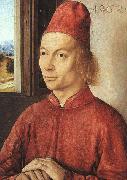

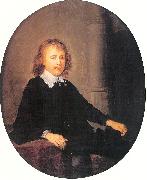
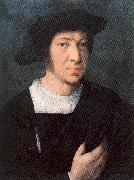
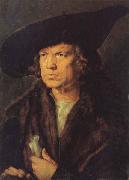
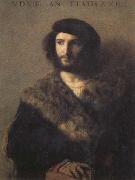

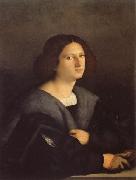
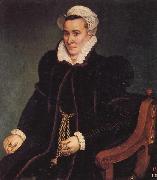
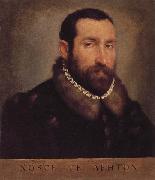
-454776.jpg)
